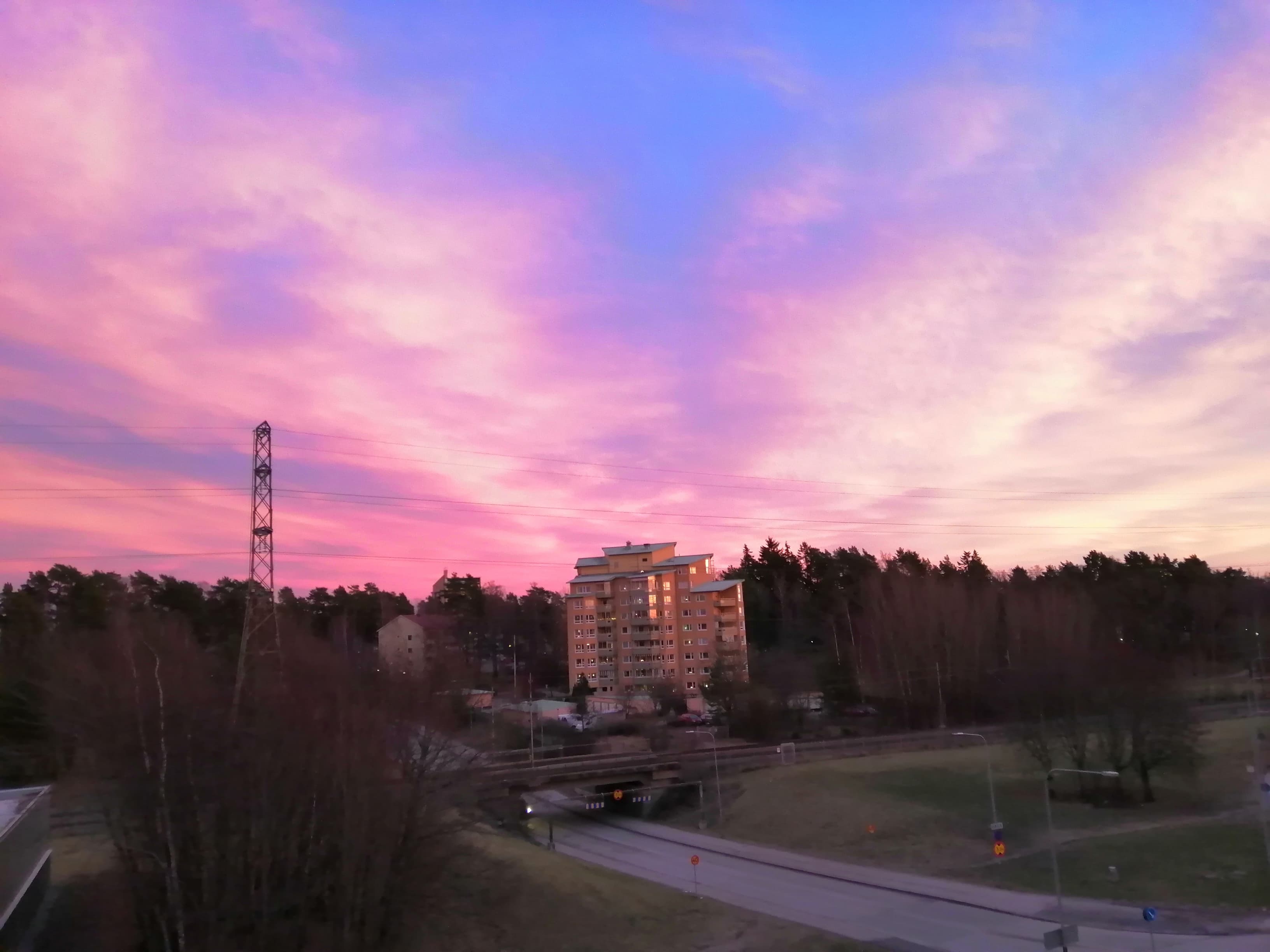Guesthouse Maksimilian Osijek Now Accepting Cryptocurrencies
August 18, 2022 - Osijek's tourism workers follow world trends to keep up with the times and, of course, to be even more competitive in the global tourism market. This is confirmed by the example of Jasmina Krkić Poznić, the owner of Guesthouse Maksimilian, in Franjevačka Street, Tvrđa, who has just announced that accommodation and stay in the facilities can be paid for with cryptocurrencies.
Glas Slavonije spoke to Jasmina. “Paying for accommodation with cryptocurrencies from now on in our boutique. In step with the times. We might be located in a historic building, but our spirit is young. Cryptocurrency players welcome #cryptocurrency #wherecanIspendBitcoin #paycek”, says as of this week the Facebook page of Guesthouse Maksimilian, which, precisely thanks to the skill and courage of its owners to always combine modern and traditional, in the past seven or eight years has received valuable recognition from travellers who ranked it among the 25 best in Croatia, among the top 10 in Croatia in terms of hospitality, and several other recognitions that gain additional meaning, because they come from guests, service users, or tourists themselves.
It is thus not surprising that Maksimilian is the first guesthouse in Osijek that allowed payment with cryptocurrencies, but also among the few in all of Croatia that decided to take that step.
“I've been thinking about this for a year and a half, actually since the possibility of paying with cryptocurrencies appeared”, says Krkić Poznić, adding that in the end, she came to the position that paying with cryptocurrencies is a “full-time job”. “I was researching models of how we could introduce the possibility of paying for our services with cryptocurrencies. I realised that cryptocurrencies are used by a very large number of people in the world, but recently also in our country and that there is a need to use them in everyday life to buy goods and pay for services, to simplify things. In the past month, the boys who prepared the technical solution and the application found me”, explains Krkić Poznić, meaning a virtual currency exchange app.
According to her, she will not see cryptocurrencies at any time.
“Unfortunately, or fortunately, I will not even see cryptocurrencies, because the guest pays with virtual currency through the application, and I receive the full amount in kuna at the same time. I don't have any contact with cryptocurrencies, the virtual exchange that takes them, and they pay me in kuna to the amount of the issued invoice. They, therefore, take on the business risk of trading cryptocurrencies” says Jasmina, emphasizing that he does not even know what model or “exchange rate” this is based on.
When asked if there is any risk of loss of value or fraud in the transaction, Jasmina says no, as the moment she issues the bill to the guest for the service used, the entire amount in kuna is credited to her account.
“If there even was a way of paying with cryptocurrencies in Croatia, I would be in trouble, because I am not familiar with the management of virtual money. On the other hand, there are more and more people who own cryptocurrencies and want to use them. In our country, too, some gas stations, retail chains, and post offices accept cryptocurrency, according to the same principle as I do. It's a local company and if big players work with them, then that's enough of a guarantee for me”, claims Jasmina.
Considering that payment with cryptocurrencies has taken off in our country, it is logical that our tourism employees adapt to the new conditions, as well as to the wishes of tourists. Those who have even a superficial understanding of the world of cryptocurrencies say that it is a simpler and far safer way of payment than when you must carry cash or cards with you. For now, the only drawback is that there are still very few places that accept “virtual money” as a payment currency.
“I don't think that there will be a big rush of cryptocurrency owners, but they should be given the opportunity no matter how much we might shy away from change. There is, however, a whole world of IT people and cryptocurrency owners who like to travel, go on excursions, and go to good restaurants. For these people, the fact that they can pay in cryptocurrencies can be the deciding factor when choosing their destination”, Jasmina Krkić Poznić concludes with satisfaction.
60 booked for autumn
Although summer is not a peak period for tourism on the continent, Jasmina was asked how this part of the season was going, and how the preparations are going for autumn, which local tourism workers are looking forward to.
This year there are just as many tourists as there were before the pandemic. There are even more domestic guests, she claims, recalling that before the pandemic, a significant number of guests in the summer period were tourists from Australia and New Zealand.
“They haven't come back yet. More domestic guests are coming, and I notice that the profile of the guests is also changing. We were rarely a destination where people would come for holidays, it was mostly about travelling. They would stay for a night on their way to the south, however, this year some tourists would stay up to three or four days. French and Italian and those who don't like crowds look for solitude and don't want to go to the sea. Such people discover us” says owner Maksimiliana with satisfaction.
She reminds us that autumn, that is, September - October, is their full season.
“We are already about 60 percent booked. Business events, meetings, seminars, congresses, conferences are starting, plus the tourist part, we are ready to welcome all our dear guests” she points out.
How good is your knowledge of eastern Croatia? Take the CROMADS test above - how many places do you recognise?
For more, make sure to check out our dedicated Travel section.
PHOTOS: Spectacular Kaleidoscope Lights of Osijek City Day and Advent 2021
December 02, 2021 – A spectacular light show exploded across Ante Starčević square in Osijek this evening, welcoming hundreds of visitors to Osijek City Day and to the opening of Osijek Advent 2021. Among those gathered to witness the colourful display was the Croatian Prime Minister, Andrej Plenković.
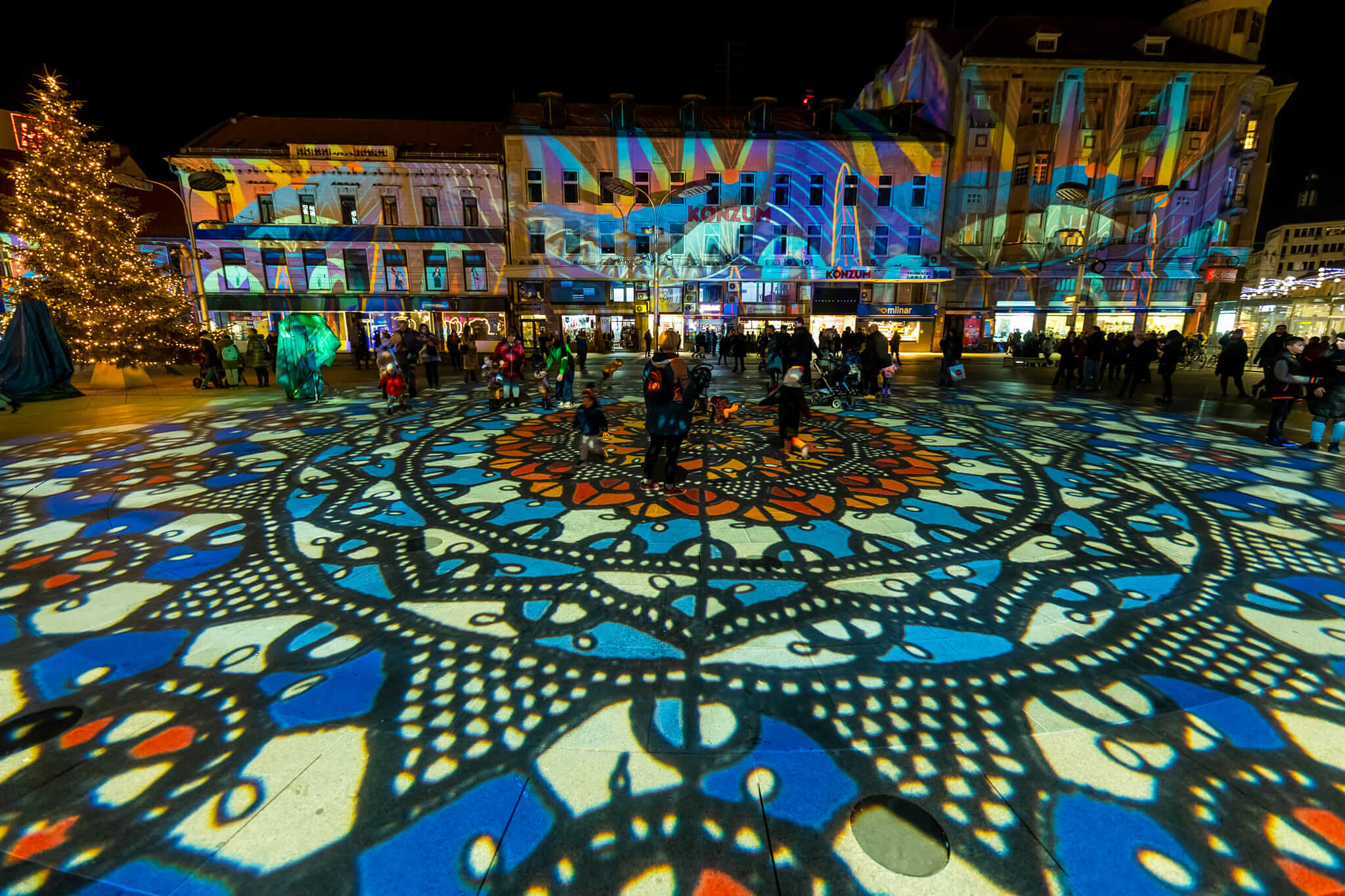 © TZ Grad Osijek
© TZ Grad Osijek
In recent times, Osijek's Ante Starčević square has seldom looked so thrilling. It is a wide and open city square - the only place in Osijek where the city tram lines all meet. Except for one modern sculpture and a statue of Ante Starčević, the square is floored with featureless concrete. The fine facades of surrounding Austro-Hungarian buildings have seen better years. In many instances, these historic frontages are cheapened by gaudy branded signage and advertisements.
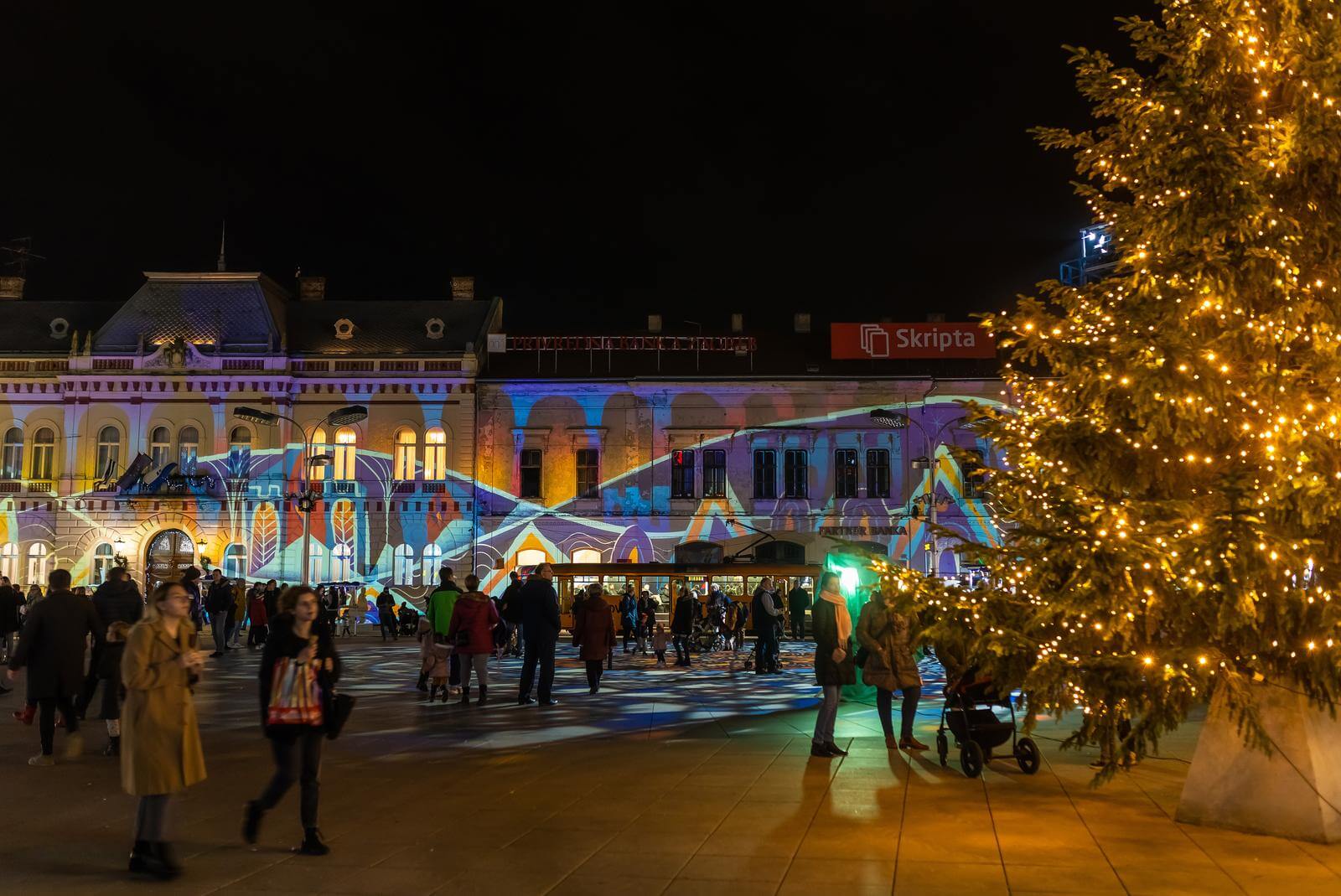 © Davor Javorovic/PIXSELL
© Davor Javorovic/PIXSELL
But, tonight, all the unsightly modern scars were hidden as an ocean of patterns and colours danced across the square. Children skipped along new pathways created by the brilliant lights' design. Now in its third year, these bright embellishments are part of the Kaleidoscope Festival of Lights. The arrival of its magical scenes heralds not only the start of this year's Osijek Advent but also marks Osijek City Day 2021.
Osijek City Day - 2 December
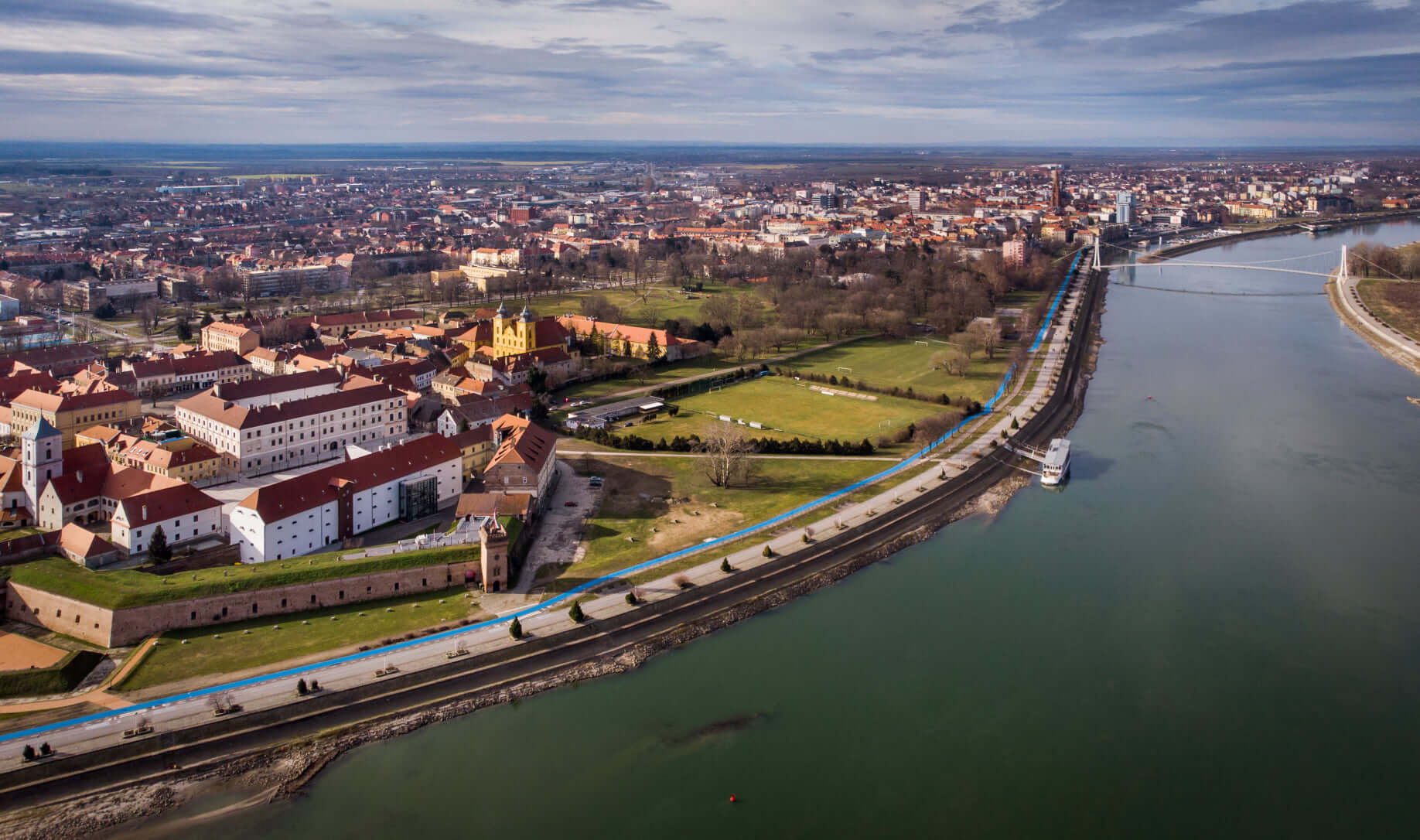 From above, Osijek's Tvrda and the Drava river © Mario Đurkić / Horizont solutions / TZ Grad Osijek
From above, Osijek's Tvrda and the Drava river © Mario Đurkić / Horizont solutions / TZ Grad Osijek
People have lived on this part of the Drava river for millennia. But, quite often, the modern life of Osijek city is only viewed as having begun after the Ottomans were removed by the Battle of Mohács. From 1687, Osijek and the eastern part of Croatia were part of the Habsburg Empire. But, Osijek remained close to the border of the new encroachment on Ottoman territory. Defensive fortresses were built along this line of defence, in Stara Gradiška, Osijek and Slavonski Brod in Slavonia and in Petrovaradin in Syrmia/Srem (Serbia).
Today, Osijek's fortress - Tvrđa – contains the largest collection of Baroque buildings in Croatia. It is a fantastic and picturesque location. There, Osijek's old city walls spectacularly overlook the Drava river. But, back when the city's defence was all-important, these walls made it difficult for Osijek to expand. Progress and growth proved impossible to hinder and, with the threat of the Ottomans becoming ever smaller, the population of Osijek simply began to settle outside the walls of Tvrđa. Indeed, today, residents of the city regard Osijek as having three centres – Lower Town, Tvrđa and Upper Town aka Ante Starčević square.
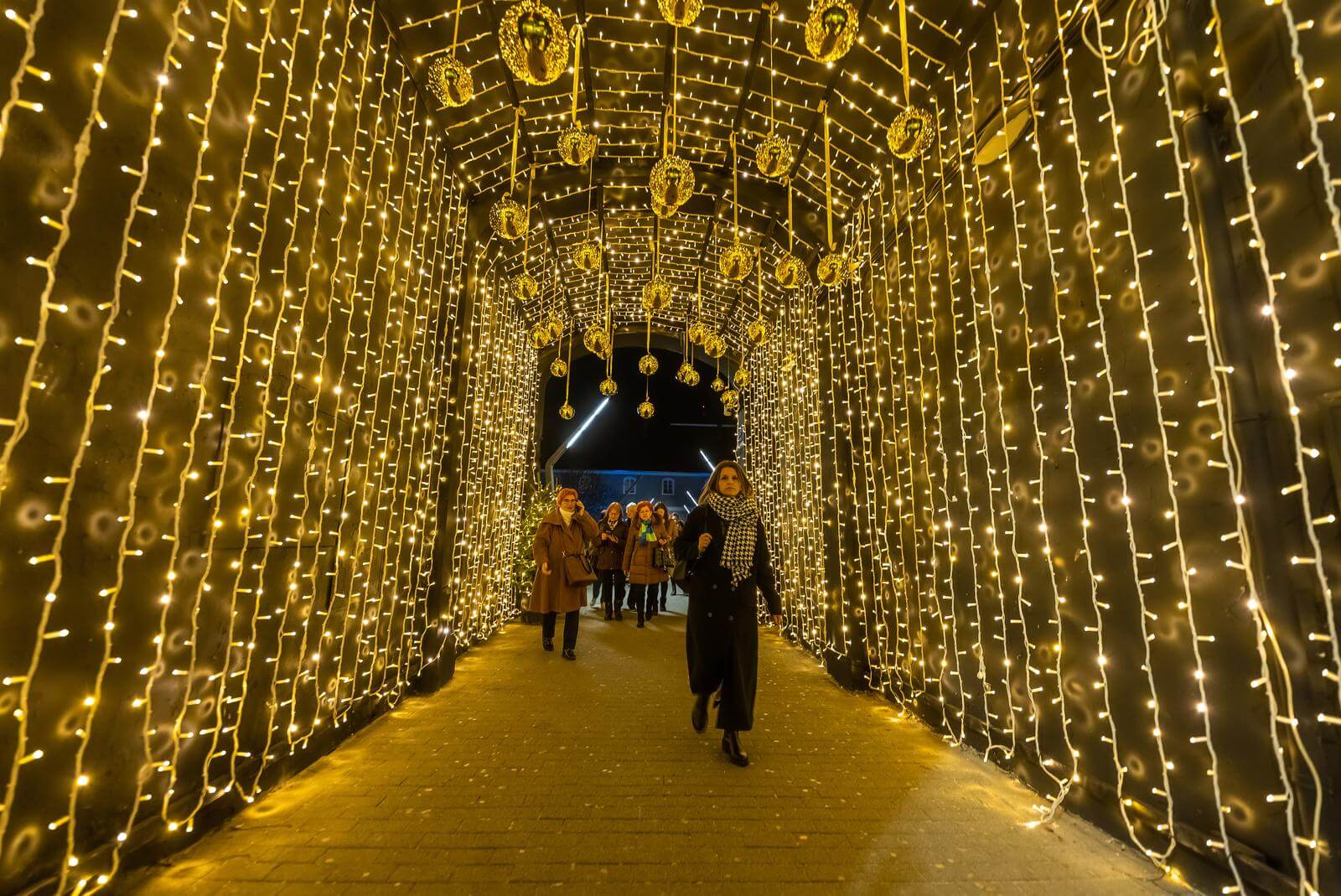 Lights in Upper Town turned on as part of Osijek City Day 2021 © Davor Javorovic/PIXSELL
Lights in Upper Town turned on as part of Osijek City Day 2021 © Davor Javorovic/PIXSELL
At the beginning of the 18th century, separate magistrates resided over Osijek's Lower and Upper Towns, effectively marking them as independent city municipalities. In order to gain status as a free and royal city, local authorities were eventually persuaded to unify the different municipalities on 2 December 1786. Since then, 2 December has been celebrated as Osijek City Day.
Kaleidoscope Festival of Light and Osijek Advent 2021
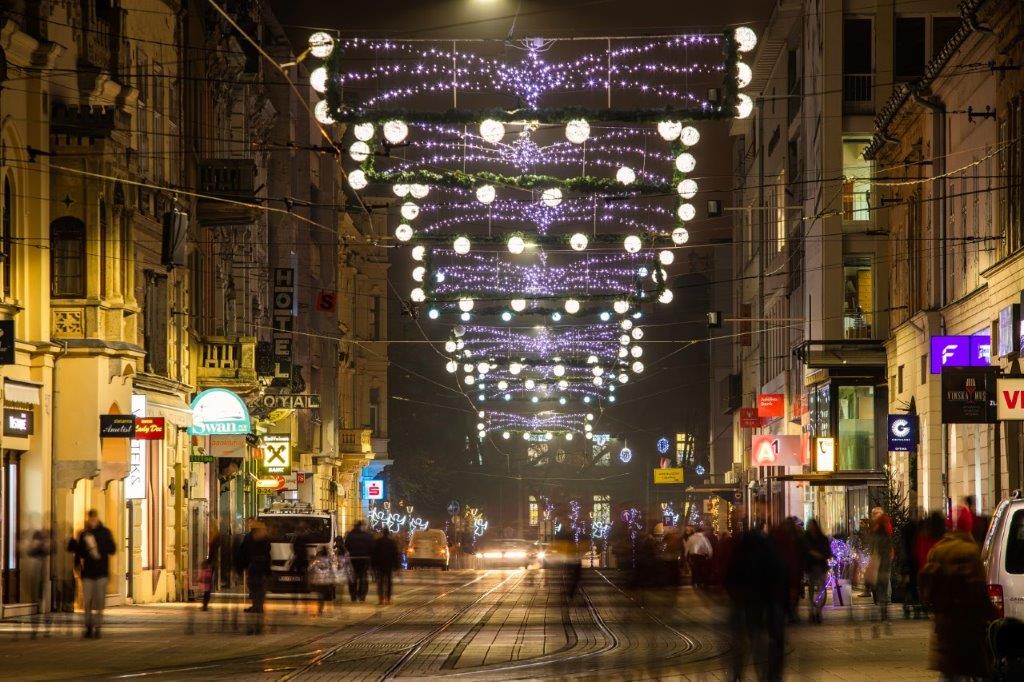 © TZ Grad Osijek
© TZ Grad Osijek
The incredible light show on Ante Starčević square is just one part of an Advent manifestation that, like the city itself, stretches long down the side of the Drava river.
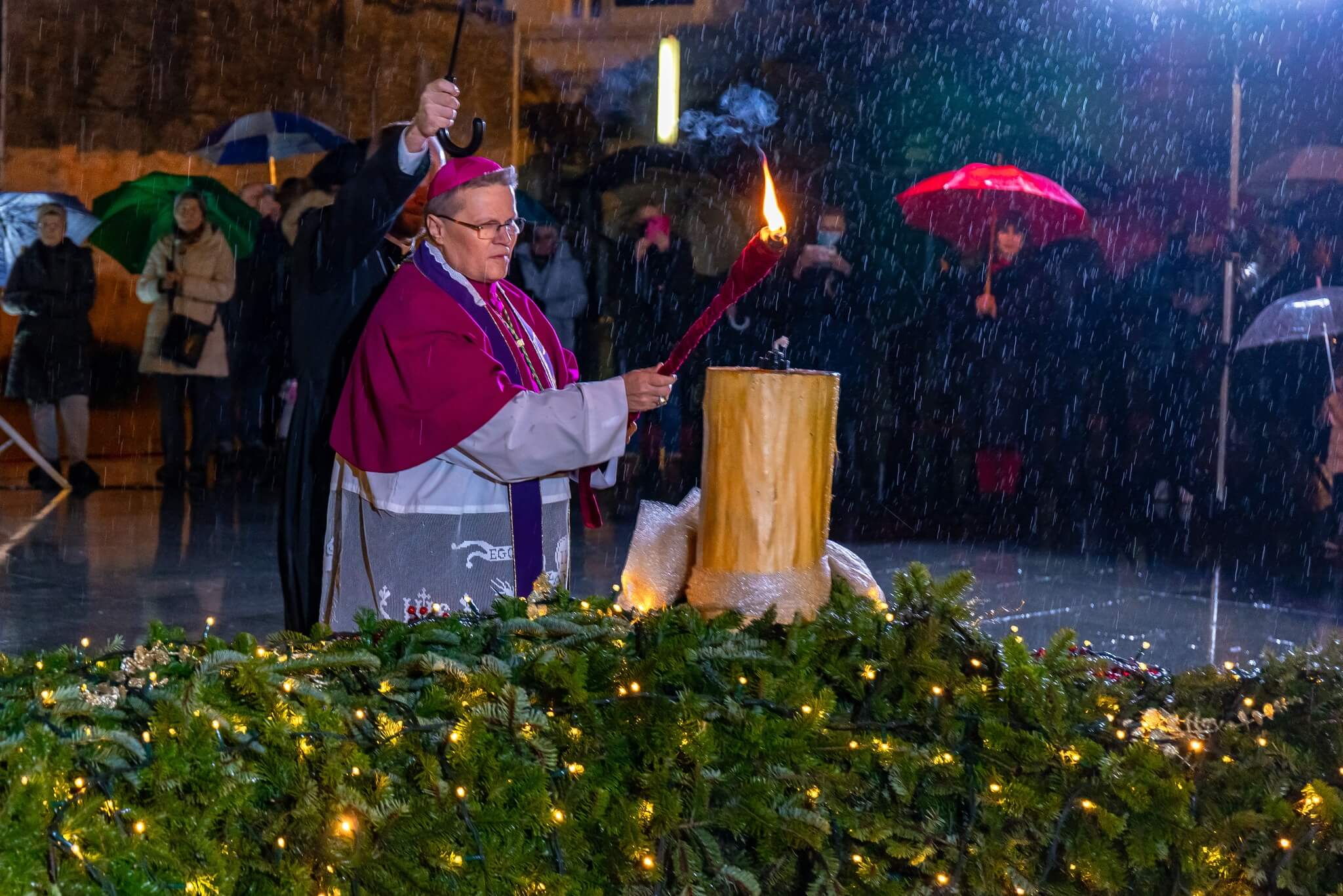 © TZ Grad Osijek
© TZ Grad Osijek
The first candle of Advent 2021 was lit by the Archbishop of Đakovo-Osijek Đuro Hranić on Sunday 28 November. Osijek City Day celebrations are the second key milestone of the Christmas holiday season. City-wide Christmas lights were formally turned on today at the Croatian National Theatre Osijek.
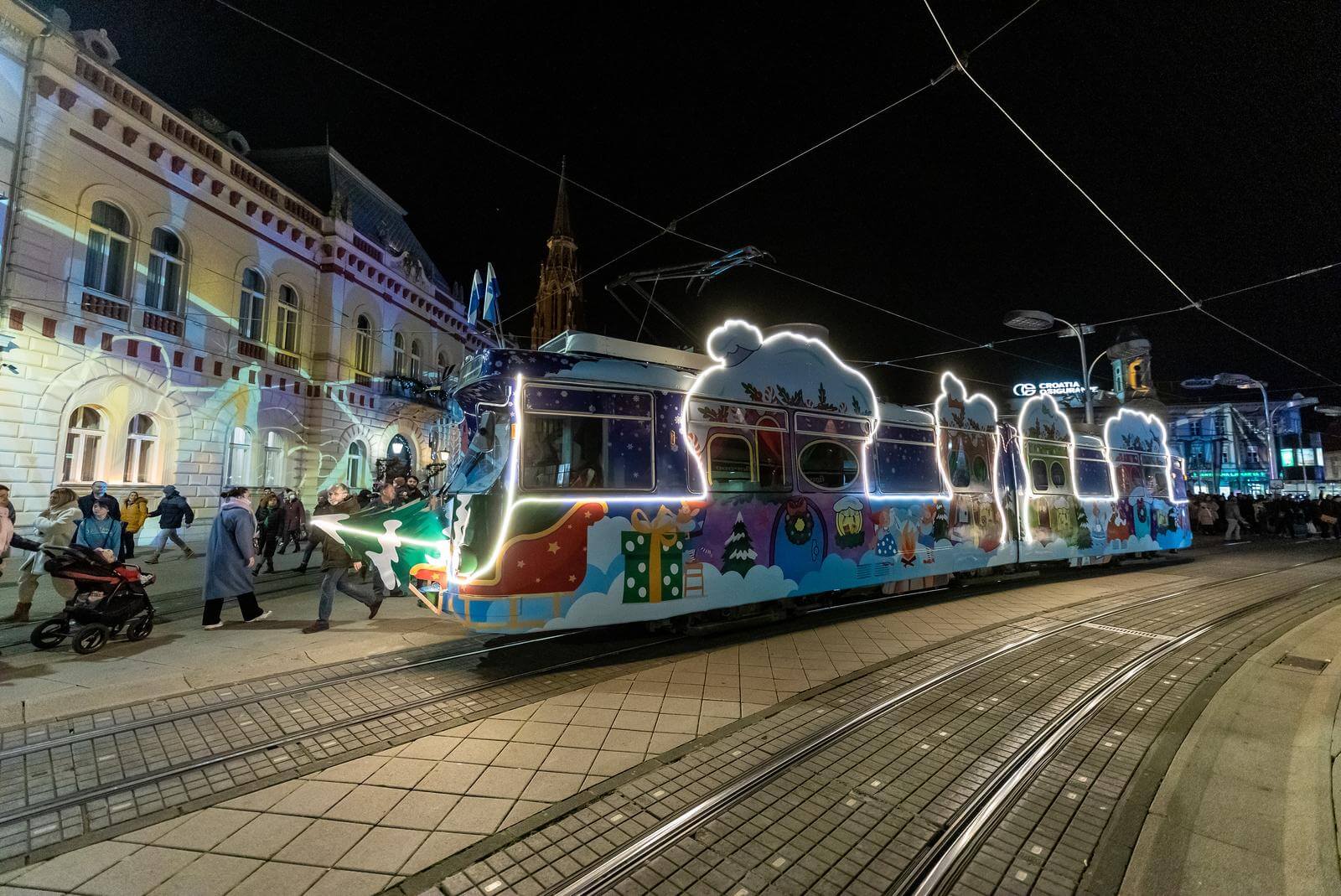 © Davor Javorovic/PIXSELL
© Davor Javorovic/PIXSELL
Osijek Advent 2021 includes the return of the Kaleidoscope Festival of Light and Osijek Advent Tram - which is visited by almost 15,000 people each season. Christmas lights extend down European Avenue, passing some of the city's most grandiose Austro-Hungarian architecture. Thereafter, the trail comes 'off road' and takes you through the trees of King Tomislav Park. Next, Tvrđa assumes the focal point of Advent, with a Winter Lookout on the roof of the Cultural Centre, the Museum of Fine Arts, the Sokol ice rink and the tallest Ferris Wheel in Croatia being key highlights.
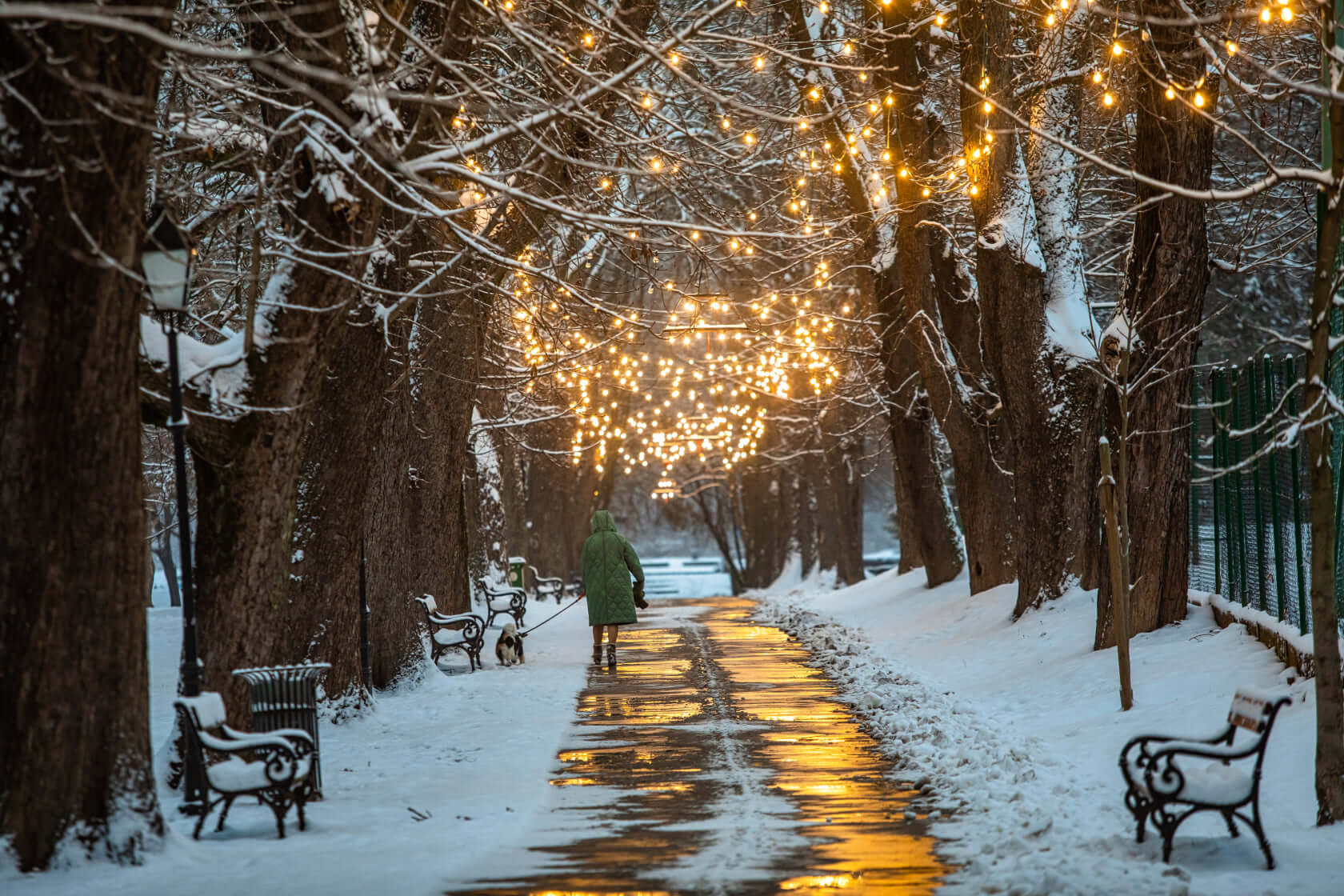 Photo from Osijek Advent 2020 © TZ Grad Osijek
Photo from Osijek Advent 2020 © TZ Grad Osijek
If you want to read more about Osijek, see the Total Croatia guide here. And, if you want to keep up with news from Osijek, bookmark Total Croatia News's Osijek pages here
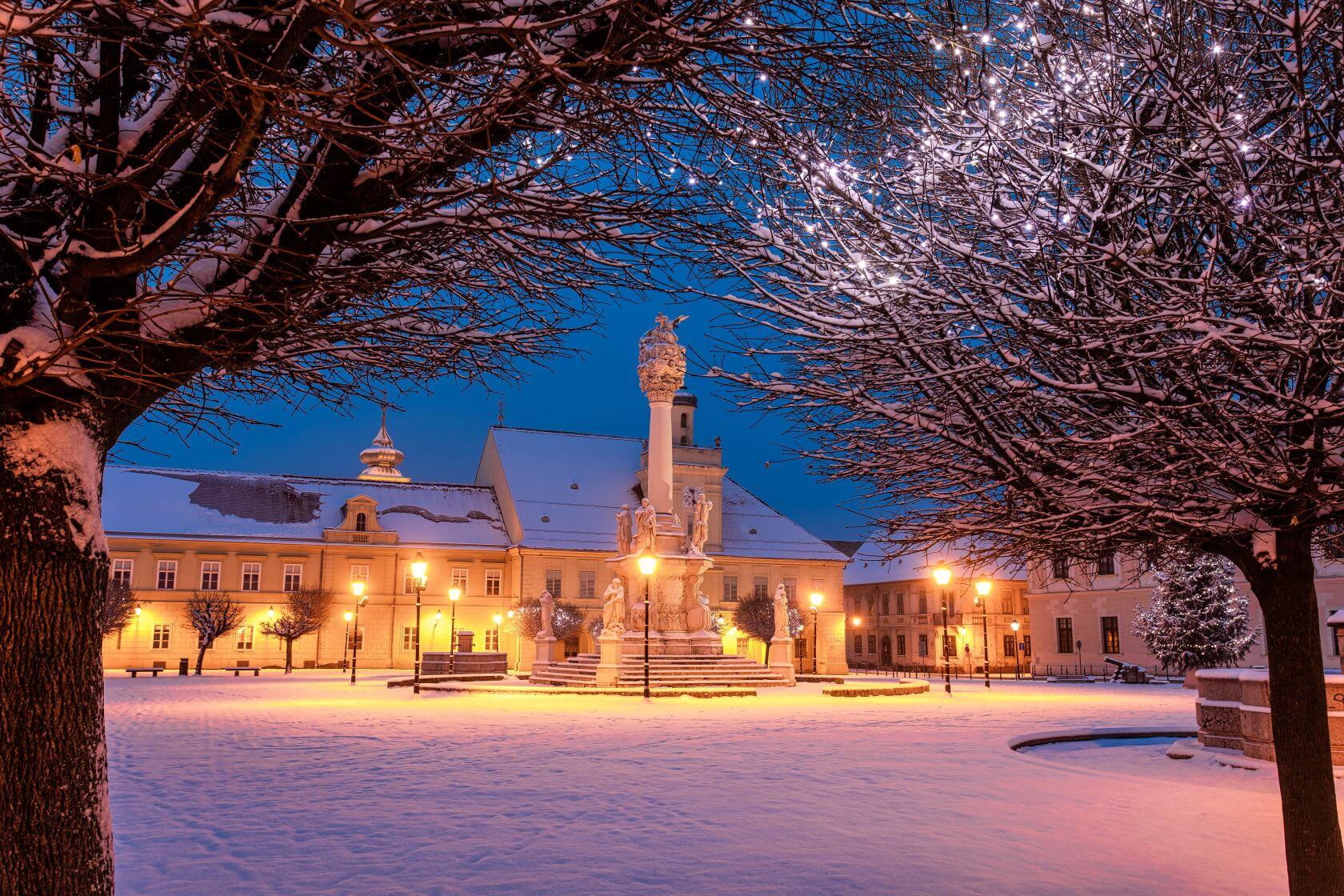 Photo from Osijek Advent 2020 © TZ Grad Osijek
Photo from Osijek Advent 2020 © TZ Grad Osijek
Discovering Authentic Croatia's Secrets With Seoski Tourism
November 4, 2021 – Village tourism or countryside tourism - Seoski tourism in Croatia - offers authentic, traditional experiences. Aleksandra Kuratko, secretary of Udruga ruralnog turizma Hrvatske (Croatian Rural Tourism Association) tells us more about it, and their work to help facilitate it
Croatia's visitor offer is evolving and expanding. There are exciting aspects of authentic Croatia to be discovered. Away from the beach, villages inland often look remarkably similar to how they did one hundred years ago. There, crops are grown and produce made in ways passed down through generations of families. And, in some lucky instances, these family farmers are willing to open their doors, invite you inside and show you how they live.
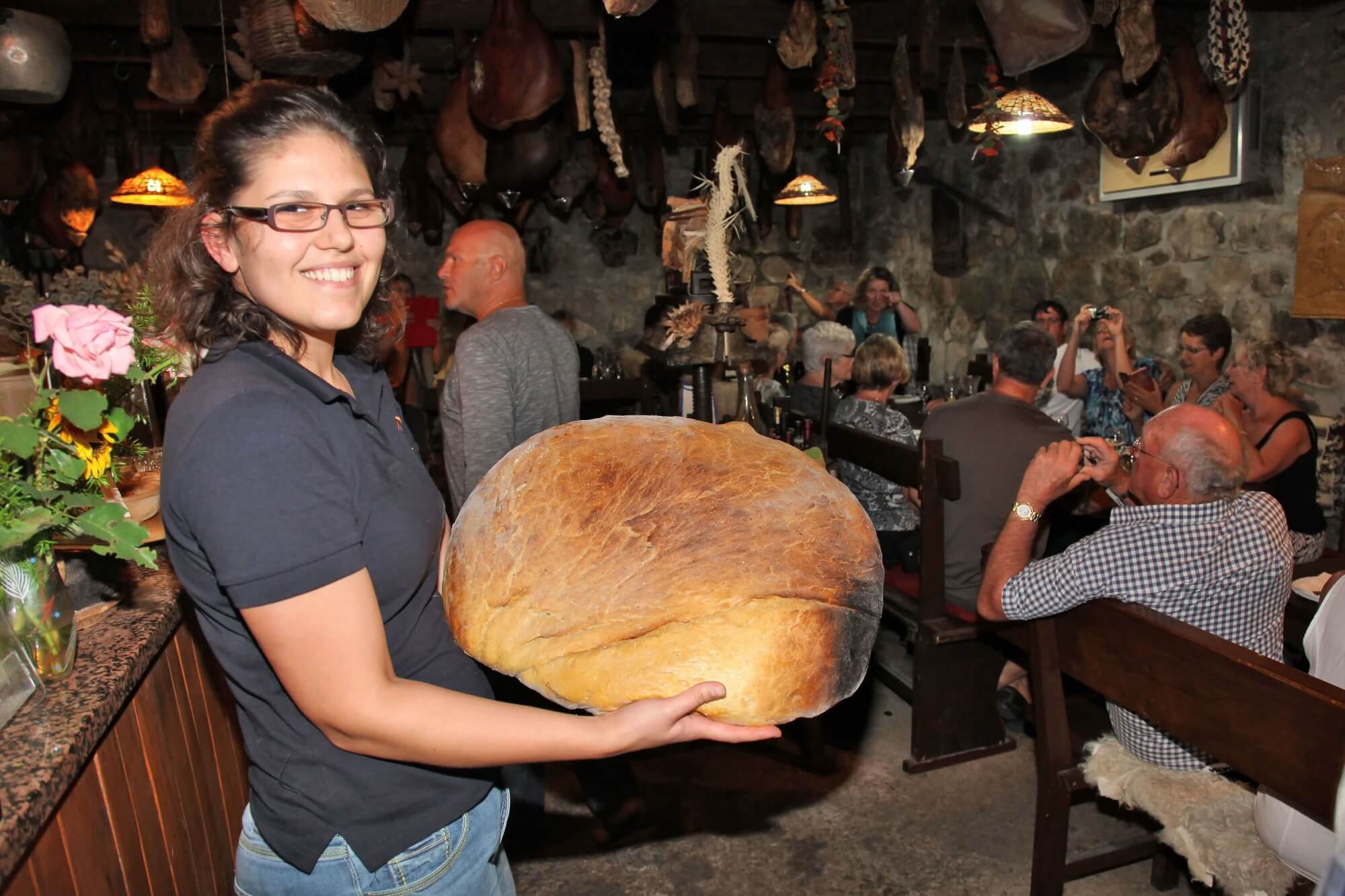 Bread from the peka at Agroturizam Antunović on Pelješac
Bread from the peka at Agroturizam Antunović on Pelješac
Seoski Tourism – translated as either village tourism or countryside tourism – is just that. Family farms that offer hospitality. These are some of the most homely and most welcoming accommodation experiences you can have in Croatia. Offering sights and sounds, tastes and flavours that you can't find anywhere else, visits or stays in Seoski Tourism places have long been loved by locals for weekend breaks or holidays outside peak summer. But, increasingly, these authentic Croatia experiences are being discovered by international visitors.
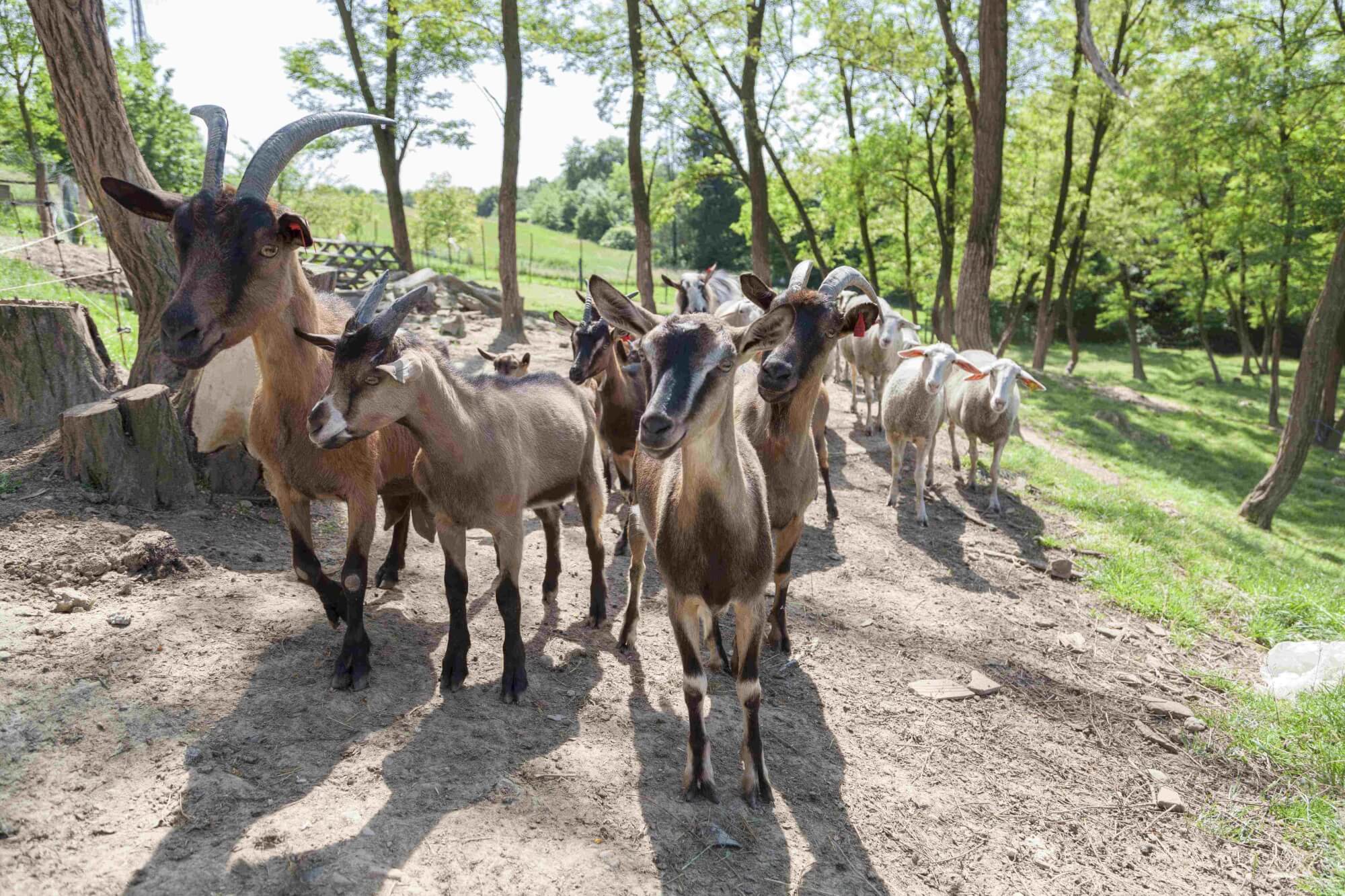 Moslavina goats at Kezele family farm © Davor Konjikušić
Moslavina goats at Kezele family farm © Davor Konjikušić
One institution trying to facilitate the growth in interest is Udruga ruralnog turizma Hrvatske - Croatian Rural Tourism Association. Since it was formed in 2016, they have tried to bring together Croatia's family farm hosts, to promote them and educate them, and to build bridges between these independents and tourist boards, tourist agencies, educators and even the wider world outside Croatia.
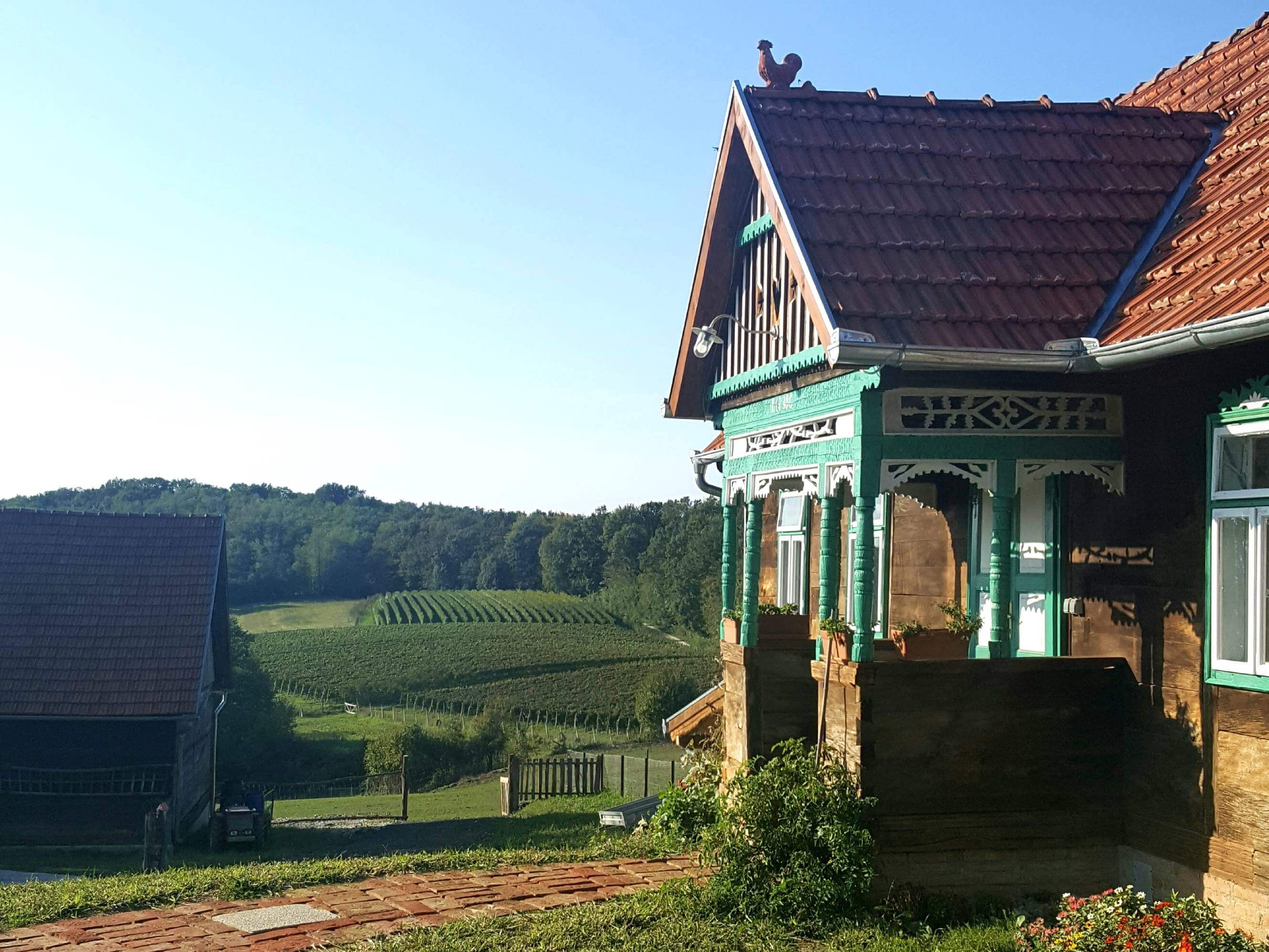 Seoski turizam Kezele in Šumećani, on the border of Zagreb County and Bjelovar Bilogora County © Davor Konjikušić
Seoski turizam Kezele in Šumećani, on the border of Zagreb County and Bjelovar Bilogora County © Davor Konjikušić
Based in Ivanić-Grad, Zagreb County, the Croatian Rural Tourism Association is currently touring the length and breadth of the country, holding workshops with as many Seoski Tourism family farms that will come. And if the farmwork doesn't allow them free time, then they can attend Croatian Rural Tourism Association workshops online.
On the eve of the association's online Seoski Tourism workshops for Central Croatia and Slavonia, TCN interviewed Aleksandra Kuratko, secretary of Udruga ruralnog turizma Hrvatske, to find out more about Seoski Tourism in Croatia.
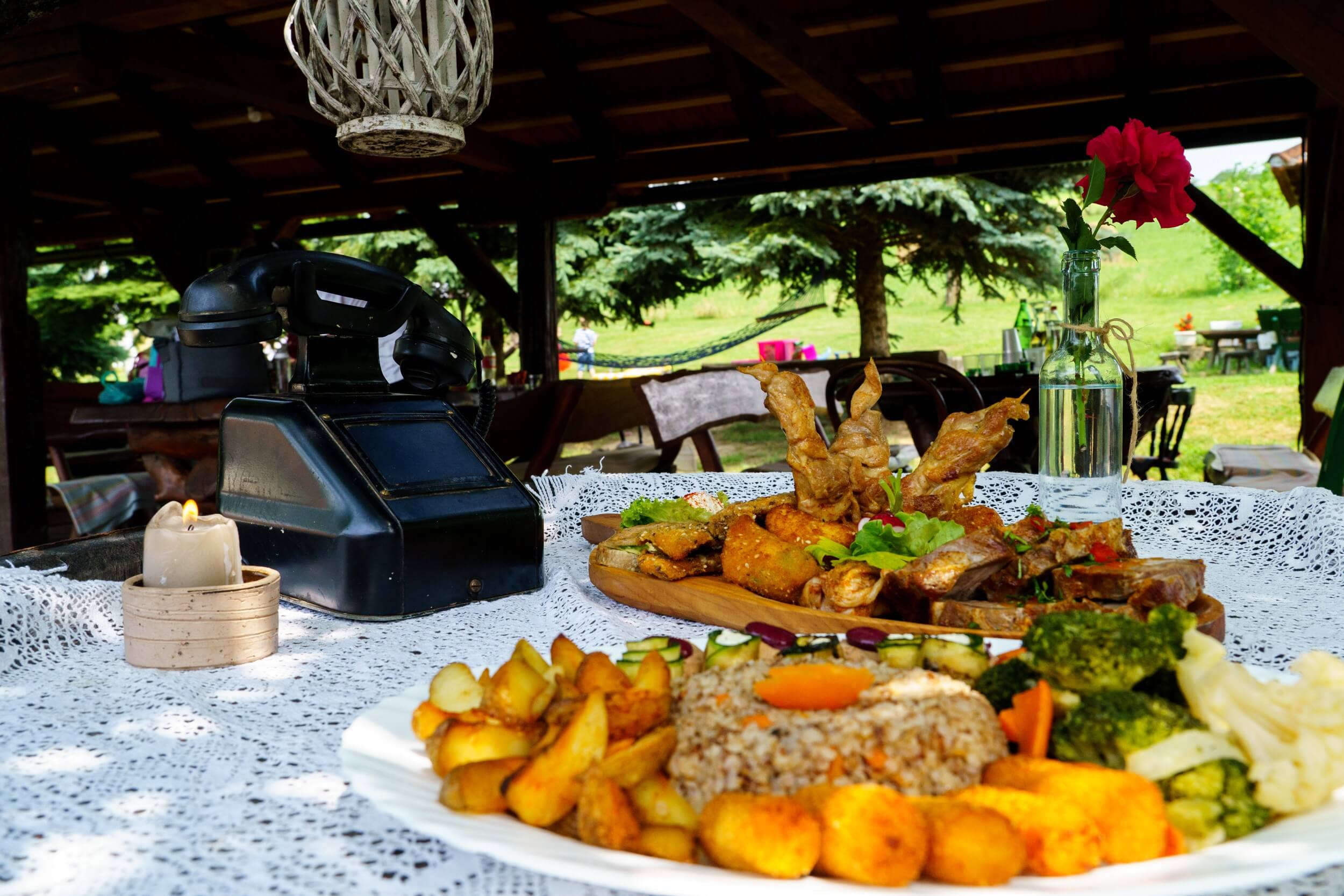 Prigorje specialties at Rakić family farm
Prigorje specialties at Rakić family farm
My name is Aleksandra Kuratko and I am secretary of Udruga ruralnog turizma Hrvatske. As an association, we are 5 years old.
We have 35 members, most of whom are service providers in what we call Seoski Tourism. We also have several tourist boards and two educational institutions as members.
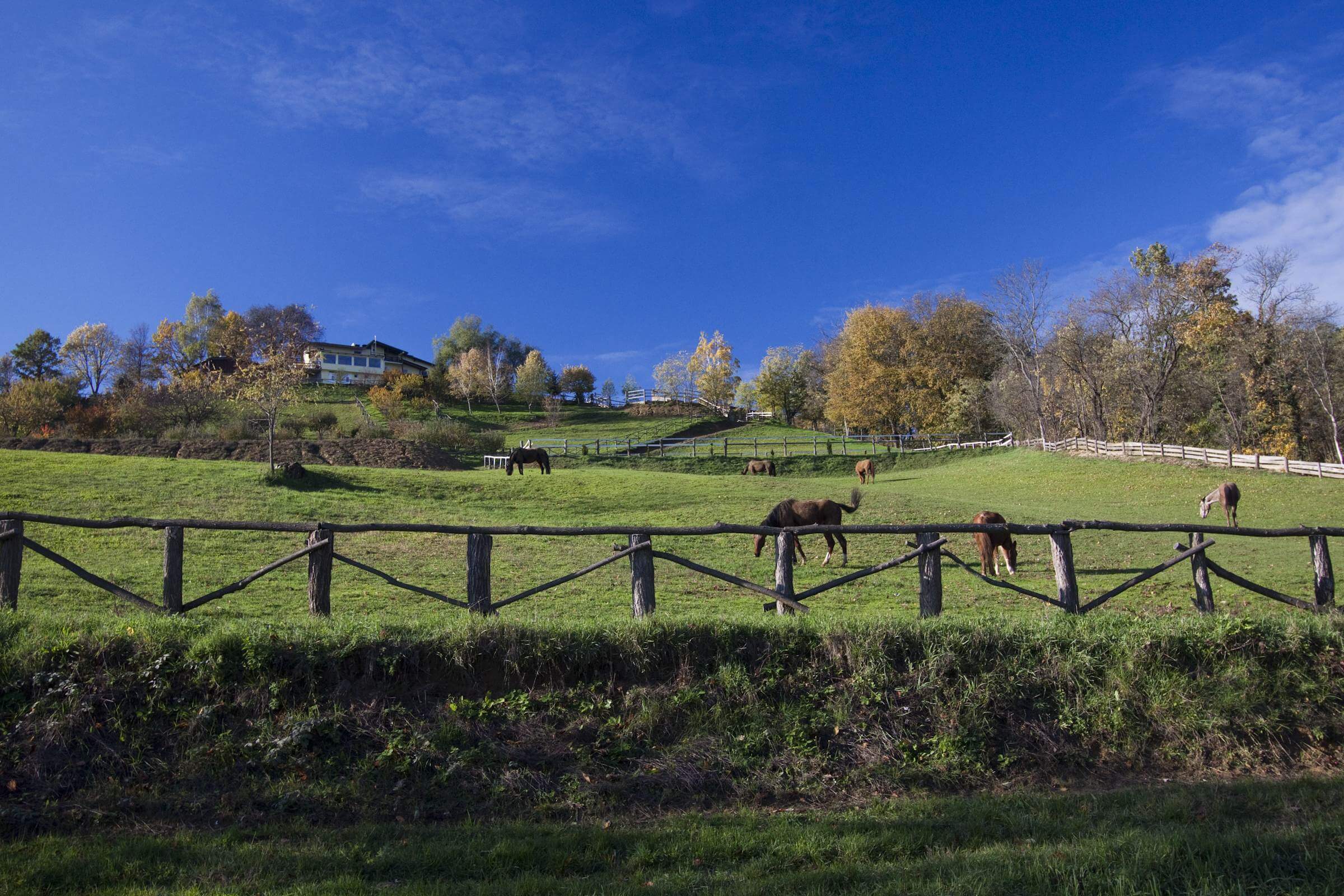 Bilogora horses in autumn at Agroturizam Na malenom brijegu © Vladimir Vlajinić
Bilogora horses in autumn at Agroturizam Na malenom brijegu © Vladimir Vlajinić
Seoski tourism is not quite the same as rural tourism, because rural tourism is many different types of tourism that happen in rural areas. Seoski tourism - which you might translate as village tourism - is quite specific. We assemble people who work in agriculture and who, at the same time, are also offering hospitality. In English, you might call them Farm Stays. Or Agro-tourism – a merging of agriculture and tourism.
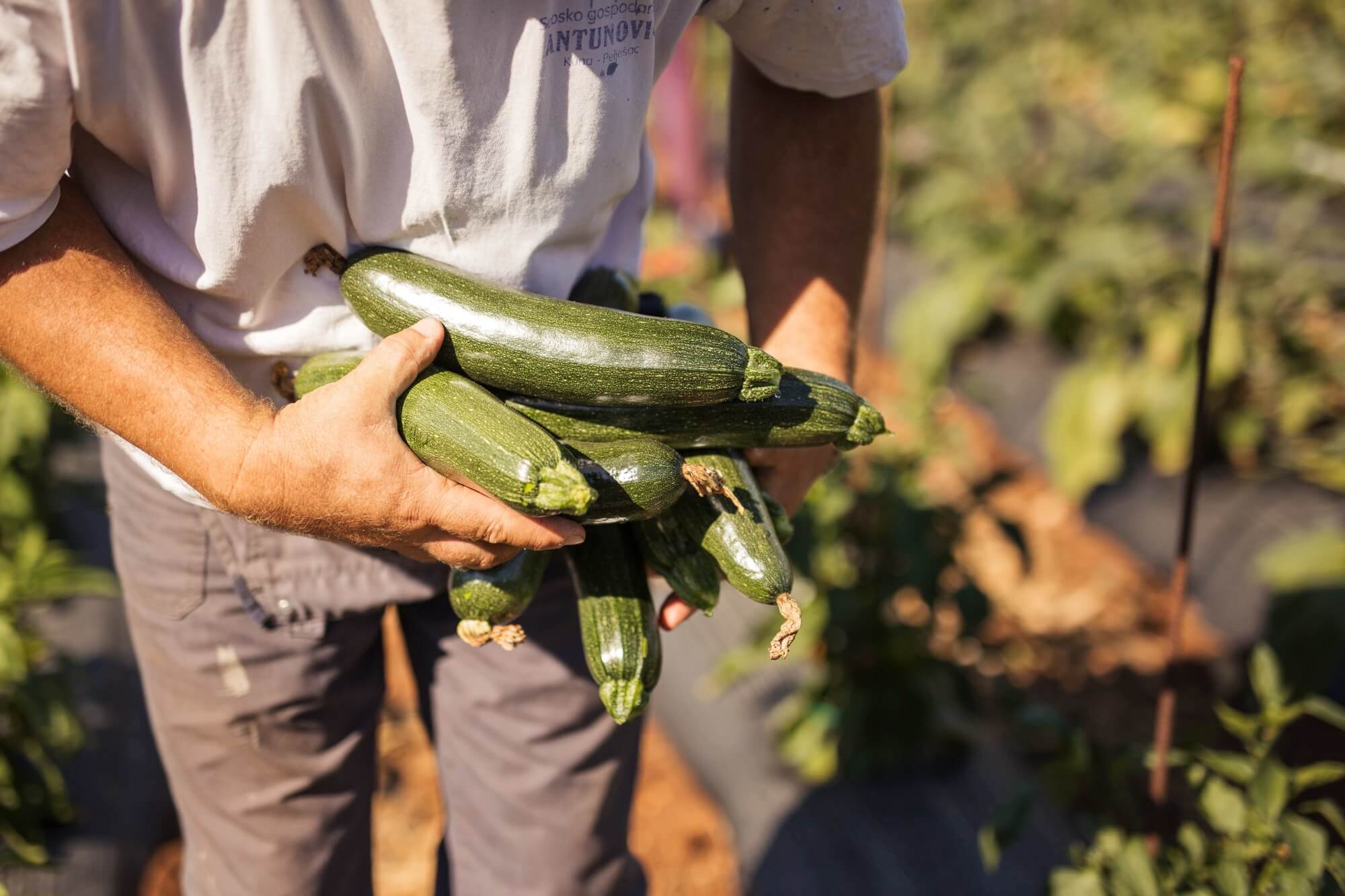 Fresh vegetables at Agroturizam Antunović on Pelješac
Fresh vegetables at Agroturizam Antunović on Pelješac
People who work on agricultural estates often take care of local cultural heritage. For example, they might maintain and renew traditional wooden or stone houses. Many also have etno collections, in which they preserve different objects from their region. Some of these objects might have been used in agriculture and households hundreds of years ago. So, they are preserving the cultural heritage of Croatian villages. This is what we call material cultural heritage. But, there's another kind.
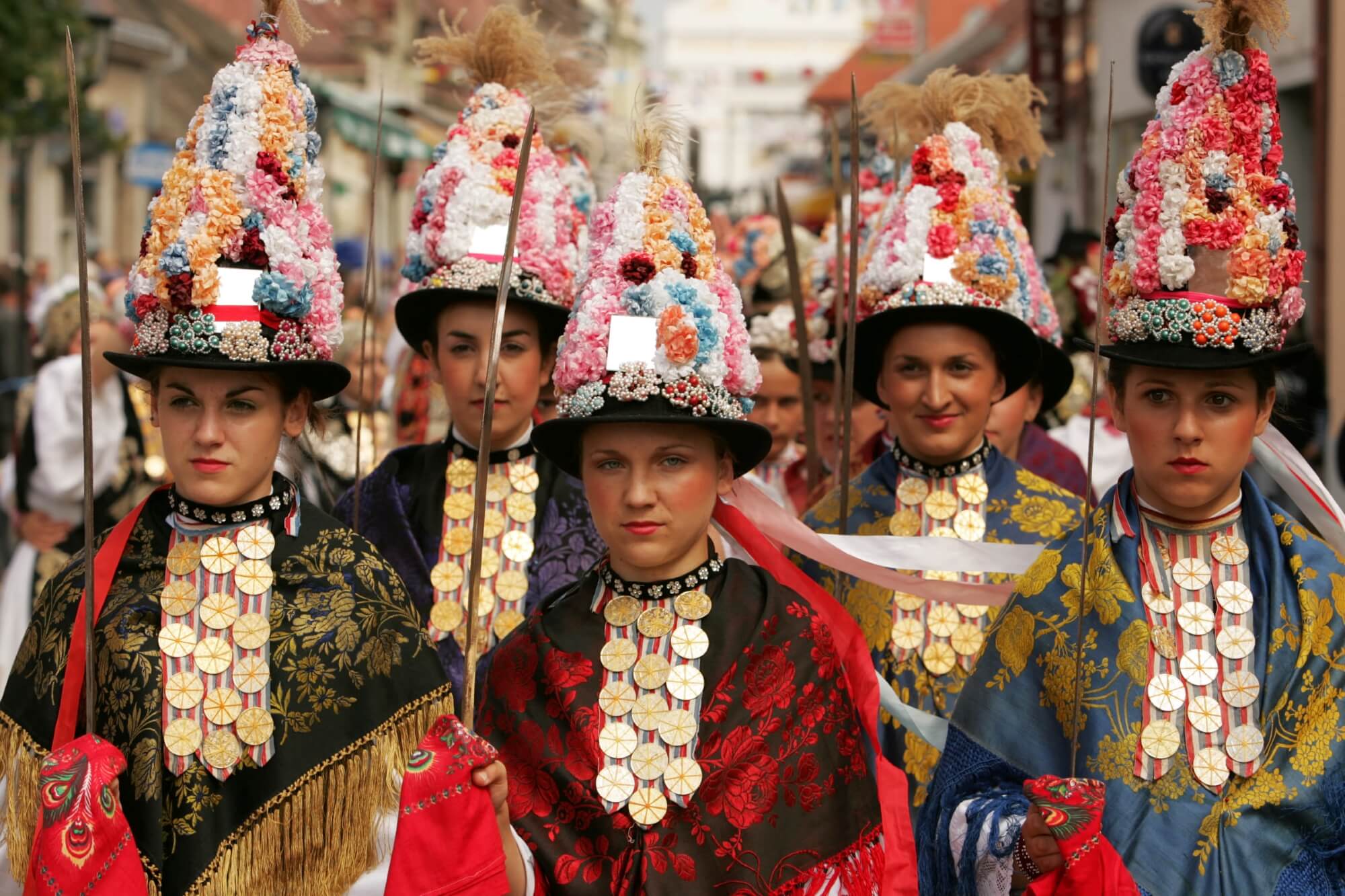 Cultural heritage preserved in one Slavonian village © Mario Romulić
Cultural heritage preserved in one Slavonian village © Mario Romulić
Non-material cultural heritage is also a part. That might be preserving old recipes of traditional, regionally-specific dishes. Or, it might be showcasing the songs and dance of local music.
We are currently running a project which is supported by the Croatian Ministry of Tourism and Sports in which we hold 37 Seoski Tourism workshops in the field all over Croatia. There will also be around 15 online workshops. The workshops are aimed at colleagues who currently operate in Seoski Tourism – they work in agriculture and offer hospitality. Also invited are local tourist boards and local action groups.
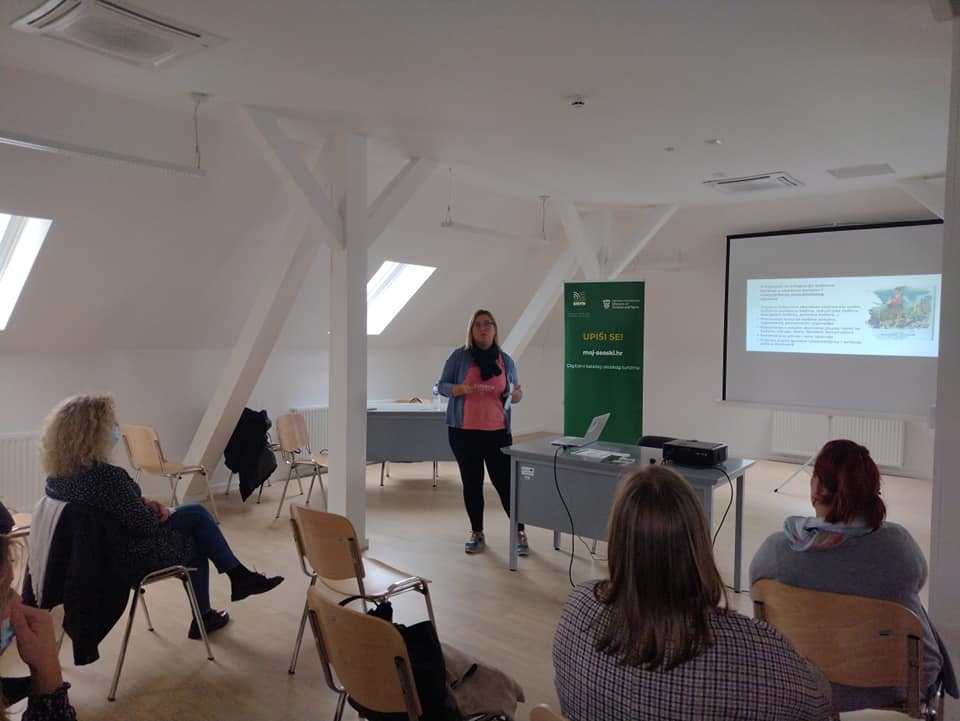 Photo from URTH workshop in Slatina
Photo from URTH workshop in Slatina
So far, we conducted 20 workshops in the regions of Central Croatia, Slavonia and Baranja, and Podunavlje. From next week until the end of the year, we will conduct the workshops in Istria, Kvarner, Lika and Dalmatia. Some service providers were not able to attend earlier workshops, because of work commitments of Covid. So, we decided to also offer access to the workshops online. Tomorrow is our first online workshop for Central Croatia and on Friday it's the online workshop for Slavonia.
These workshops are interactive discussions between our association, service providers and all other stakeholders. We discuss the legislative framework, which can be extremely complex. We talk about new trends in tourism for the post-pandemic era. We also discuss the importance of integrating cultural heritage in digital promotion.
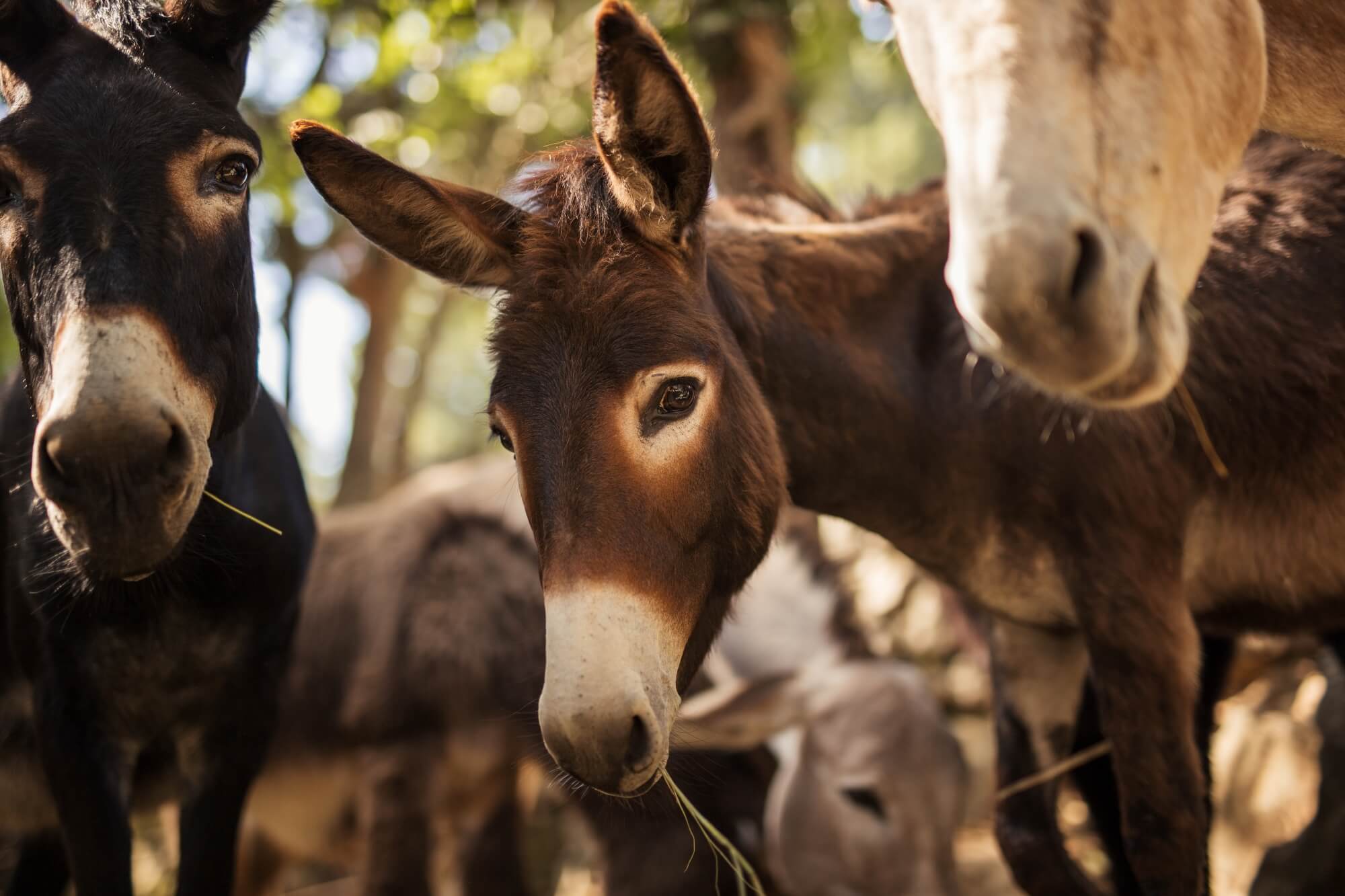 Donkey farm at Agroturizam Antunović on Pelješac
Donkey farm at Agroturizam Antunović on Pelješac
For the legislative framework, we have initiated the formation of a working group for the development of Seoski Tourism, which is now operating in the Croatian Ministry of Tourism and Sports. So, at the workshops, we ask if anyone is having issues. We collect the responses and address them in the working group.
Part of the workshop is the presentation of a new web application of Seoski Tourism, which we have developed with Croatian Ministry of Tourism and Sports. It has two purposes. One is to create a digital catalogue of Croatian Seoski Tourism. You can see region by region some of the Seoski Tourism options – currently around 40, those who have already enrolled.
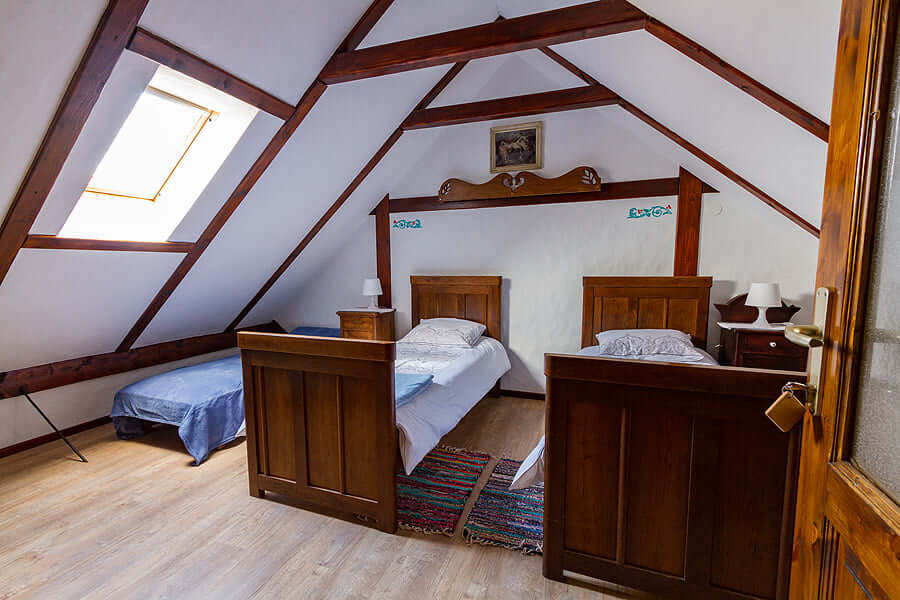 Podravina Etno rooms at Zlatni klas Otrovanec
Podravina Etno rooms at Zlatni klas Otrovanec
A version of the app is currently available on the website of the National Tourist Board. But, they are building a new website. The forthcoming version of the catalogue will likely be more user-friendly with many more functions and options. On the new website, Croatia's Seoski Tourism options will be detailed in many different languages. It should be a great resource not only for tourists but for travel agencies, journalists like you and for educational institutions. That's the reason we are devoting time in our workshops to encourage Seoski Tourism providers to enroll. We are just at the beginning of the process.
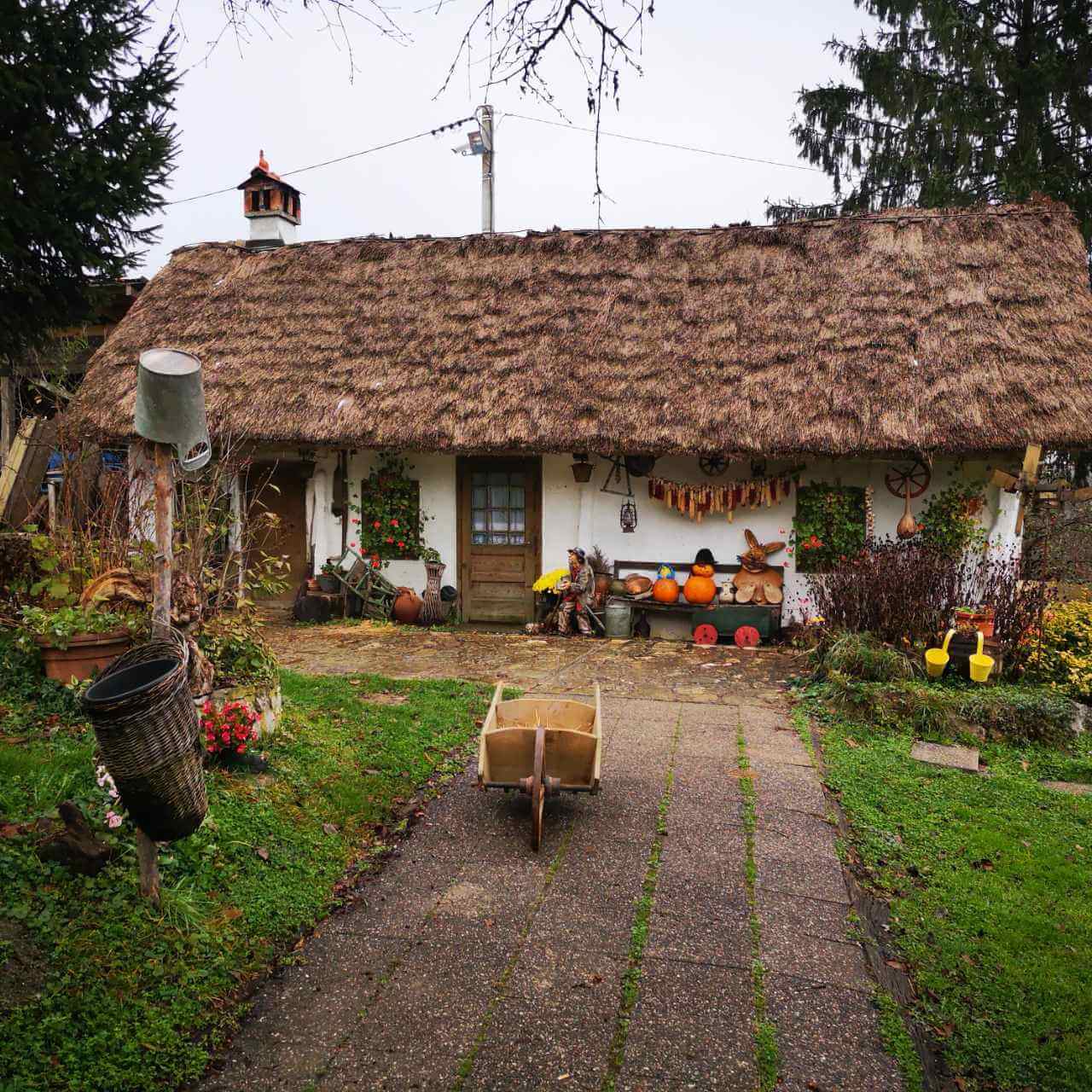 Grešna pilnica in Zagorje © Jasna Podboj
Grešna pilnica in Zagorje © Jasna Podboj
The second purpose of the app is to collect information about the service providers. This info will be used by our working group when defining a Croatian model of Seoski Tourism. So far, we have taken examples from Slovenia, Italy and other countries that are successful with Seoski Tourism. But, these models were entered into our legislative system without fully considering our distinct business and cultural environments. That is now about to change.
We are very happy that, following many years of partially successful advocacy, there is now political will at a ministerial level to really shape things up, to change the laws and regulations in order to facilitate Seoski Tourism. We want to encourage more Seoski Tourism, not to have people from agriculture being turned away because of the difficulty of the process and bureaucracy.
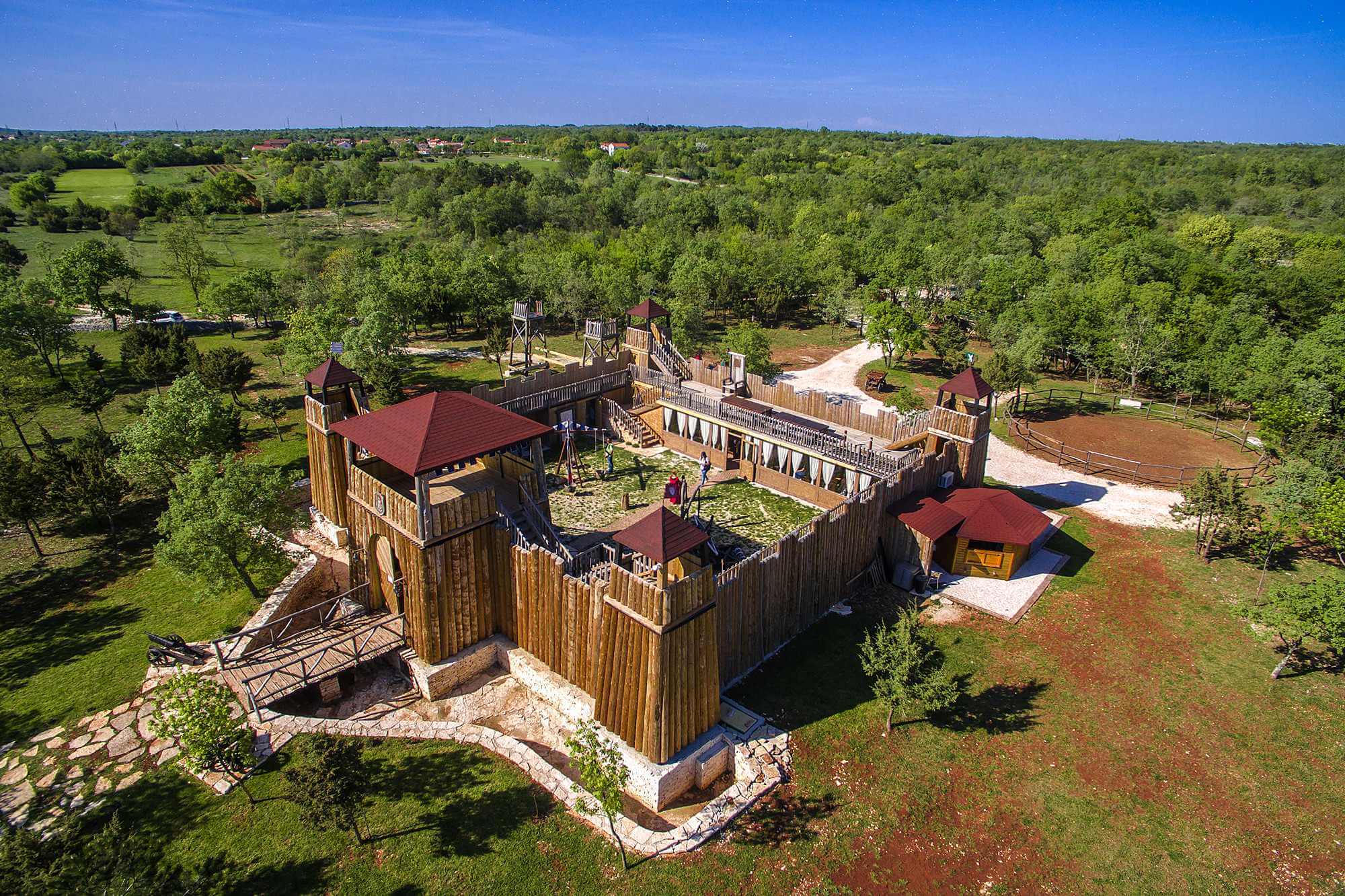 Medieval Theme Park San Michael © Silvia Otočan
Medieval Theme Park San Michael © Silvia Otočan
You said part of the workshops will focus on new trends. What are some of these?
Research has been done by a working group that is developing a new tourism strategy for Croatia. It's called Strategy for Sustainable Tourism to 2030. Under the auspices of this group, a number of research fields have been analysed.
The collected data shows that a huge percentage of tourists are now more inclined to eat locally grown and healthy food. They want to spend their time on estates that are run in accordance with ecological principles. So, they really care about issues like how waste is disposed of etc. They also pay a lot of attention to culture. They are curious to learn exactly how we are living, how we are working and how we produce things. They want to learn about our society and culture. And, importantly, they really care about how they spend their money. Above all, they want to spend money in areas that can help support local communities.
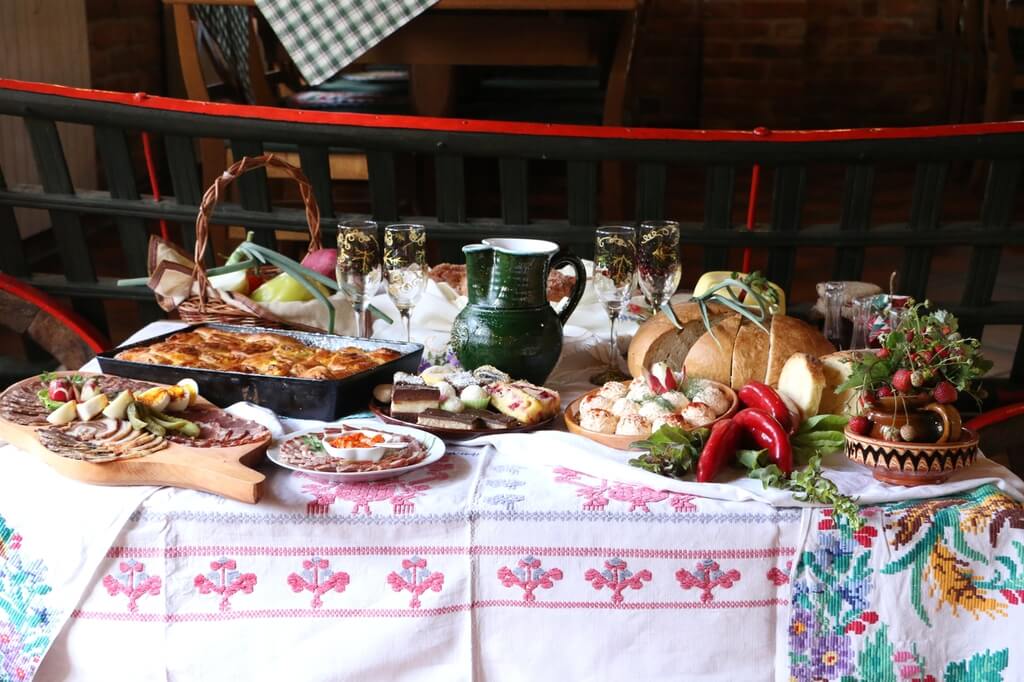 Prigorje Breakfast at Rakić Family Farm
Prigorje Breakfast at Rakić Family Farm
For us, this is really important. Because Seoski Tourism answers these demands to an incredibly high level. We do produce local, healthy food. Not only on the agricultural estates where you can experience Seoski Tourism, but also from their neighbours who just do agriculture. We are concerned with ecology, we protect cultural heritage and the money spent in Seoski Tourism stays in local communities, where it has very beneficial effects.
In the digital promotion part of the workshops we are trying to persuade people about the importance of their online presence. Basically, these days, if you're not online, it's almost like you don't exist. So, we try to explain the importance of having good-quality photos, short videos and a regular online presence.
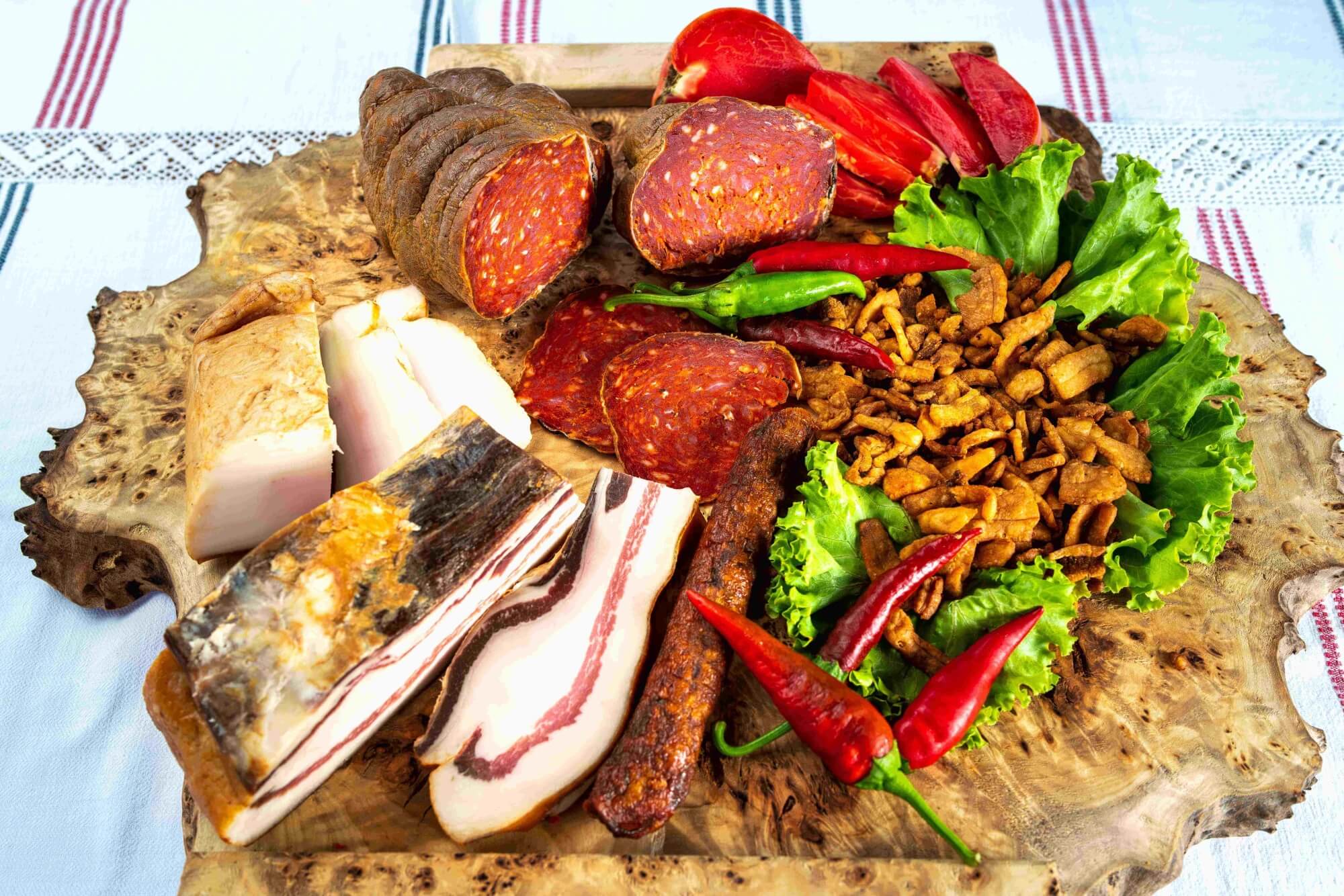 Kulen, čvarci and other specialties at Baranjska kuća © Denis Despot
Kulen, čvarci and other specialties at Baranjska kuća © Denis Despot
That's interesting. In some cases, it might be like two different worlds colliding - people who work in a traditional industry and a traditional environment having to adapt to a very modern way of operating. There's also another potential collision when providers learn of the expectations within modern tourism. Because these people can no longer just work in agriculture. To operate in Seoski Tourism, you're also very much expected to also be a host.
Yes. All of our current service providers who are successful within Seoski Tourism are also great hosts. It's essential. You can see it in almost all of the reviews for this kind of tourism. Guests come for the food and drinks and surroundings, yes. But, what they value the most, what they remember the most, is the host part of the experience. On the estates of Croatian Seoski Tourism, guests are welcomed like family. Across all of Croatian tourism we are expected to be good hosts. It's part of our reputation and the reason why many people come here from all over the world. In Seoski Tourism, it is vital we live up to those expectations.
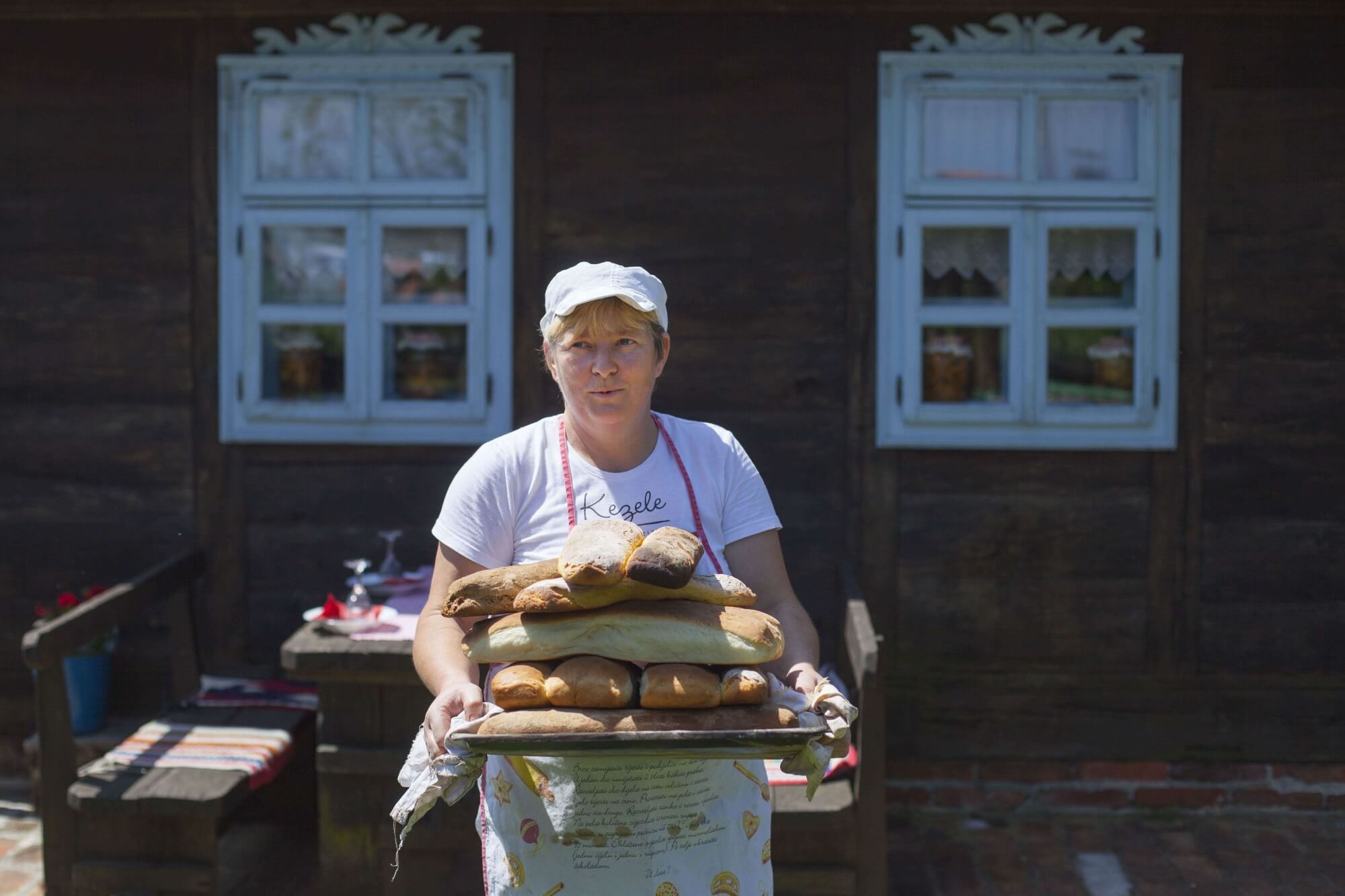 Kezele family farm © Davor Konjikušić
Kezele family farm © Davor Konjikušić
Another aspect of this, which is a more recently-observed element, is that visitors often want an insight into the actual lives, even the personalities of their hosts. They want not only to taste the homemade sausages you make, but they also want to know how you do it, where you do it, how you learned to do that. When they go to Spain, they want to know how the people there make their wine. And, when they come to Croatia, they want to learn how we do it here.
So, all in all, those of us in Seoski Tourism are really busy. We are in agriculture, yes, but we are also in tourism and we are also online. With this more recently-observed aspect, we will need to try and devote even more time to our hosting. It can be difficult to balance the demands on your time. But, in our workshops, we are trying to persuade people to talk more about themselves, their lives, their cultural heritage. And, if there isn't time to do everything themselves, then to involve different and often younger generations of the family. Sometimes within the hosting or alternatively just with the online promotion and presence.
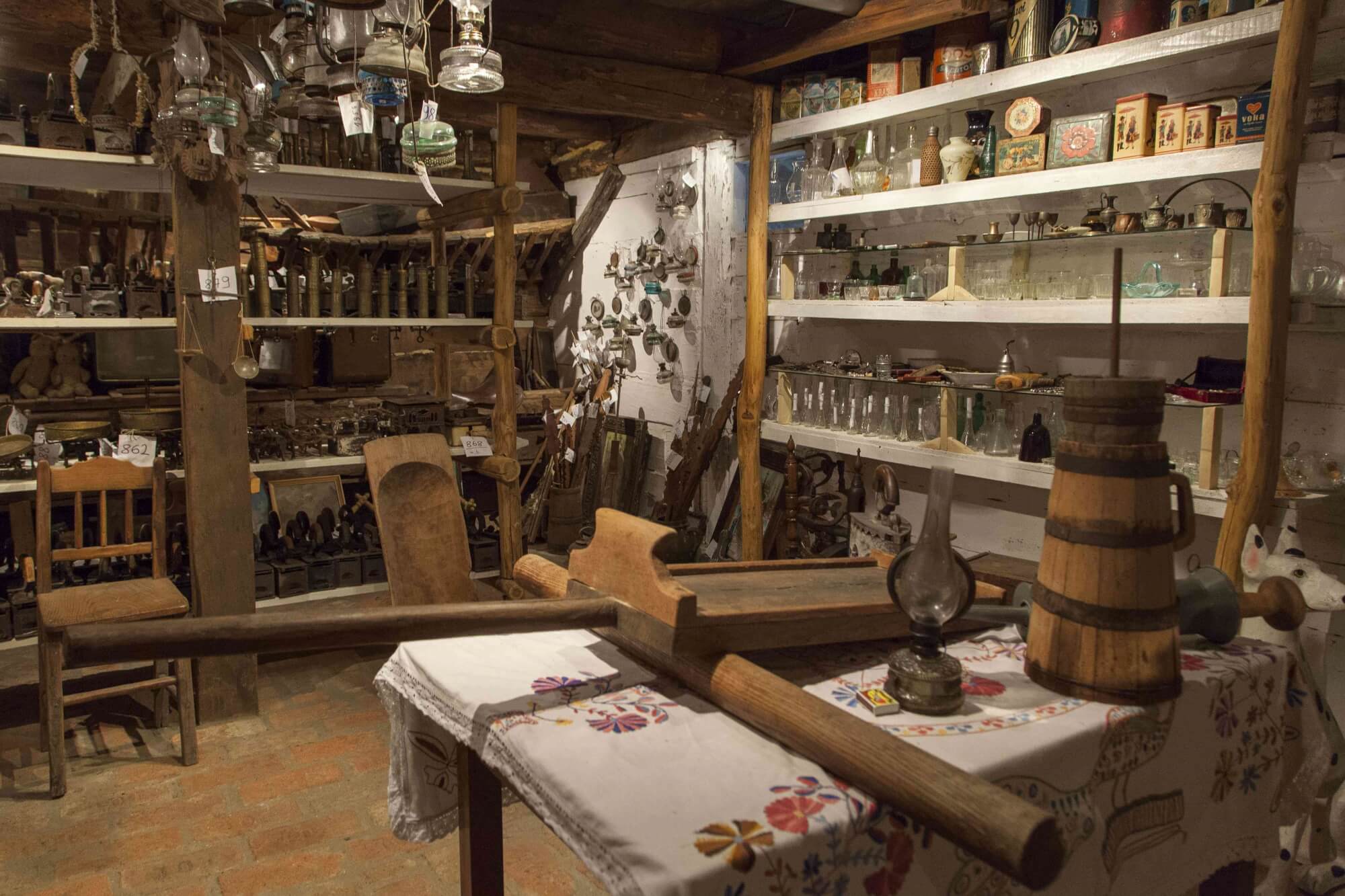 Kezele family farm ethno collection © Davor Konjikušić
Kezele family farm ethno collection © Davor Konjikušić
I've visited some family farms that were right at the start of their journey with Seoski Tourism and they seemed surprised that I was at all interested in what they do and how they do it. I think maybe they thought I was a bit crazy.
Yes, that is a response we sometimes also see at first. I think it's because our generation takes a lot of things for granted. We sometimes think that what we do is just what we do. We are not so good at showcasing it. “Why would I show someone how I make my cheese? I make my cheese like my grandmother used to make it” But, for those who open their doors to Seoski Tourism, inquiries about how they do what they do are only increasing. So, they seem to appreciate how we advise them in the workshops.
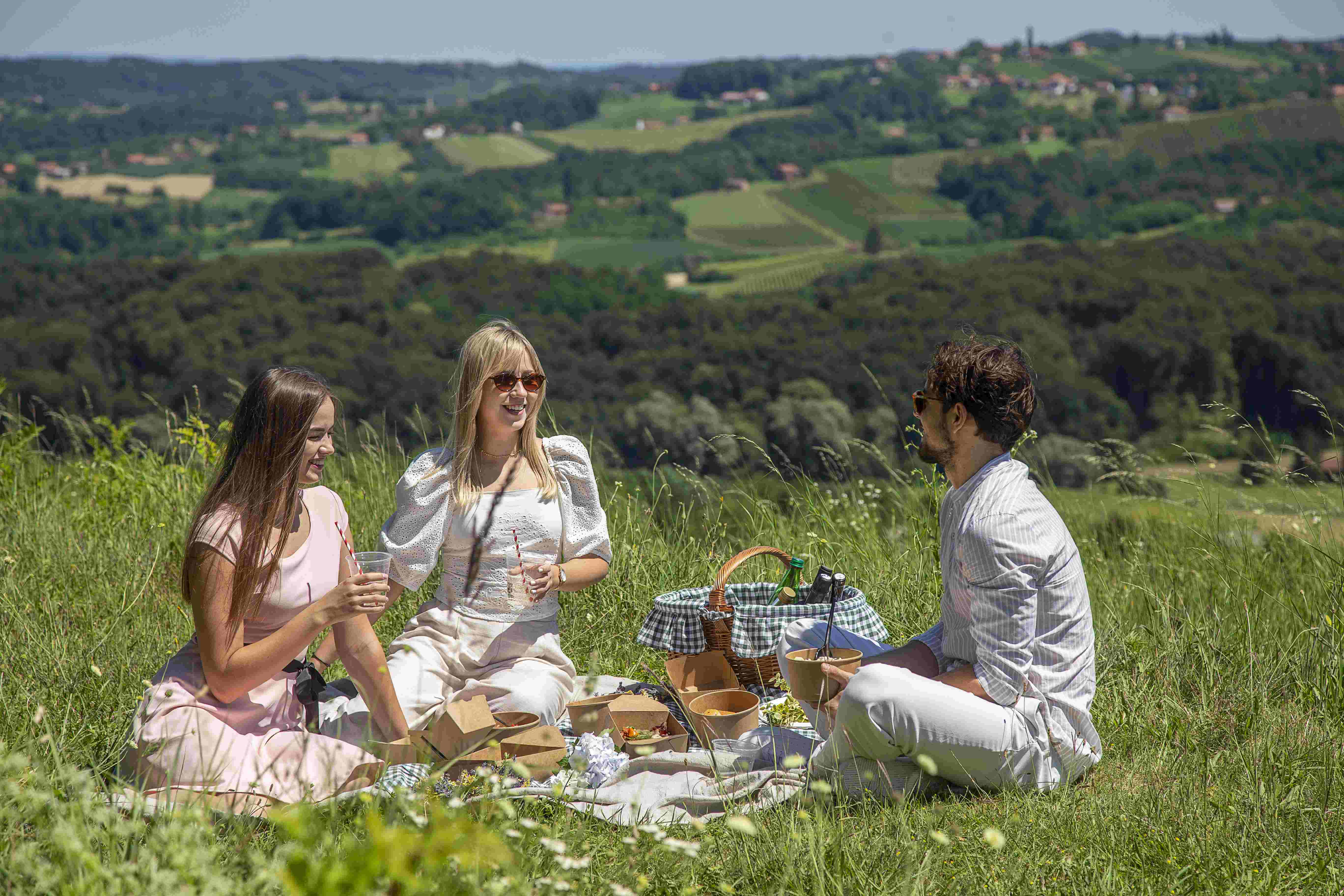 Picnic by Restaurant Međimurski dvori © Igor Nobilo
Picnic by Restaurant Međimurski dvori © Igor Nobilo
We are trying to let our producers know that Seoski Tourism is not just a platform to sell their produce and an overnight stay, but it's a full experience they can sell. There are agricultural farms in Austria that are established in tourism that you must pay only to visit. Of course, that doesn't happen currently anywhere in Croatia, even though some of our Seoski Tourism estates have sections that look like museums.
Some of these aspects are very new. And the feedback is great. I truly believe there are hidden treasures to be discovered in some Croatian villages. We are here to tell that story.
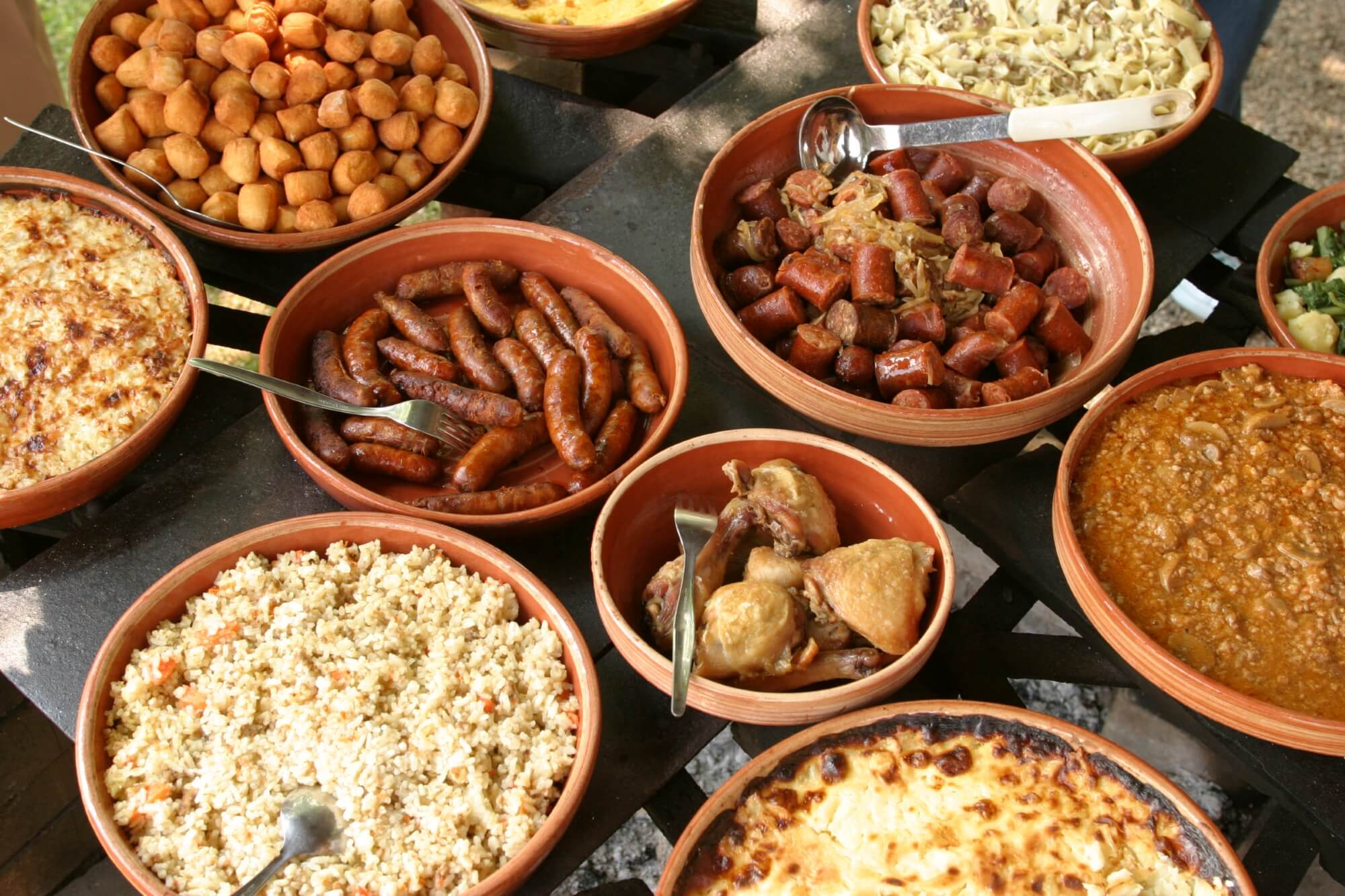 Selection of food from a Slavonian village © Mario Romulić
Selection of food from a Slavonian village © Mario Romulić
What is so rewarding about Croatian Seoski Tourism that international visitors would want to go to a traditional farm in some inland village instead of lying on the beach in Dalmatia for 14 days?
People come because they really want to see a different side of Croatia. And, there are many different aspects of Croatia to discover – not just Seoski Tourism, but also National Parks and Nature Parks. All of our current trends show us that more and more tourists are willing to come inland from the coast or to explore a different part of Croatia – inland Istria, for example, or continental Croatia.
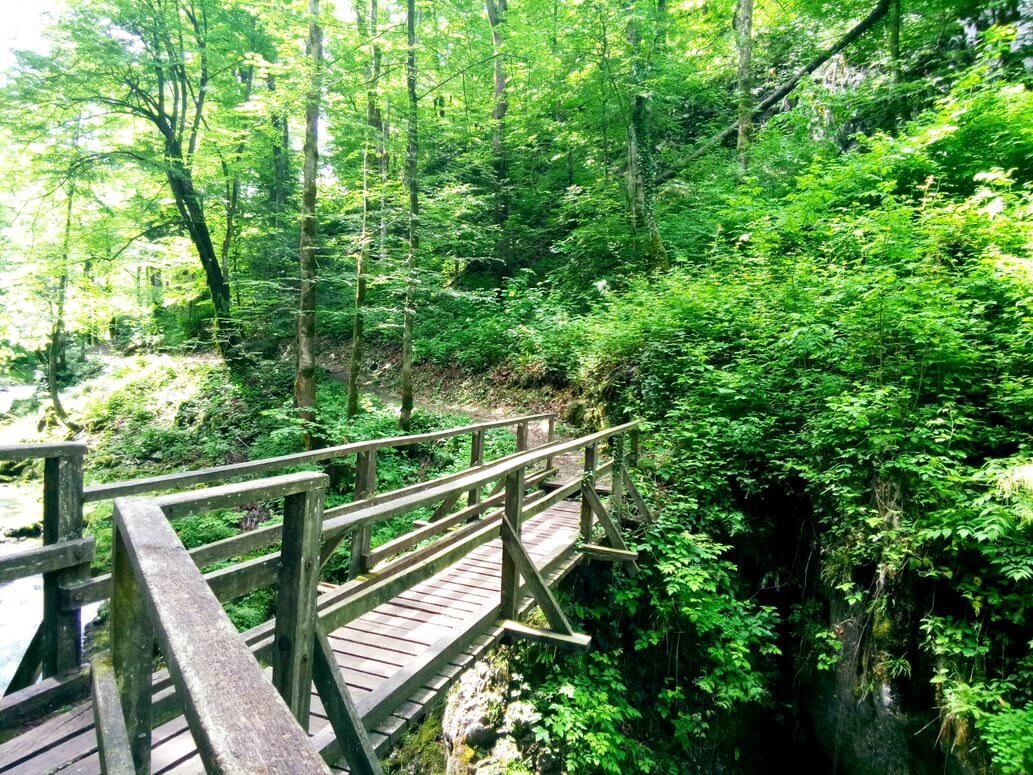 Kamačnik river canyon © Aleksandra Kuratko Pani
Kamačnik river canyon © Aleksandra Kuratko Pani
They really want to try authentic, local food. They want to eat healthy, to know what they are eating and how it is made. And, they want to experience flavours that are different from the usual ones they get from the supermarket.
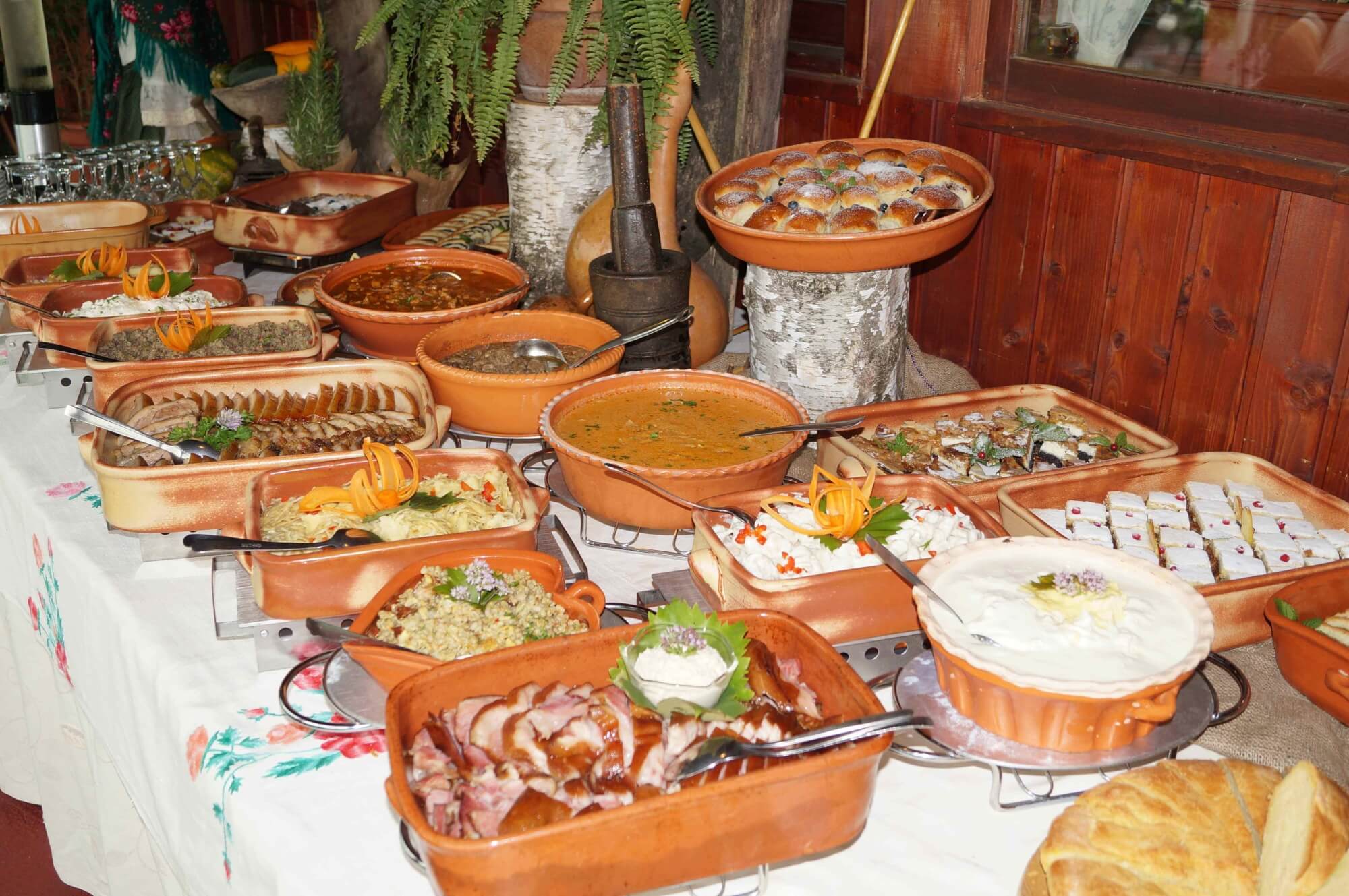 Traditional Međimurje table at Etno restaurant Međimurski dvori
Traditional Međimurje table at Etno restaurant Međimurski dvori
Also, I would say that with Seoski Tourism, people get to know better an authentic version of Croatia and its culture. It's a story we hear very often from our members. Some of them are visited by large groups from cruisers. These are people who might be on a cruise on the Adriatic and who journey inland for a day trip. Or, it might be a group who are cruising the Danube and disembark to visit a family farm in Slavonia, Baranja or Srijem.
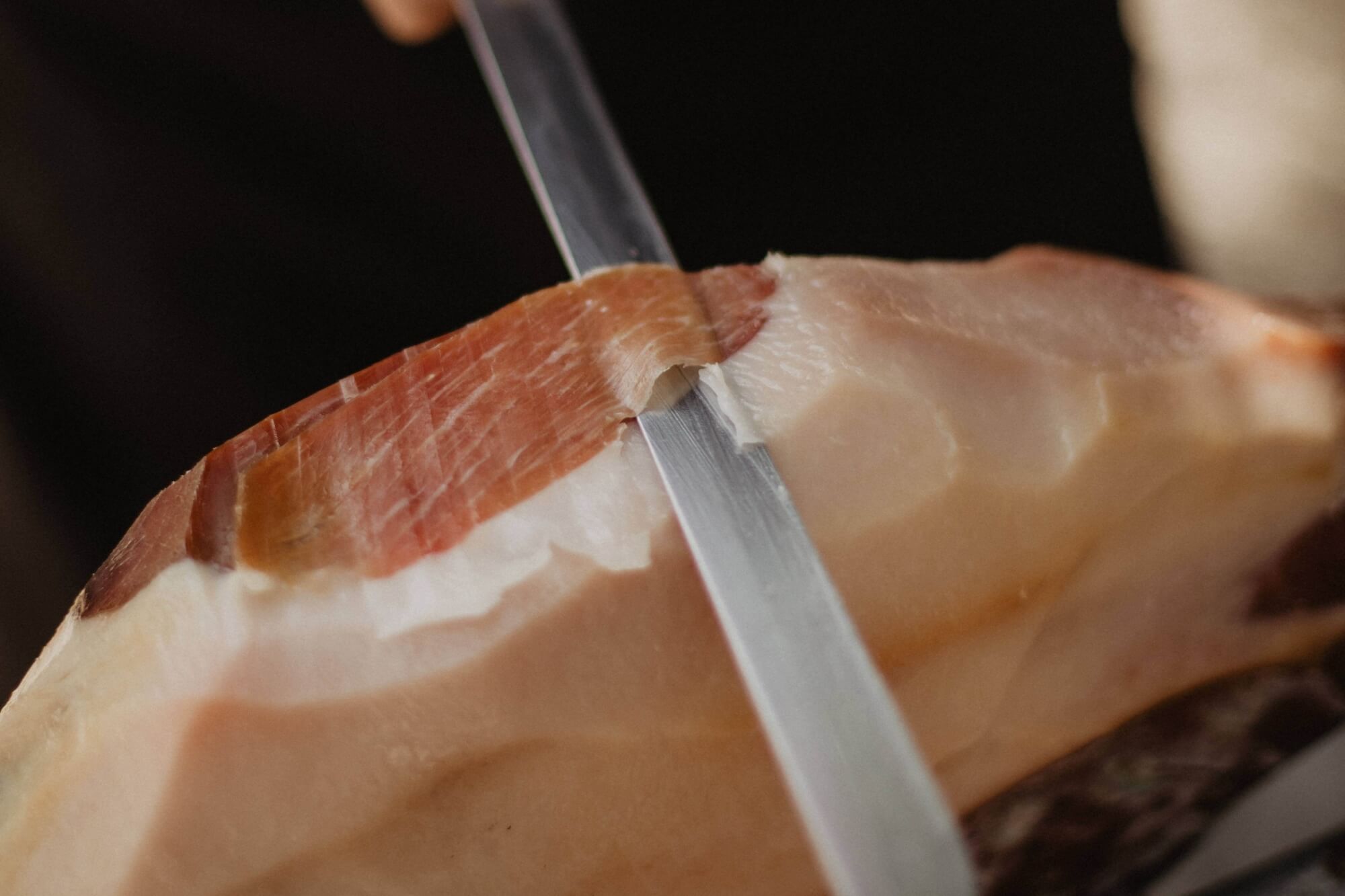 Prosciutto from Drniš at Agrotourism Kalpić © Ivana Kalpić
Prosciutto from Drniš at Agrotourism Kalpić © Ivana Kalpić
When they visit farming estates on day trips, it's very often a huge 'wow' moment for them. For many, in their minds, Croatia is simply sun and sea. And that's not entirely their fault. We, as a country, have done very little until now to promote alternative sides of Croatia. The visitors experience these wow moments because of the hospitality they receive and because of the tangible aspect of the visit. This is a modern aspect – people want to touch things, know how things feel, taste, smell. They want to ride on horses or feed them. Or take part in cultural activities. These parts of a visit to Seoski Tourism are very difficult to experience anywhere else.
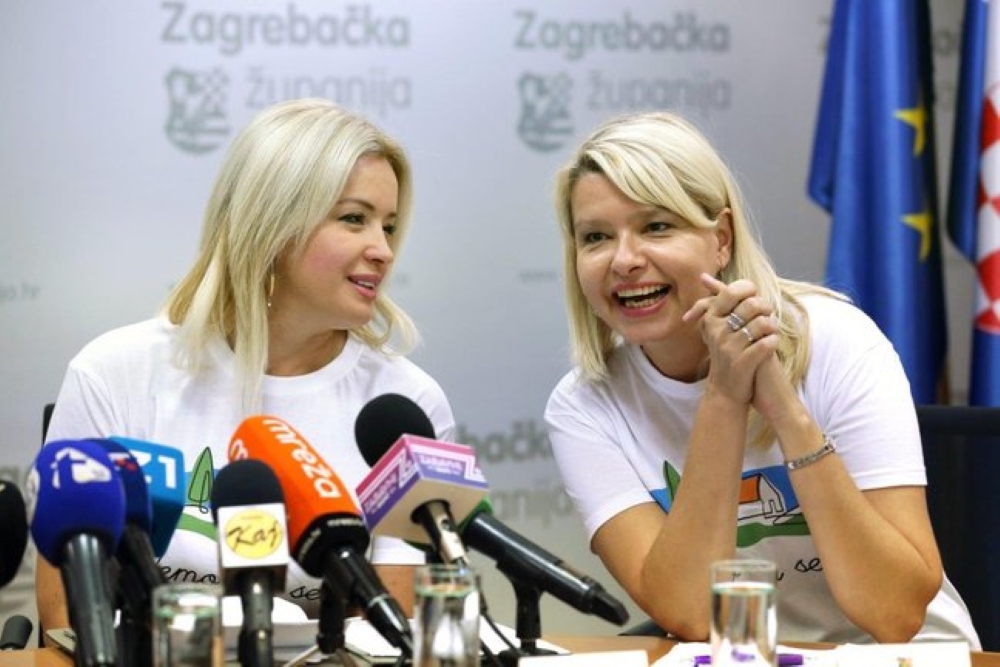 (left) Ivana Alilović, director of Zagreb County Tourist Board (right) Aleksandra Kuratko, secretary of Udruga ruralnog turizma Hrvatske (Croatian Rural Tourism Association) © Zagreb County
(left) Ivana Alilović, director of Zagreb County Tourist Board (right) Aleksandra Kuratko, secretary of Udruga ruralnog turizma Hrvatske (Croatian Rural Tourism Association) © Zagreb County
Udruga ruralnog turizma Hrvatske's online Seoski Tourism workshops begin today and their physical workshops continue next week in Istria.
If you'd like to read more about rural tourism in Croatia, then look here
Grape Harvest Begins in Feričanci - Enosophia is Born!
September 10, 2021 - Enosophia is born! The new winery and Slavonian wine brand have started harvesting grapes, which will supplement the existing offer after fermentation.
The harvest at the Božilovac vineyard site in Feričanci has begun! The first in the repertoire was the Graševina variety, part of which has already been selected for sparkling wine bases that need a little more acid.'
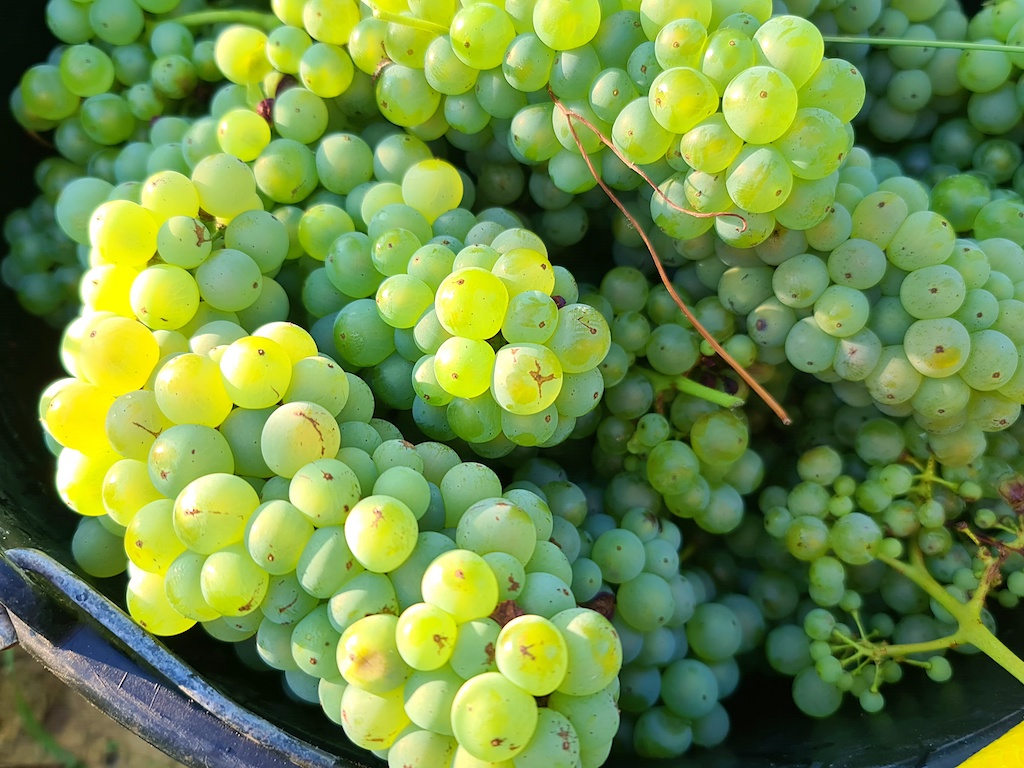 Slobodan Kadic
Slobodan Kadic
"While for most people, the end of August and the beginning of September means the end of summer, for us, that period means the beginning of the grape harvest and the most exciting part of the year. This year we expect about 1,100 tons of grapes, of which the largest amount belongs to Graševina, followed by Frankovka. Through a rich assortment in our vineyards, we manage to optimally organize the harvest according to the ripening of our grapes," said the head of viticulture and wine production at Enosophia, Lucija Kužir.
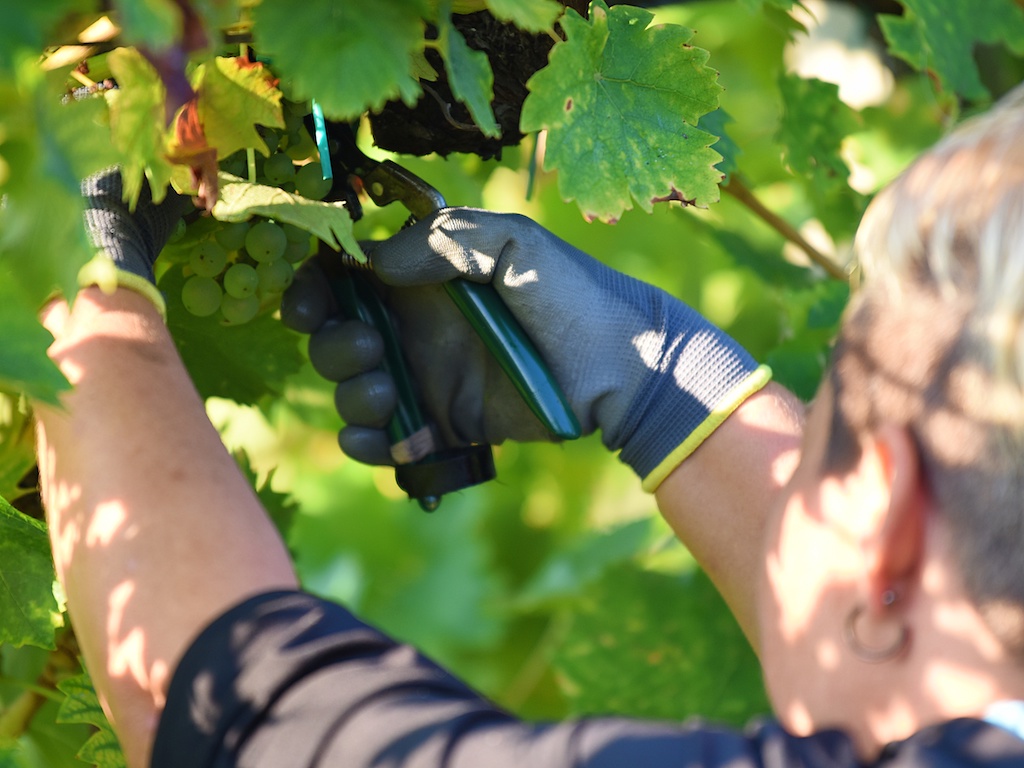
Slobodan Kadic
After the sparkling wine bases, it starts with the regular harvest of the other varieties, followed by Chardonnay, Pinot Blanc, Sauvignon blanc, Pinot Noir, Merlot, Cabernet Franc, Cabernet Sauvignon, and Syrah. Kužir added that no wine-growing year is the same, so this year she surprised several times. But, despite many challenges, all Enosophia vineyards are in excellent health and the happiest part of the wine year began with this harvest."
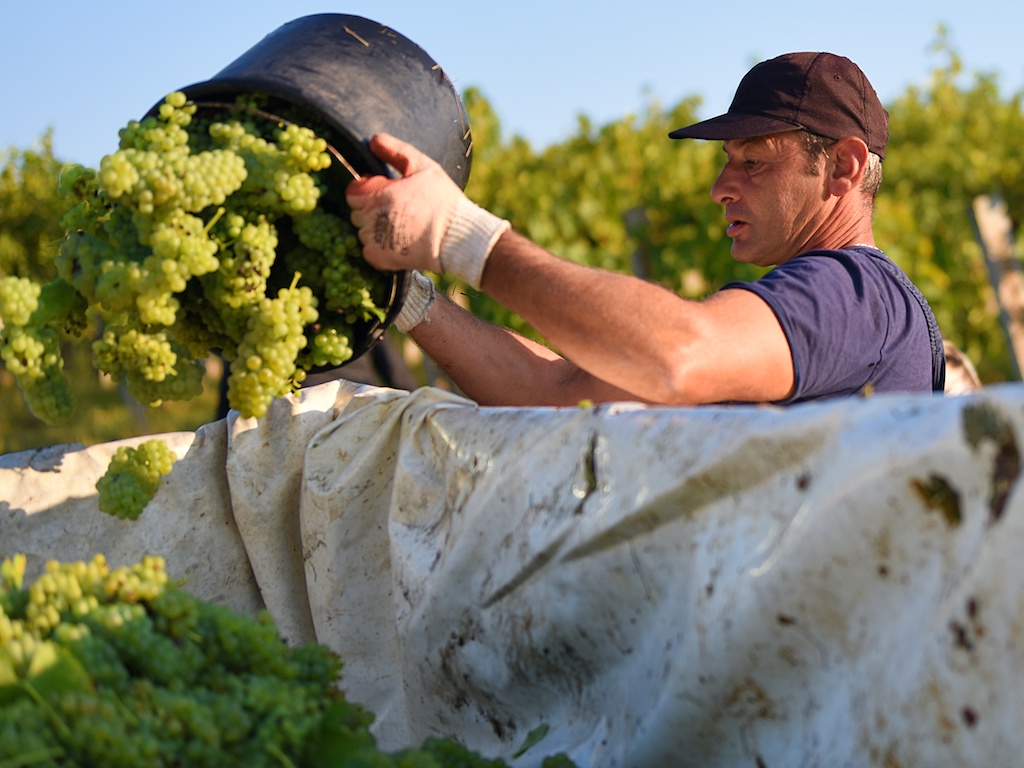
Slobodan Kadic
Quality is our first priority, and with favorable ratios of quality and quantity, we manage to produce exactly the same grapes for our wines as we need for a particular product," concluded Lucija Kužir.
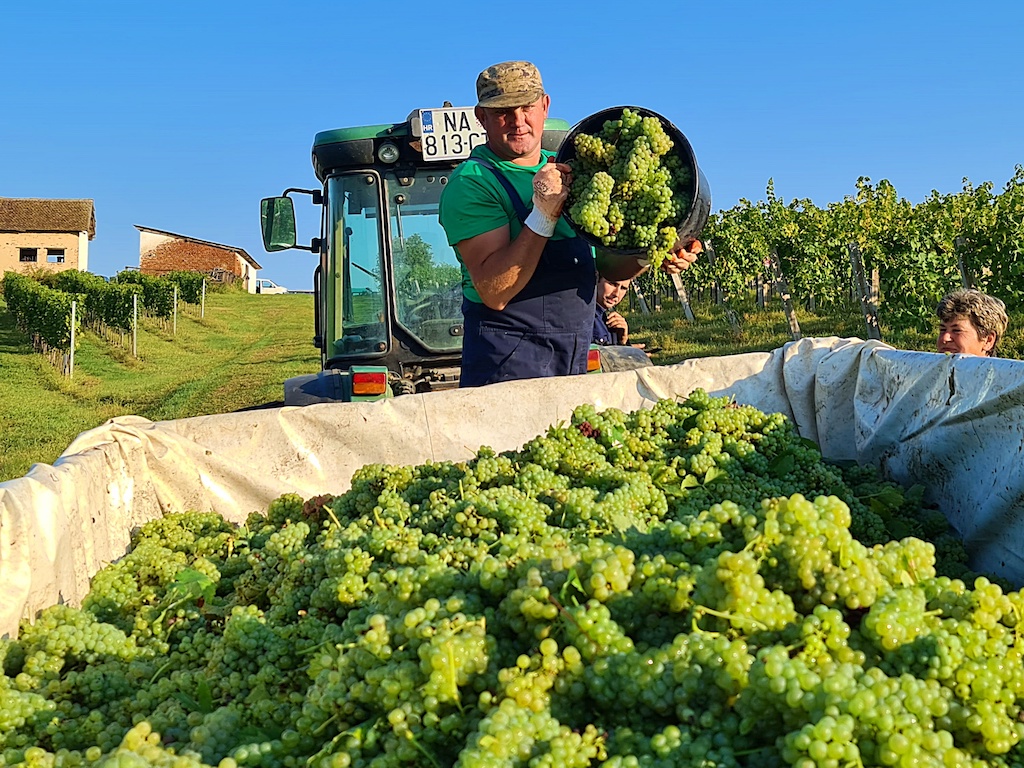
Slobodan Kadic
During the event, a toast was organized for diligent pickers where they had a unique opportunity to taste the new Nice To See You sparkling wine.
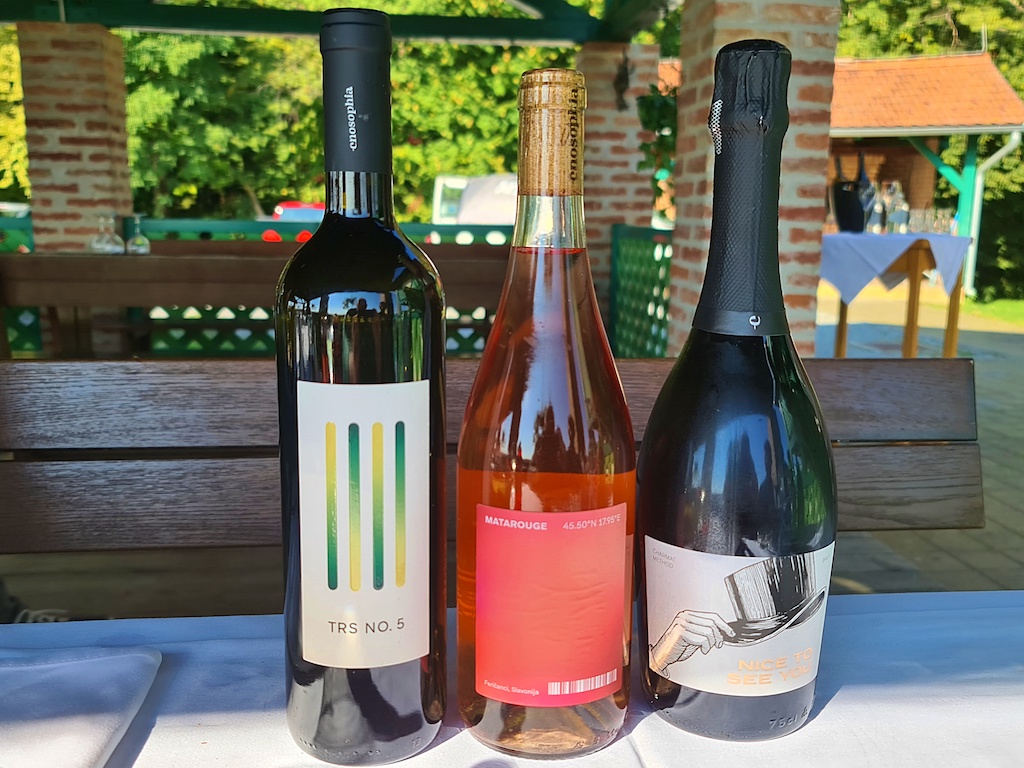
Slobodan Kadic
We remind you that the Enosophia brand appeared on the market in early July this year. It is unique in its holistic approach to the brand, care for people, ecology, and sustainable development, and the ambition to position Slavonia as a desirable wine tourist destination. In addition to a holistic approach to the development process and the vision of the new brand, Enosophia is unique because of the innovative technology and interactive AR label on its first wines - Graševina TRS No. 5 in the Matarouge rosé.
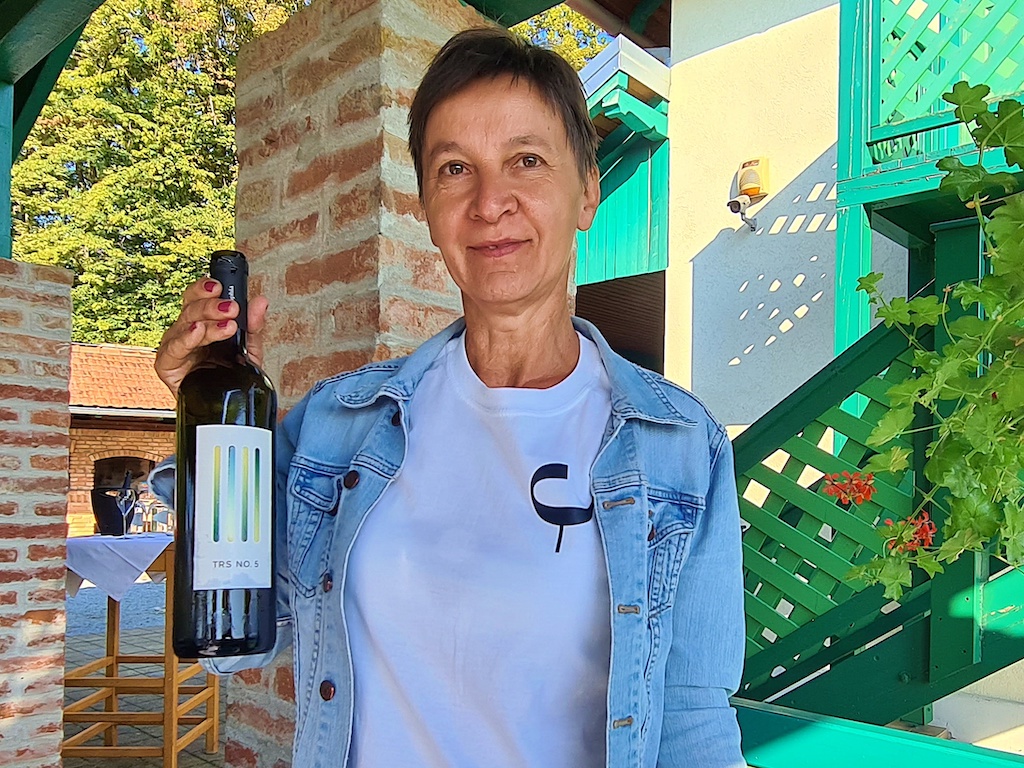
Slobodan Kadic
For example, with the help of augmented reality, it is possible to read specially composed music with the help of a mobile application on the wine label TRS No. 5, which, according to research, improves the taste of wine. Likewise, by reading the Matarouge label, the user can learn more about the world's most famous rosé regions. The quality of the new Graševina was also recognized at this year's prestigious Decanter World Wine Awards, where TRS No. 5 won bronze.
For more on lifestyle in Croatia, follow TCN's dedicated page.
Not Just the Coast: Osijek-Baranja County 2021 Tourism Numbers Rising
August 15, 2021 - The coast isn't the only part of Croatia that is busy this year. Osijek-Baranja County 2021 tourism numbers are rising with an increasing number of Polish tourists.
The 2021 tourist season is not only successful on the Croatian coast. And on the continent, tourist boards are recording better results than those achieved last year, marked by numerous restrictions and measures in the fight against the coronavirus pandemic, reports HRTurizam.
According to eVisitor data, in the first seven months of this year, there was an increase in the number of overnight stays in Osijek-Baranja County by 36%. If we look at the same pre-pandemic 2019 period, this year’s results are at 70%.
This is the reason for the cautious optimism of Osijek-Baranja County tourism workers. In the Baranja area, there is an increase in the number of guests from Poland who stay for two to three days before heading to the Adriatic. They enjoy eno-gastronomy the most and are mostly from Warsaw and Krakow.
"The good news is that cruisers are moving again in the Croatian Danube region, which is an additional indicator of the sector's adaptation to restrictive business conditions and also a reason for optimism," said Ivana Jurić, director of the Osijek-Baranja County Tourist Board.
Along with good announcements, this year's support in tourism to mitigate the consequences of the COVID-19 pandemic also contributes to optimism. Namely, Osijek-Baranja County, just like last year, awarded grants intended for family farms, crafts, and companies registered for accommodation activities in the County.
Grants per beneficiary amounted to HRK 40,000, a total of 21 beneficiaries responded to the call, and HRK 600,000 was spent on this grant.
"These grants aim to help our family farms, and other tourism workers overcome the pandemic time and return as soon as possible to the improvement of continental tourism, which has recorded positive trends in our county. The latest data on tourist arrivals and overnight stays speak in favor of this because the number of overnight stays is increasing compared to the last "Covid" year, and we are approaching the record numbers from 2019," said the prefect Ivan Anušić.
However, this is not the end of the Osijek-Baranja County subsidies, which provided HRK 2.62 million to the tourism sector through the Administrative Department for Tourism, Culture, and Sports in four models.
"We are still open to the Public Call for grants for the organization and participation in events until we hit the funds planned in the Budget or by October 31, 2021, at the latest," said Tatjana Roth, Head of the Administrative Department for Tourism, Culture, and Sports.
Support is awarded for the organization and participation in events that are important for developing rural tourism and presenting the tourism potentials of the County, which promotes and represents the County as an active participant in the development of rural tourism.
Family farms, crafts, and companies registered for catering and tourist services in rural tourism, associations registered for activities related to selective forms of rural tourism, and other natural and legal persons residing in the County have the right to apply for support.
For more, make sure to check out our dedicated travel section.
Escape to Osijek-Baranja County and its Epic Sights and Flavours
May 14, 2021 – Breathtaking views of the Danube at Erdut and Aljmaš, the bona fide masterpiece of Đakovo cathedral, the unique winemaking traditions of northern Baranja, the wildlife-rich wetlands of Kopački rit and the OPGs of Osijek-Baranja County. There's a whole other world to discover in this epic corner of Slavonia-Baranja.
It seems like the world is speeding up. Everything now is that much more immediate. In this age of Instagram and 'influencers', we quickly scroll past postcard-pretty pictures on our phones. 'Like'. Forgotten, in an instant.
Croatia is a country not without postcard-pretty pictures. But, to snatch attention in this super-fast, vacuous age, all too often we are shown the same images. Heart-shaped islands from above, dolphins at dusk, sunset over the Adriatic and its epic Dinaric Alps. You could be forgiven for thinking that every view in Croatia contains the sea.
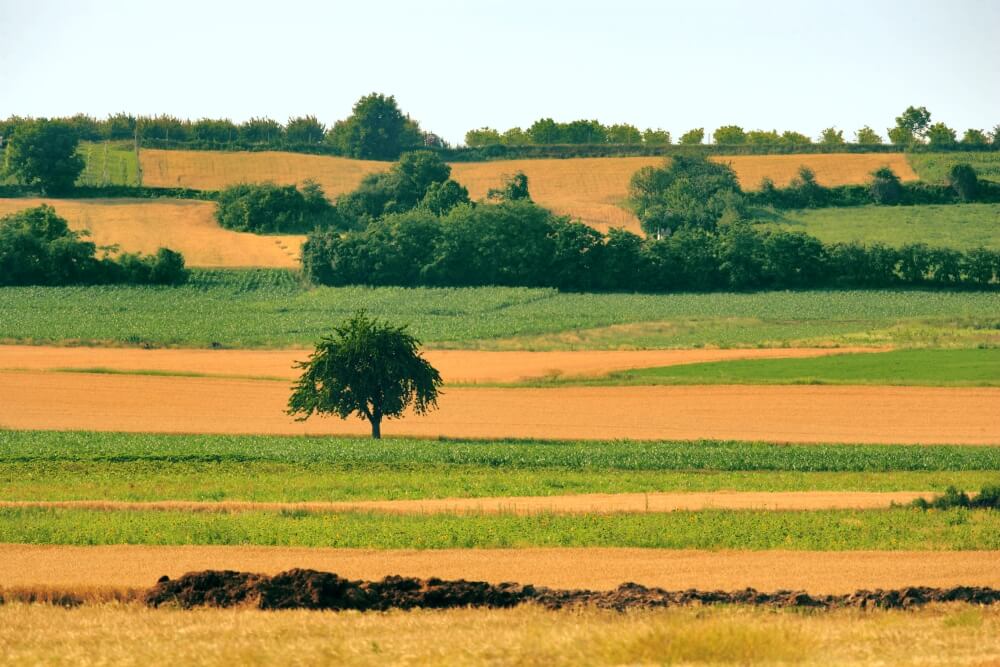 Slavonia © Romulić & Stojčić.
Slavonia © Romulić & Stojčić.
There are very few mountains in the Pannonian basin. And there is no sea. Well, not any more. Instead, these flatlands stretch 600 km from east to west and 500 km from north to south through several countries. They engulf the eastern section of Croatia we know as Slavonia, Baranja and Srijem.
Unsurprisingly, such a vast plain is not without its epic qualities. But, the epic nature of Osijek-Baranja County in Slavonia-Baranja is difficult to capture in a competing image on social media. Its special qualities instead lie in the sounds, the tastes, the tradition, the sights and the people. This is a place that has to be visited to be understood. And, if you do, it's an experience that will far outlast any fleeting photo on Instagram. Here, we take a look at just a small section of the unforgettable offer in Osijek-Baranja.
Imperial horses and the bona fide masterpiece of Đakovo cathedral
State Stud Farm Đakovo
Horse breeding in Đakovo is thought to be even older than 1506 when first written mention of the town's stud farm comes from. An endeavour of regional bishops, it bred horses of Arab stock. But, that changed at the beginning of the 19th Century.
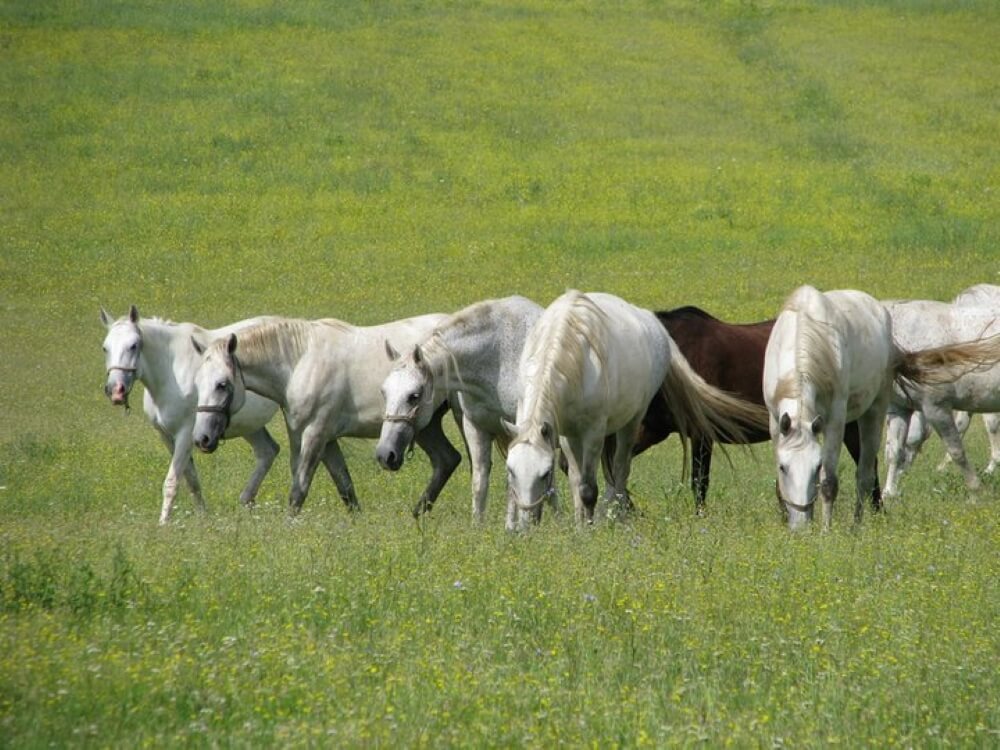 In the fields, Lipizzaner horses © Silvija Butković.
In the fields, Lipizzaner horses © Silvija Butković.
Lipizzaner horses were the prized breed of the Habsburg monarchy, their genetic line today traced back to eight stallions from the late 18th and early 19th centuries. With the advancement of Napoleon's army across Europe, Lipizzaners were sent further east in order to protect them. This imperial horse has been bred in Đakovo ever since.
Born with black skin and black hair, their hair gradually turns to a characteristic light grey (although, some other colours occur). Traditionally, when the colour change was fully complete, the horses were ready for royal duty.
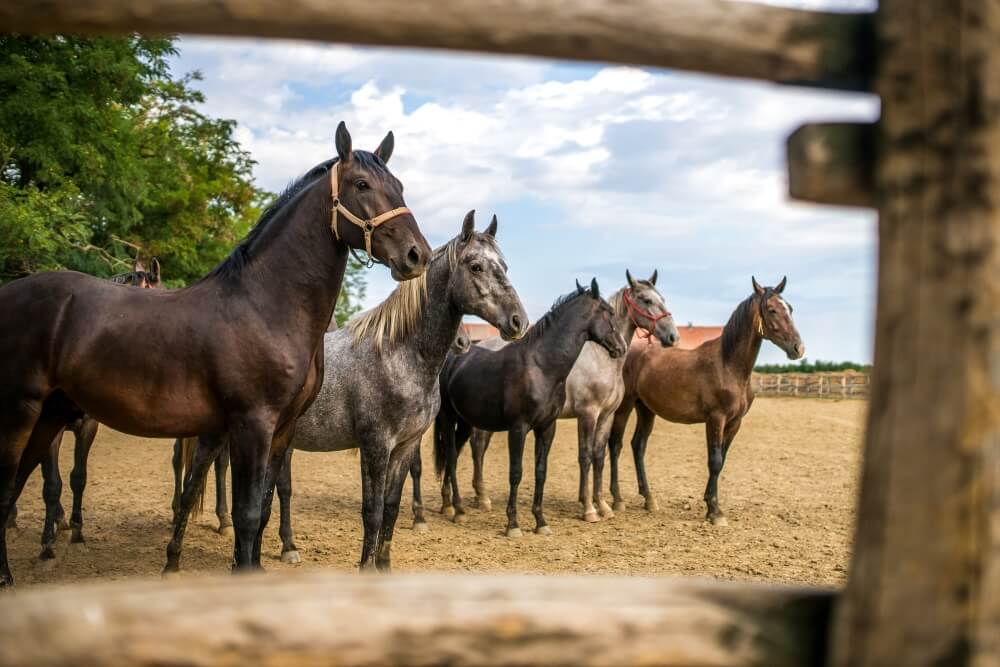 Younger horses on the State Stud Farm in Đakovo © Denis Despot / Tourist Board of Osijek-Baranja County.
Younger horses on the State Stud Farm in Đakovo © Denis Despot / Tourist Board of Osijek-Baranja County.
Today, at the State Stud Farm Đakovo, the Lipizzaners are bred and trained in dressage. The farm contains Croatia's largest indoor riding hall, in which public performances take place. Previous visitors to the farm include several members of the British Royal family. Queen Elizabeth II, Prince Phillip and their daughter Princess Anne came in 1972, while Camilla, Duchess of Cornwall came in 2016.
Đakovo cathedral
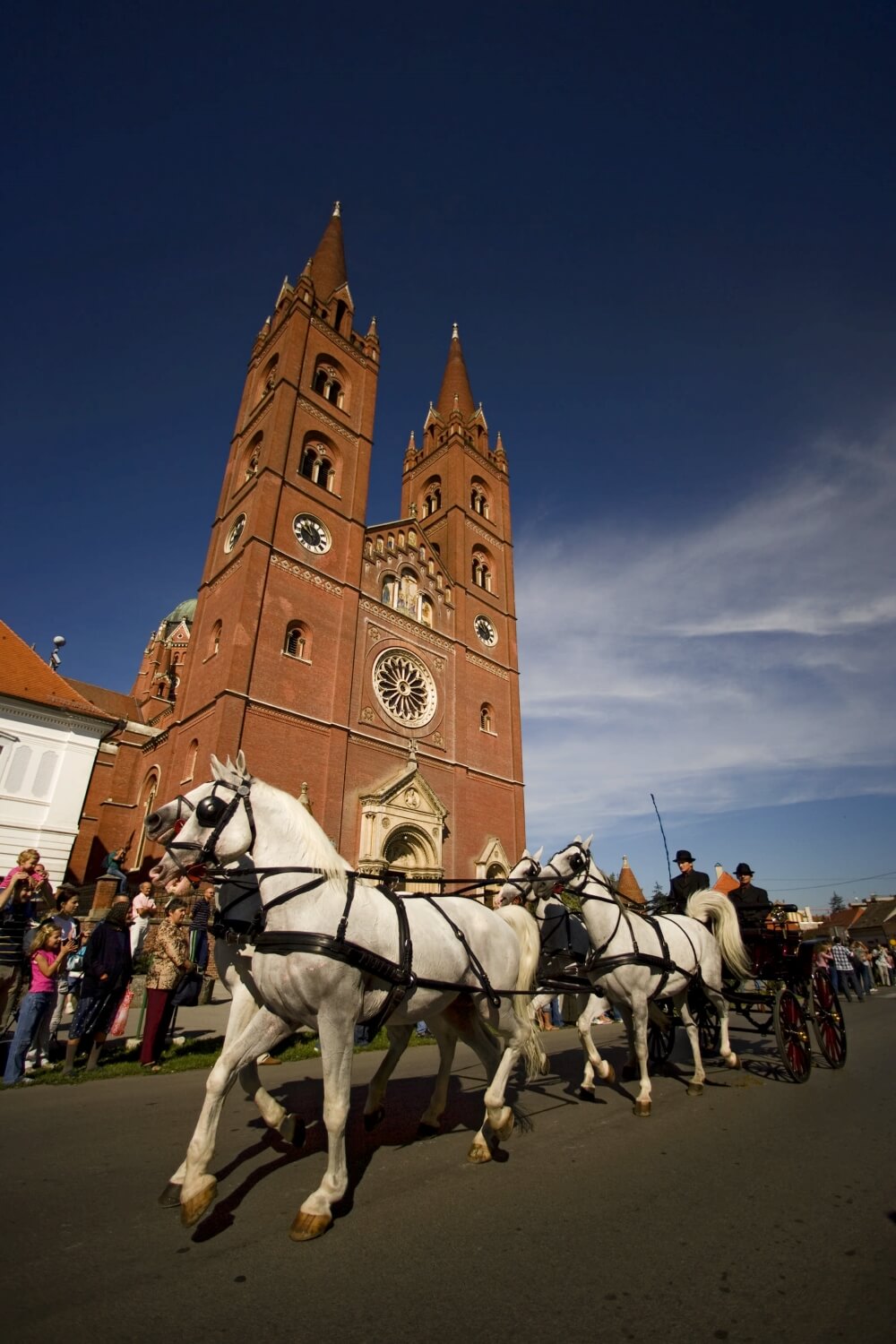 Exterior of Đakovo cathedral © Romulić & Stojčić.
Exterior of Đakovo cathedral © Romulić & Stojčić.
The presence of Bishop Josip Juraj Strossmayer looms large in the history of Croatia. Nowhere does that presence loom larger in a physical manifestation than Đakovo cathedral. By far, it is the largest sacral building in Slavonia, the second-largest in Croatia.
 © Romulić & Stojčić
© Romulić & Stojčić
This part of Slavonia is completely flat. Therefore, you can see the cathedral for miles as you approach Đakovo. Once up closer, its red bricks give it the appearance of a modern building. In fact, Josip Juraj Strossmayer oversaw its construction between 1866-1882. In truth, he'd wanted to build it for much longer, but struggled to get the funds required for his vision. Indeed, the project was so delayed that the artist Strossmayer chose to paint the interior, German Nazarene Johann Friedrich Overbeck, died before he could begin the task. Instead, father and son Alexander Maximilian Seitz and Ludwig Seitz assumed the task.
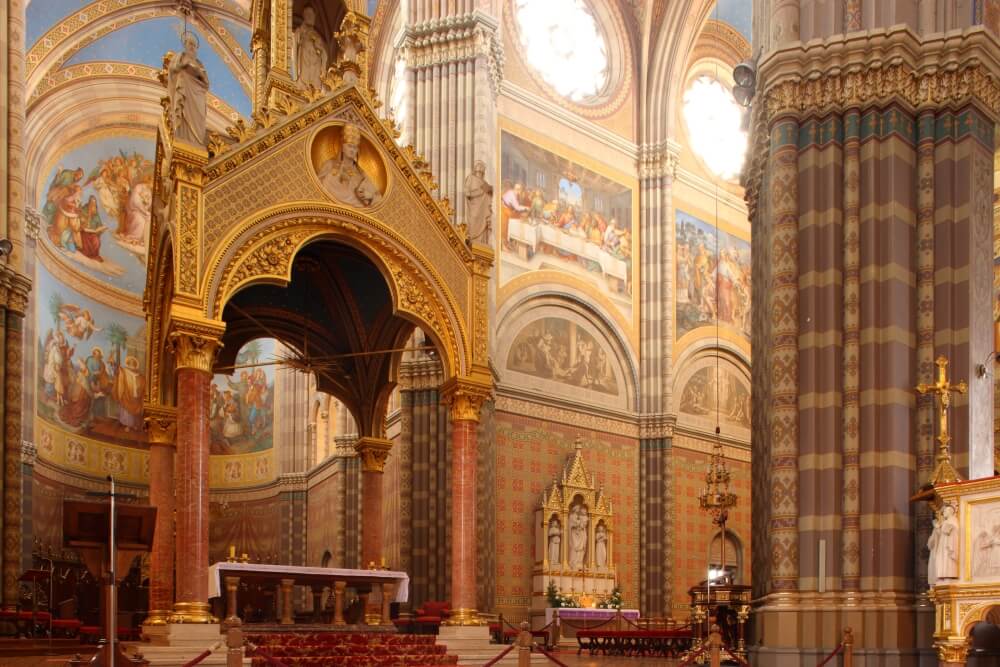 Interior detail in Đakovo cathedral © Romulić & Stojčić
Interior detail in Đakovo cathedral © Romulić & Stojčić
The building's construction actually only took four years, but it took a full 19 years to complete decorations inside. It's easy to see why. The interior of Đakovo cathedral is a bona fide masterpiece. Ornate frescos depicting scenes from the Old Testament and New Testament radiate from above. Regardless of your faith, it is a breathtaking experience to walk within.
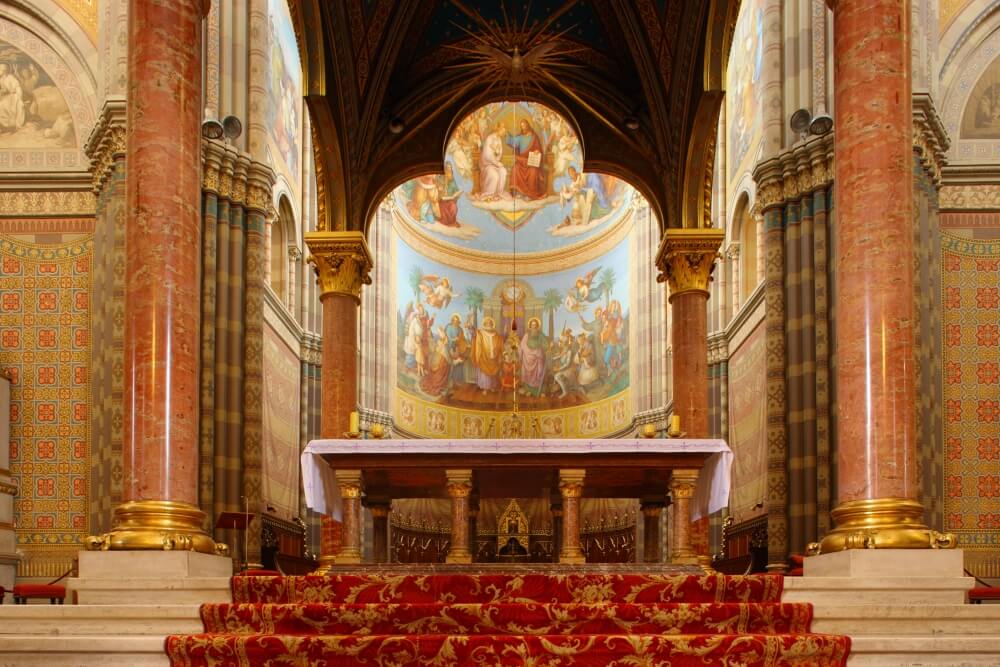 © Romulić & Stojčić
© Romulić & Stojčić
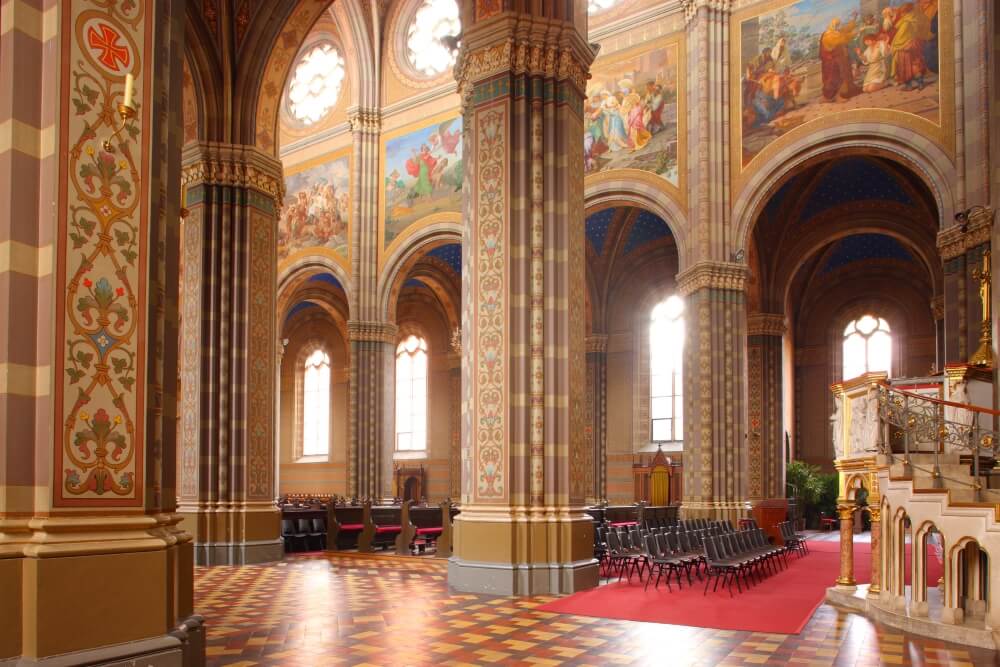 © Romulić & Stojčić
© Romulić & Stojčić
13 of the frescoes are by Alexander, 20 are by Ludwig. The detail of their work captivates the eye. The Neo-Romanesque architectural flourishes design inside are similarly grandiose. Visiting while on a journey to Bulgaria, future Pope John XXIII proclaimed it to be the most beautiful church between Venice and Constantinople.
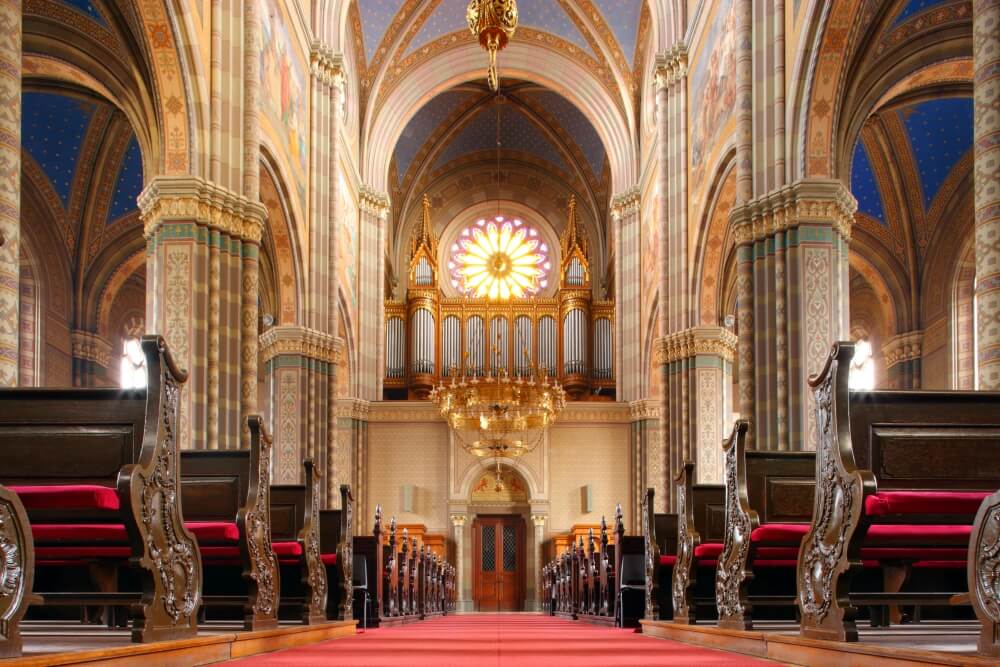 © Romulić & Stojčić
© Romulić & Stojčić
Breathtaking views of the Danube at Erdut and Aljmaš
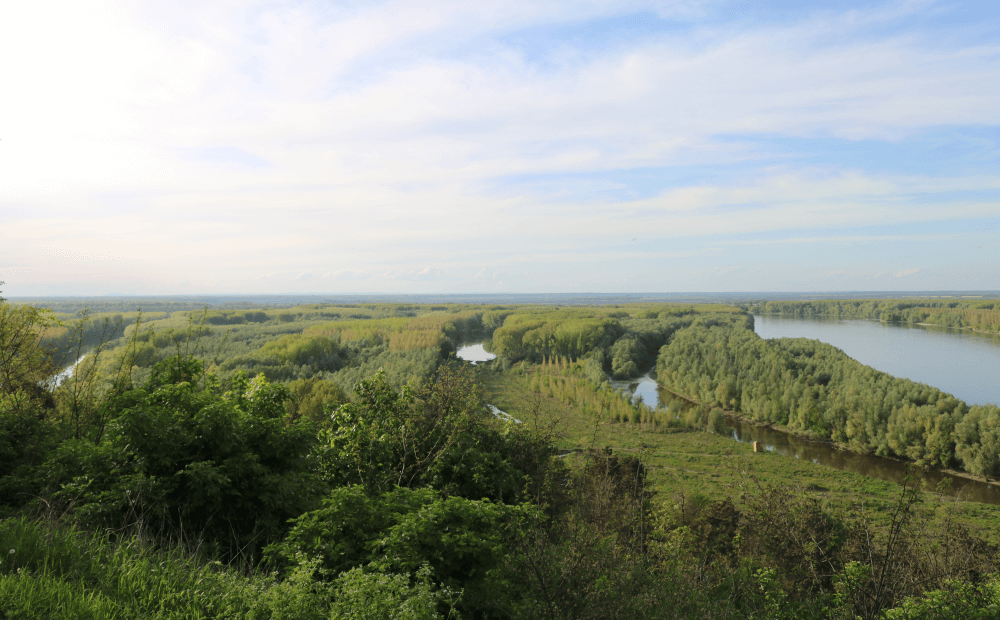 The Danube, as seen from the Brzica winery terrace in Erdut © Marc Rowlands.
The Danube, as seen from the Brzica winery terrace in Erdut © Marc Rowlands.
Slavonia is defined by its two longest rivers. To the south, after passing through Zagreb and Lonjsko Polje, the Sava forms a natural border between Slavonia and Bosnia. To the north, the Drava river first separates Croatia and Hungary. Then, after Donji Miholjac, it serves as the border between Slavonia from Baranja. Just a mile or so from Aljmaš, the Drava flows into the Danube, which partially separates Slavonia from Vojvodina.
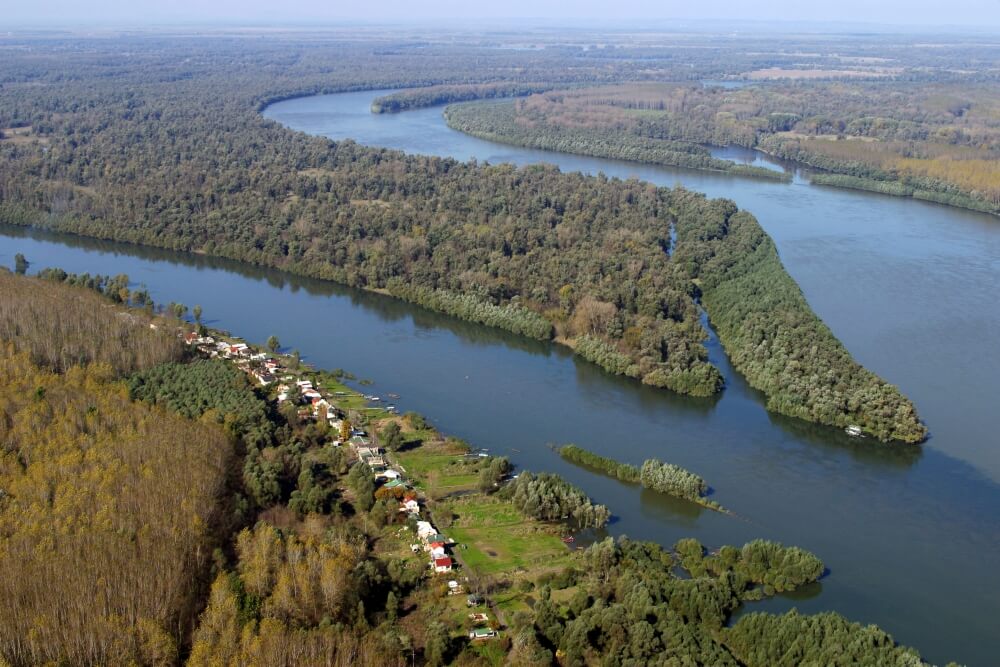 The Danube in eastern Slavonia © Romulić & Stojčić.
The Danube in eastern Slavonia © Romulić & Stojčić.
When you're standing overlooking the Danube in Erdut village, you could almost believe you're on an island. The peninsula in which the village lies is surrounded on three sides by the Danube. It weaves in and out of the landscape, causing great gulfs between the dense forest that occurs on each side. This area is noticeably raised above the height of regular, flat Slavonia and in Erdut, a small castle tower stands on a hill. It's one of the best places to look at the Danube. The other is from the Brzica winery, less than a kilometre away.
At Brzica, you're some 80 metres above the Danube. Here, winery owner Ivo Brzica has taken advantage of the view. He's built a beautiful holiday home where guests can stay. It's right next to his own dwelling and the winery. The properties share a huge, open and informal terrace overlooking the river. It's a great place to try the award-winning Brzica wines. They plant Graševina, Chardonnay, Cabernet Sauvignon, Merlot and Vranac. On some bottles, the label reads 1378. It's the number of kilometres the Danube has travelled to reach this point.
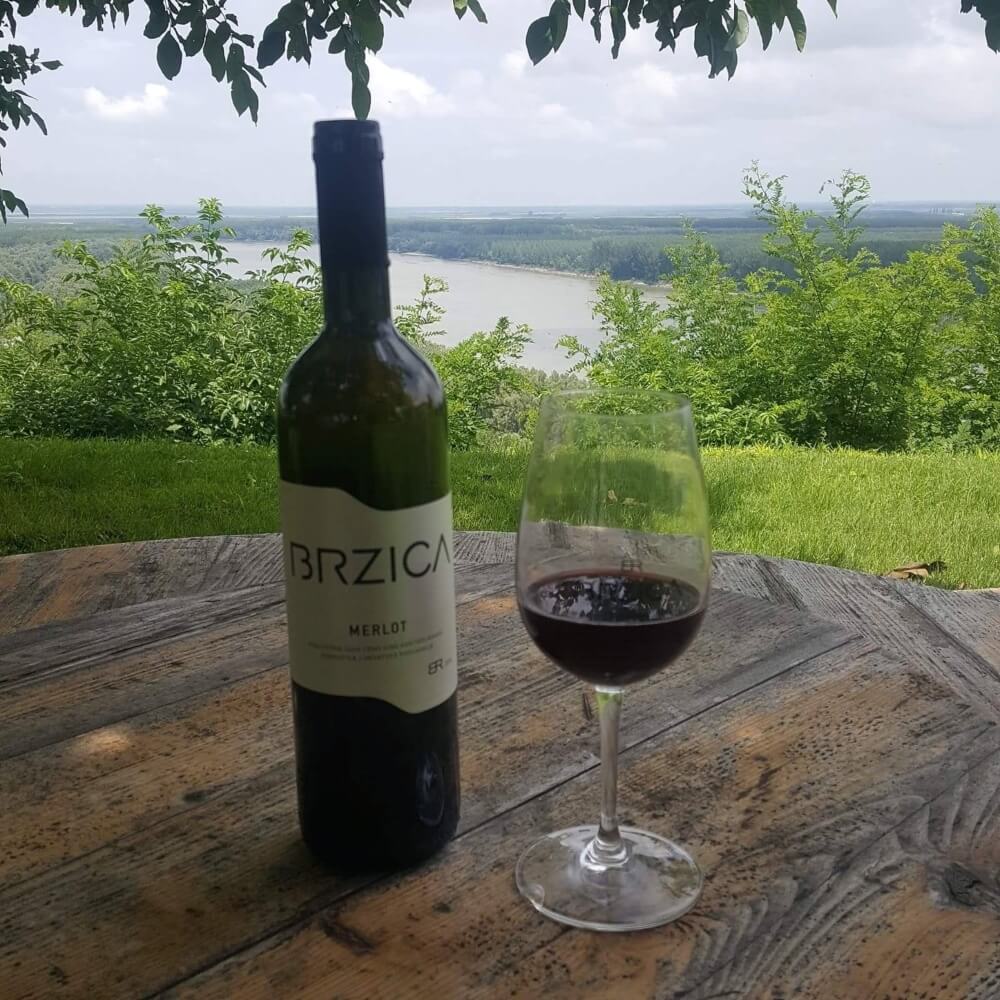 A glass of Brzica wine overlooking the Danube.
A glass of Brzica wine overlooking the Danube.
Erdut visitors wanting to get up closer to the Danube can now do just that. A newly appointed 10-kilometre footpath now runs alongside the river all the way from Erdut to Aljmaš. It's a beautiful walk through epic nature.
The unique landscape and winemaking traditions of northern Baranja
While much of Slavonia is uniformly flat, the topography is more varied in Baranja. Baranja Mountain stretches in a northeast-southwest direction between Beli Manastir and Batina. It is 21 kilometres long, three kilometres wide and much of its slopes are used for agriculture, grapes for winemaking, predominantly.
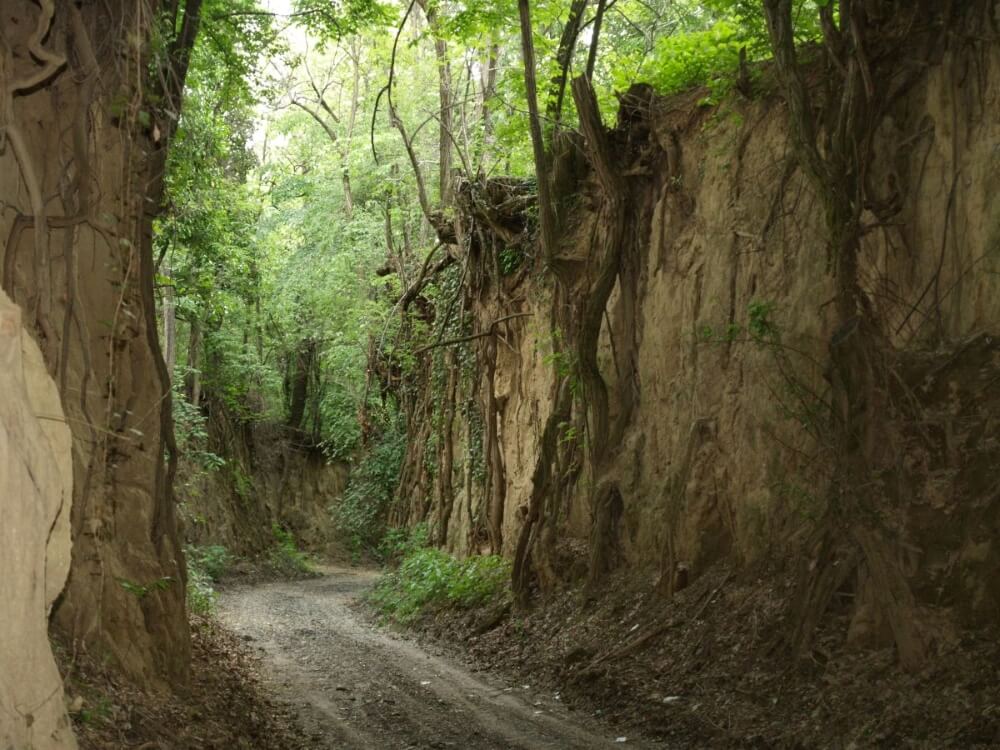 A Surduk in Baranja © Krešimir Čandrlić / Tourist Board of Osijek-Baranja County.
A Surduk in Baranja © Krešimir Čandrlić / Tourist Board of Osijek-Baranja County.
Long ago, heavy rains began to produce natural gorges which cut through the higher ground. Over time, some of these became considerably deep, widened by the flow of water and sometimes mud. Eventually, these gorges between hillsides became passageways for horses and carts. In Croatia, these narrow routes are exclusive to the Baranja region and are very pretty to walk. Their walls are lined with tree roots, which stop them from collapsing. The branches and leaves of these trees often overhang the gorge, sometimes giving you the impression you're in a tunnel. Such a route in Baranja is known as a Surduk.
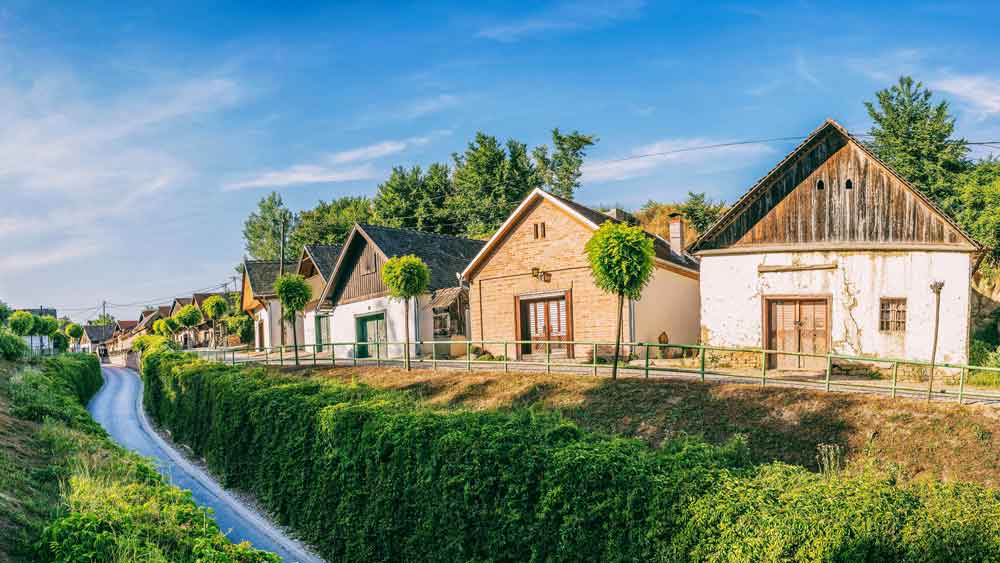 A line of traditional Baranja wine cellars. Unique in Croatia to Baranja, such a building is known as a Gator © Visit Baranja.
A line of traditional Baranja wine cellars. Unique in Croatia to Baranja, such a building is known as a Gator © Visit Baranja.
On this same ground, you'll find another phenomenon unique to Baranja. A Gator is a traditional wine cellar of this region. Sometimes found on the lower course of a Surduk, a Gator is unlike a typical wine cellar in that it has no subterranean section where the wine is stored. Instead, a Gator extends back into the hillside. Wine is kept in the deepest recesses of the building, where it is coolest. In several places in Baranja you can see a street with several of these buildings side by side. Usually, each Gator is owned by a different family and each will make their own particular family wine.
Podrumi Kolar family winery in Suza
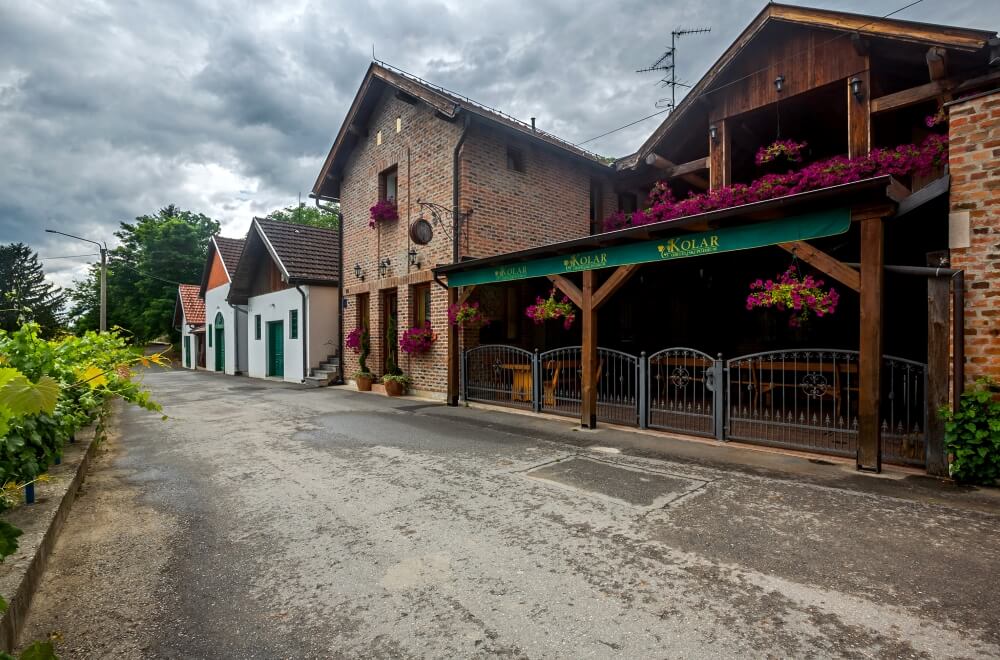 With a 100-year-old cellar and great wines, the Podrumi Kolar family winery in Suza.
With a 100-year-old cellar and great wines, the Podrumi Kolar family winery in Suza.
The Kolar family wine cellar is 100 years old, although the restaurant and tourism aspect of their enterprise has only been around since 2004. The whole family are involved and they purposefully intertwine their winemaking with a visitor offer. In addition to the restaurant attached to the wine cellar and they have a wonderful campsite just a couple of hundred metres down the road. All of their wines are great. But, if you visit, be sure to try their Sauvignon. Some say it's the best in the whole of Baranja.
Josić winery and restaurant in Zmajevac
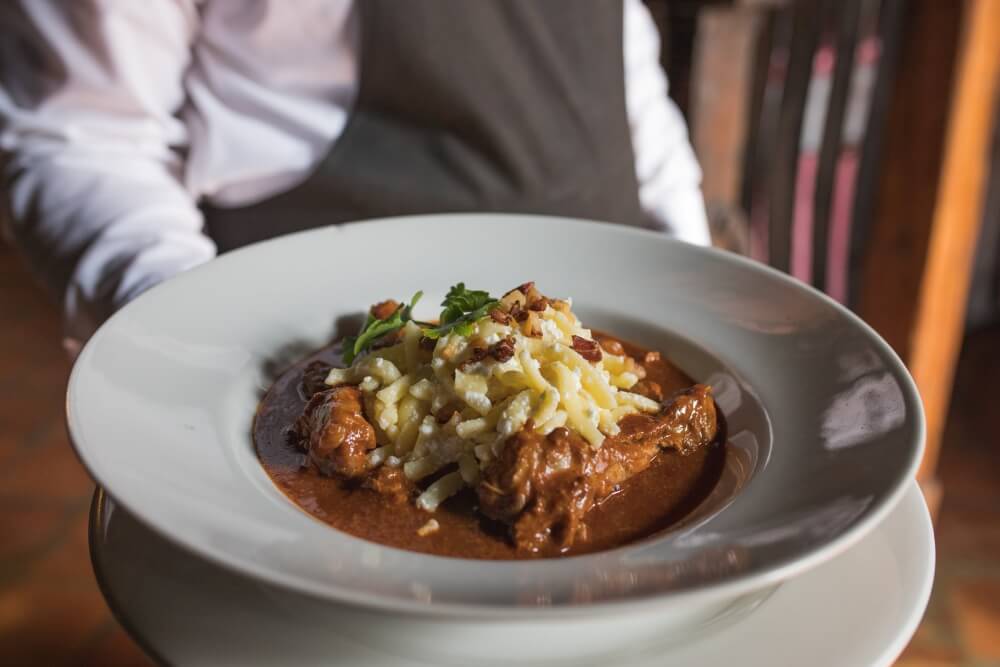 Traditional Baranja and Slavonia flavours at the Josić winery and restaurant in Zmajevac.
Traditional Baranja and Slavonia flavours at the Josić winery and restaurant in Zmajevac.
At the Josić winery and restaurant in Zmajevac they make brilliant wines. Among them, Baranja shiller, Cabernet Sauvignon, Chardonnay, Graševina, Pinot Gris and Sauvignon. You can visit the wine cellars and try traditional foods of the region in their extensive restaurant.
Vinarija Gerštmajer in Zmajevac
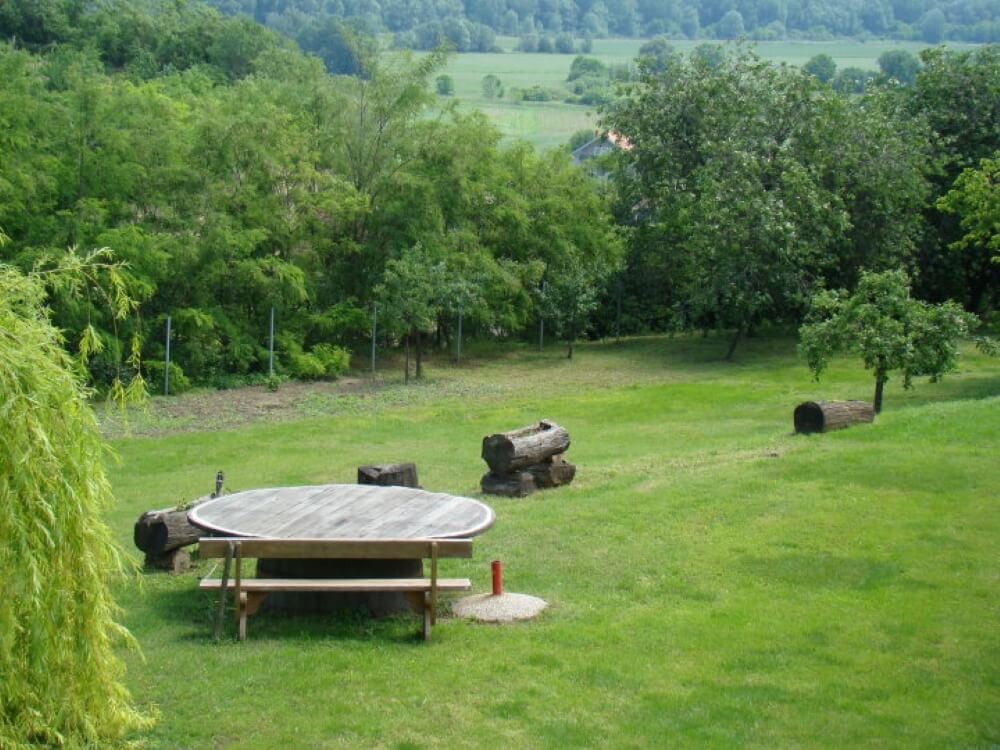 Incredible views from the garden at Vinarija Gerštmajer in Zmajevac.
Incredible views from the garden at Vinarija Gerštmajer in Zmajevac.
A deep dust gathers on some of the oldest bottles kept in the cellar at Vinarija Gerstmajer. And, there's plenty of those. The charming family patriarch is clearly a proud wine enthusiast and reserves some bottles from every year of their celebrated but small production. Sadly, this archive now stretches back only until the mid-1990s. It used to be much older, cataloguing all of the years his own father ran the winery. But, when the family returned after the war, they were greeted by empty cellars. The cellars are once again full. You can try them in the cellar or out on the terrace, overlooking a scene of uninterrupted nature.
The wildlife-rich wetlands of Kopački rit
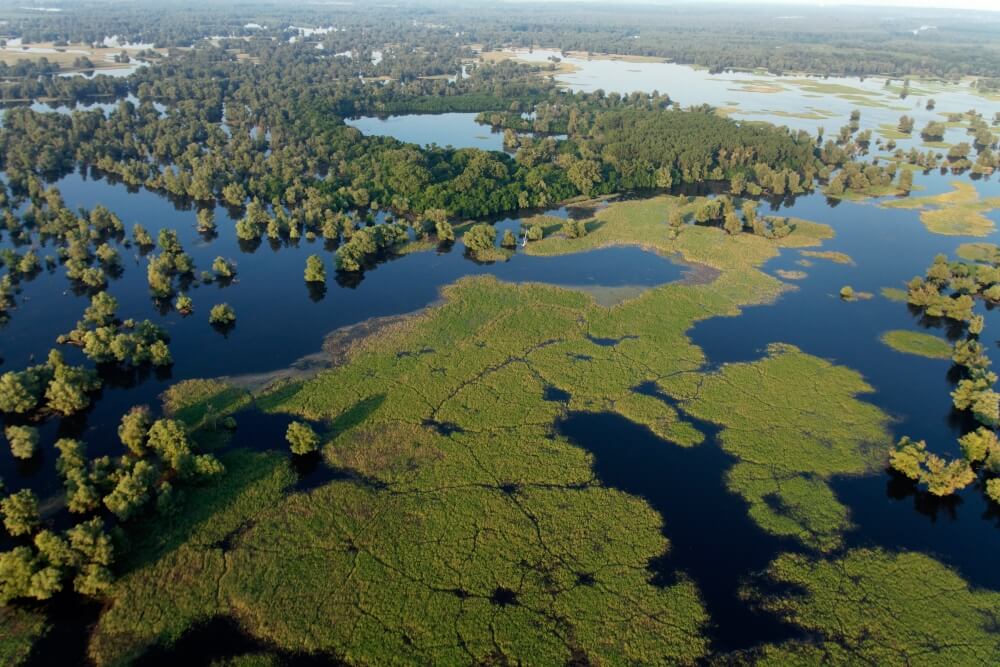 Wetlands of Kopački rit © Tourist Board of Osijek-Baranja County.
Wetlands of Kopački rit © Tourist Board of Osijek-Baranja County.
Occupying the marches, lakes and floodland between the Drava and the Danube, Nature Park Kopački rit is one of Europe's largest wetlands. Although a home to many different types of life, it is most famous for its bird population. As many as 300 different species of birds inhabit the park, many of them being migratory and nesting species. Of particular note, a large colony of grey heron and and the largest population of woodpeckers in the entire Danube basin. You can now tour a section of the waters in a large visitor boat. It is electrically powered so as not to disturb the life-rich riverbanks. After the boat drops you off, make your way through the rest of the park across specially constructed pathways that wind their way across the waters and reeds.
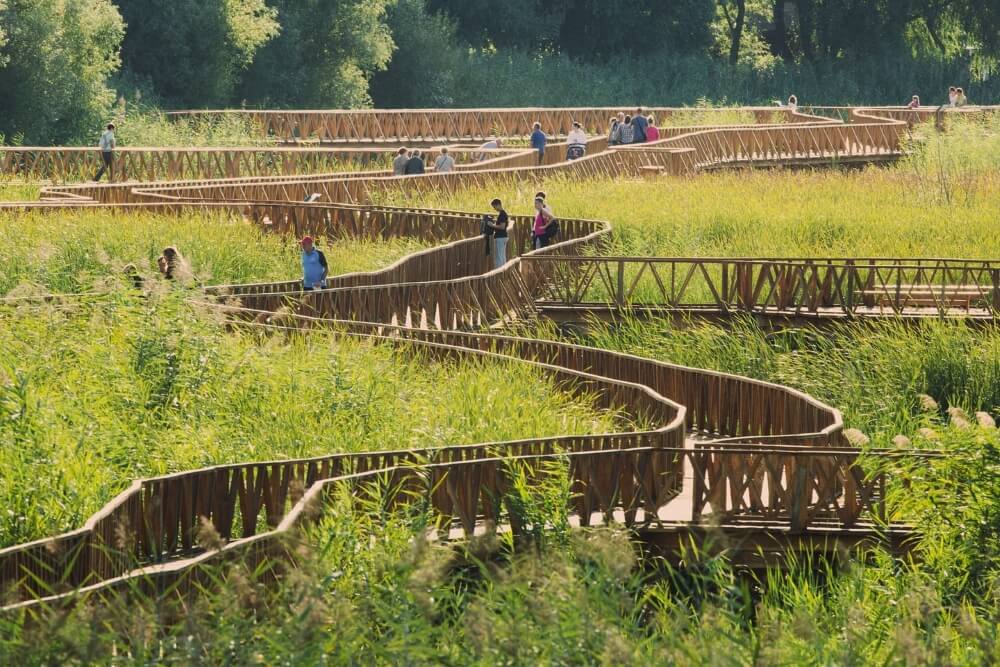 The wooden walkways of Kopački rit Nature Park in Osijek-Baranja County © Romulić & Stojčić.
The wooden walkways of Kopački rit Nature Park in Osijek-Baranja County © Romulić & Stojčić.
The OPGs of Osijek-Baranja County
The landscape in Osijek-Baranja County is only so picturesque because of the people who live in it. It is their endeavours that shape it. Traditional agricultural pursuits explain the pretty rows of vineyards, the different coloured fields and gardens filled with fruit trees. While some agriculture here exists on a grand scale, many families in the region make the most of their own small plots of land.
Osijek-Baranja County family farms or OPGs preserve the traditions of the region, not only in the way they use the land but in the produce that results. From the beekeeping that makes EU-protected honey to the vineyards producing Croatia's best white wine, practices in these family farms are often passed down from generation to generation. The best way to learn how they do it – and try the amazing traditional flavours of Osijek-Baranja County – is to go to an OPG. Here are just several you can visit.
Zorić distillery in Erdut
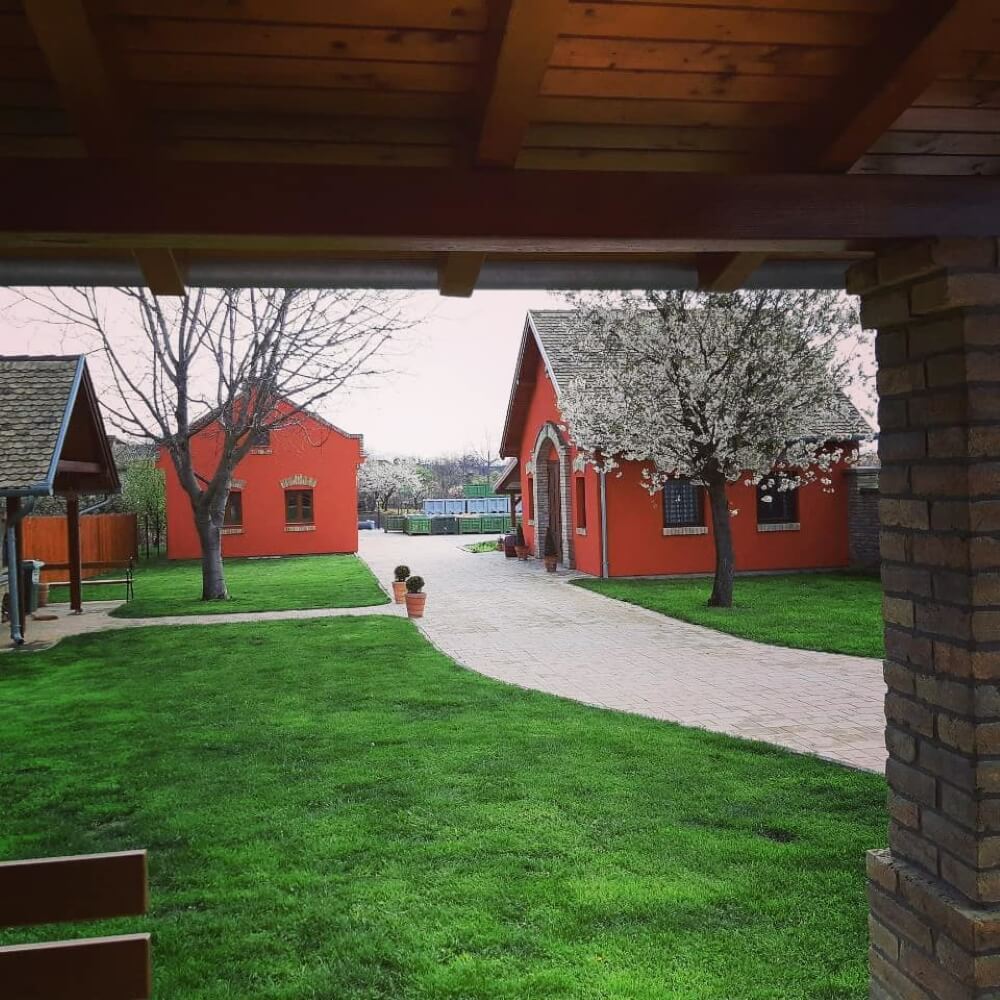 Zorić distillery in Erdut, Osijek-Baranja County.
Zorić distillery in Erdut, Osijek-Baranja County.
The Zorić family in Erdut have long been growing fruit and making Croatian brandy aka rakija. But, this youngest generation, lead by youthful father Dinko and his wife Sanja, have upped their game significantly. They have built the most modern craft rakija distillery in the region. From there, they make one of Croatia's best new premium rakijas, Divania. In English or Croatian, they will guide you around the distillery and explain the process before letting you try it on their lovely terrace. If you're lucky, you might also get to try the family-made kobasica sausages – they're very good! Their rakijas are made from apricots, quinces, apples, pears and cherries and the family are great hosts.
Seoski turizam Lacković in Bilje
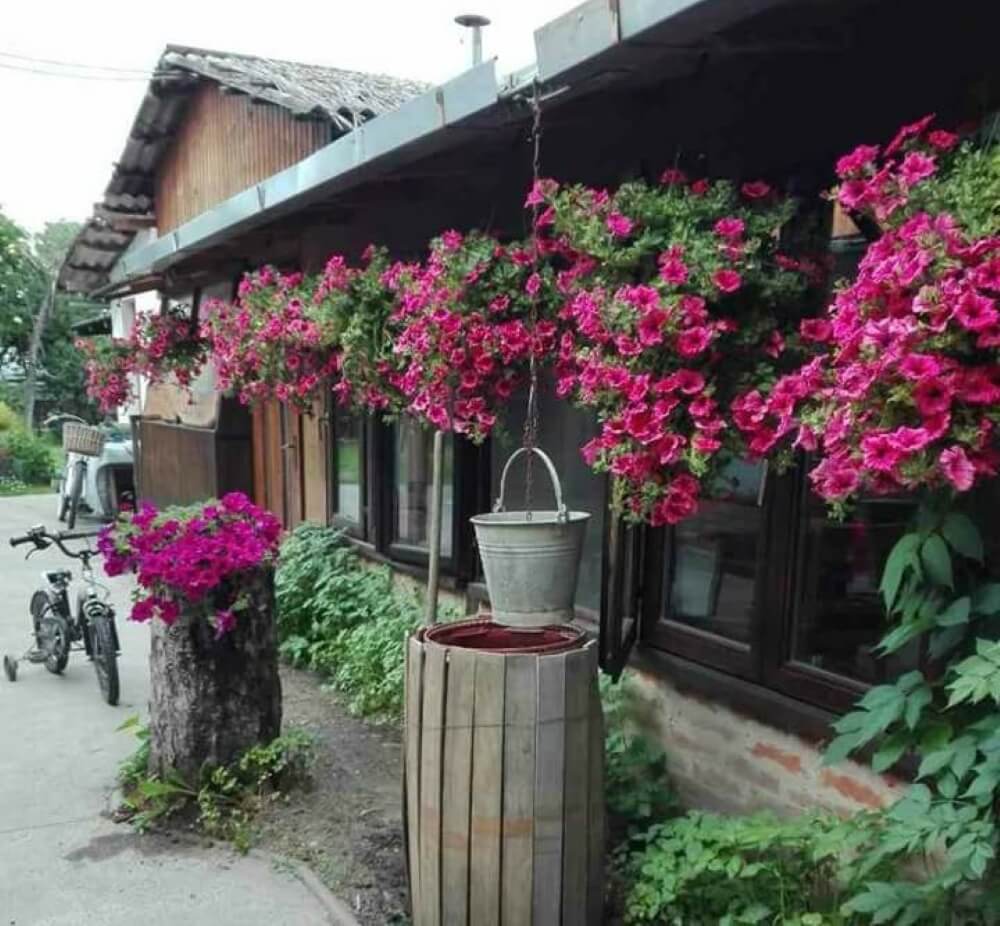 Filled with flowers, Seoski turizam Lacković in Bilje.
Filled with flowers, Seoski turizam Lacković in Bilje.
A beautiful family-run farm, with 16 beds for guests, Seoski turizam Lacković are used to hosting visitors. The farm itself has pretty rows of vegetables out back. Next to them, a variety of birds are kept. The hosting area has a lovely terrace with a view of the pretty tree-lined path that extends down through the large garden. During the recent Month of Baranja Cooking (Mjesec baranjske kuhinje), visitors tried their hand at making traditional baked foods pita and kiflice.
OPG Čudesna šuma
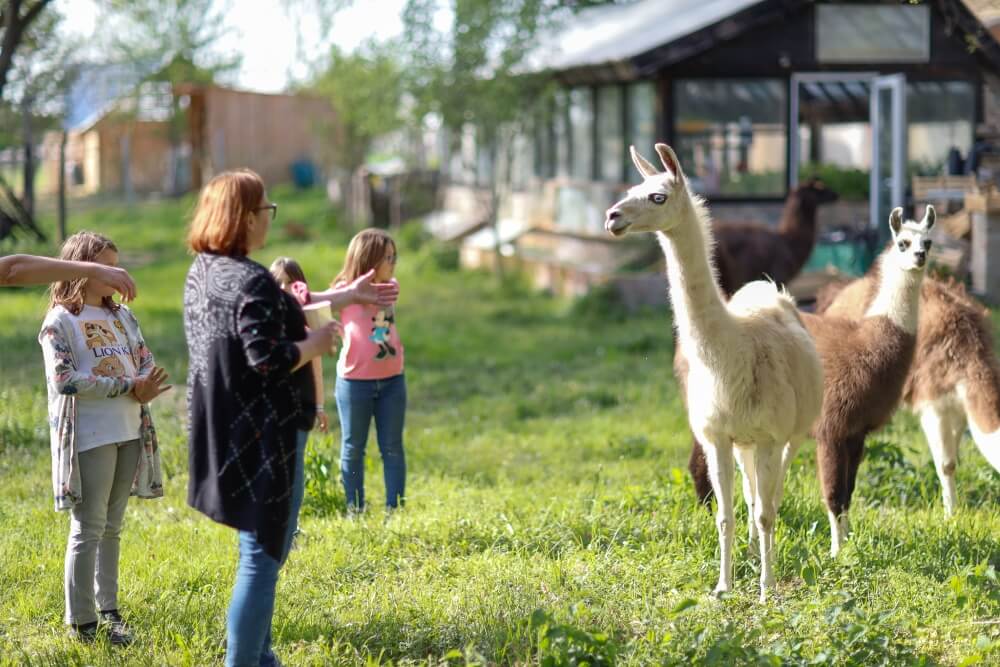 Meeting the llamas at OPG Čudesna šuma © Turistička zajednica Općine Bilje - Kopački rit.
Meeting the llamas at OPG Čudesna šuma © Turistička zajednica Općine Bilje - Kopački rit.
Visit the llamas or a special gastronomic event at this future eco-village and food forest. To read a detailed reportage from our spring 2021 visit to OPG Čudesna šuma, look here.
Both the author and Total Croatia News would like to thank the following for their invaluable help in creating this article: Ivana Jurić and the Tourist Board of Osijek-Baranja County, Marija Burek and the Tourist Board of Đakovo, Renata Forjan and Turistička zajednica Općine Bilje - Kopački rit and Domagoj Butković of expert travel guides to Slavonia and Osijek-Baranja County, Kulen travel.
OPG Čudesna šuma: Paradise Reimagined in Beautiful, Traditional Baranja
May 13, 2021 – OPG Čudesna šuma: How an unexpected turn of events helped world-renowned photographer Mario Romulić realise his lifelong dream.
War and genocide and the aftermath. Famine. Disease. Death. In a former life, harrowing images filled the lens of internationally renowned photographer Mario Romulić. But thankfully, we're now far from such scenes.
In fact, at OPG Čudesna šuma - Mario Romulić's home and family farm - we're pretty much far from everything. One other eco-farm is his only neighbour. Well, unless you count the llamas the Romulić family keep out back. Occasionally, through the rich green of surrounding trees, you see birds flying above the branches. Probably they're toing and froing from Kopački rit. The nearby Nature Park is less than a kilometre from OPG Čudesna šuma. Famously, the wetlands are home to over 250 species of birds. They are also the reason why Mario Romulić is here.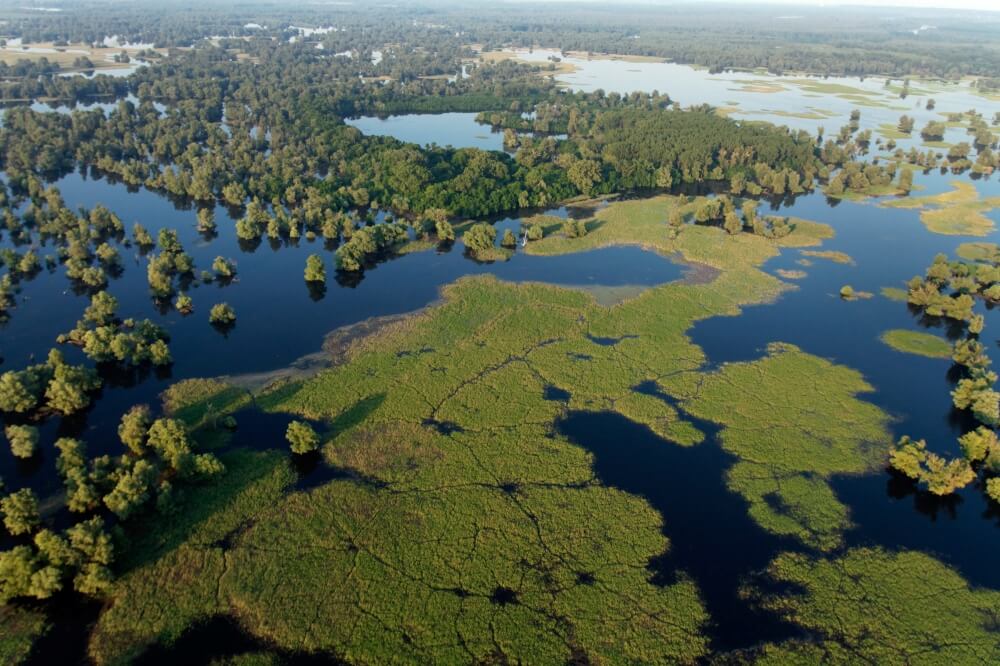 Kopački rit Nature Park © Kopački rit Nature Park.
Kopački rit Nature Park © Kopački rit Nature Park.
“Back then, I was very occupied with Kopački rit,” remembers Mario of the time, 21 years ago, when he moved to what is now OPG Čudesna šuma. “I was working as a cameraman for people like Reuters, all over the world. The assignments would last 7-10 days and I'd be in places like Afghanistan, Rwanda, Congo, Liberia, Bosnia. It was often quite dangerous. For the next 20 days, I would spend a lot of time in Kopački rit, trying to calm my nerves. It was something like a cure after seeing all these horrible scenes. Eventually, instead of travelling every day from my home in Osijek to Kopački rit, I decided to try and find something close by. And this is what I found.”
Just as this beautiful, natural landscape in Bilje, Baranja once served as a peaceful getaway for Mario Romulić, his OPG Čudesna šuma today does the same for others. Because, after dreaming for two decades of turning this blissful plot and homestead into a forest farm and eco-village, Mario Romulić is finally turning that vision into a reality.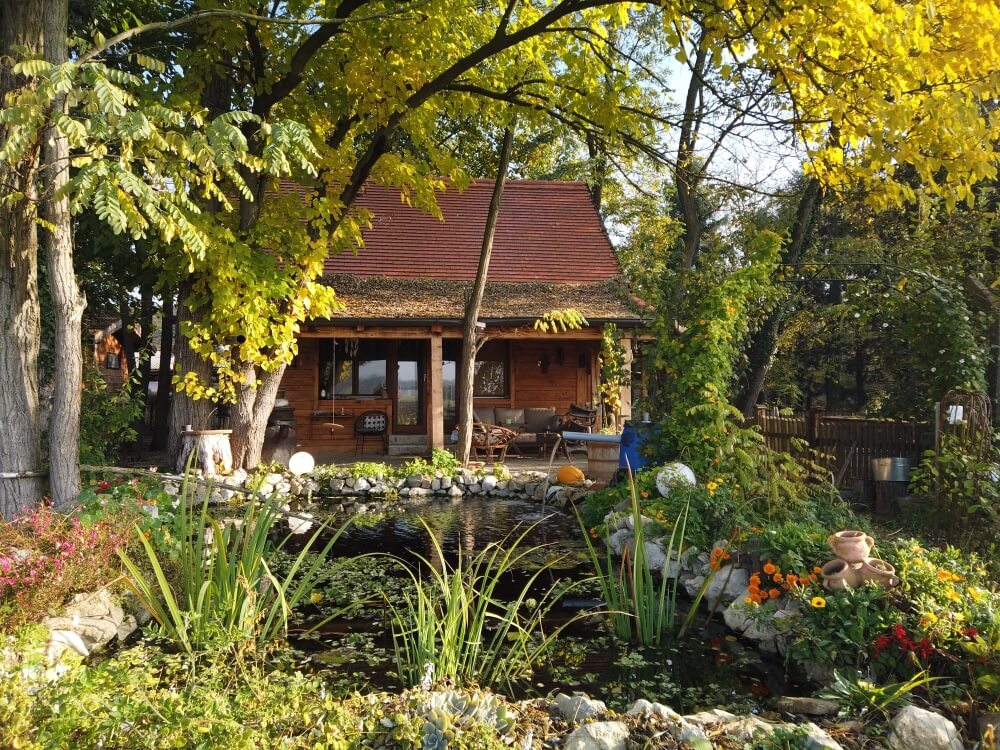 The impossibly pretty OPG Čudesna near Kopački rit Nature Park, Bilje Municipality, Baranja © OPG Čudesna šuma.
The impossibly pretty OPG Čudesna near Kopački rit Nature Park, Bilje Municipality, Baranja © OPG Čudesna šuma.
“Because of my job - first, travelling all around the world, then travelling Croatia - I did not even have much time to think about it, let alone do it,” says Mario. “But, then Corona came. Finally, I found myself at home. At last, I had time to work on my dream.”
OPG Čudesna šuma in the Month of Baranja Cooking (Mjesec baranjske kuhinje)
A group of 30 or so are Mario's guests today at OPG Čudesna šuma. They're here for a presentation of speciality cooking. It's the grand finale of the Month of Baranja Cooking (Mjesec baranjske kuhinje).
Over previous weeks, OPGs from all across the region have welcomed guests to try goulash, soups, stews, perklet and other traditional foods of the area. While visiting, they've been embraced by the beautiful landscape of Baranja. Not only have they discovered how this delightful, distinct cuisine tastes, but also they've learned exactly how it's prepared. However, they've evidently saved the best for last. On the menu today, river fish inventively cooked, accompanied by a riotous rainbow of seasonal vegetables.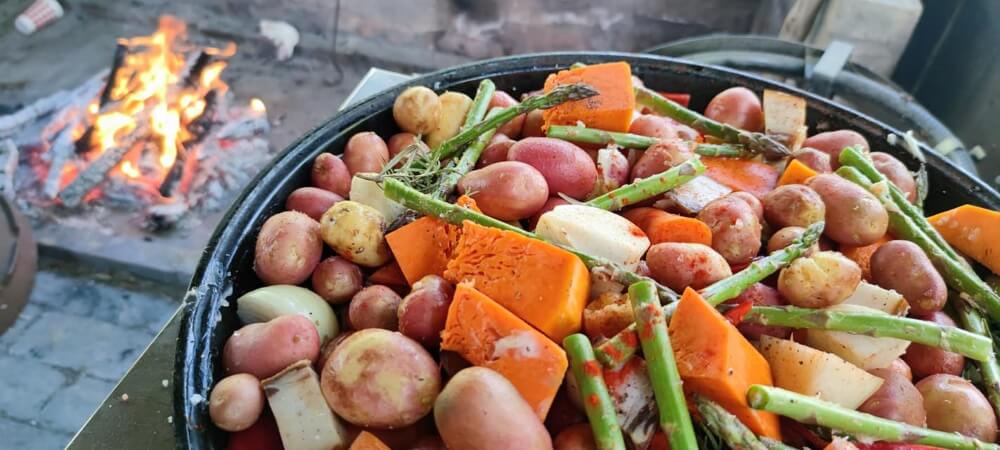 Seasonal vegetables of Baranja in springtime at the Month of Baranja Cooking (Mjesec baranjske kuhinje) © OPG Čudesna šuma.
Seasonal vegetables of Baranja in springtime at the Month of Baranja Cooking (Mjesec baranjske kuhinje) © OPG Čudesna šuma.
It's a beautifully sunny day, right at the start of May. It depends on your preference, but looking across this happy vista in the glorious sunshine, it's difficult to imagine this not being the perfect time to be in Baranja. Young children are raised to chest height by their parents so they can meet Mario's free-roaming llamas face-to-face. The children's faces flit between surprise, curiosity and delight. The llamas return their stare. They're used to welcoming new guests.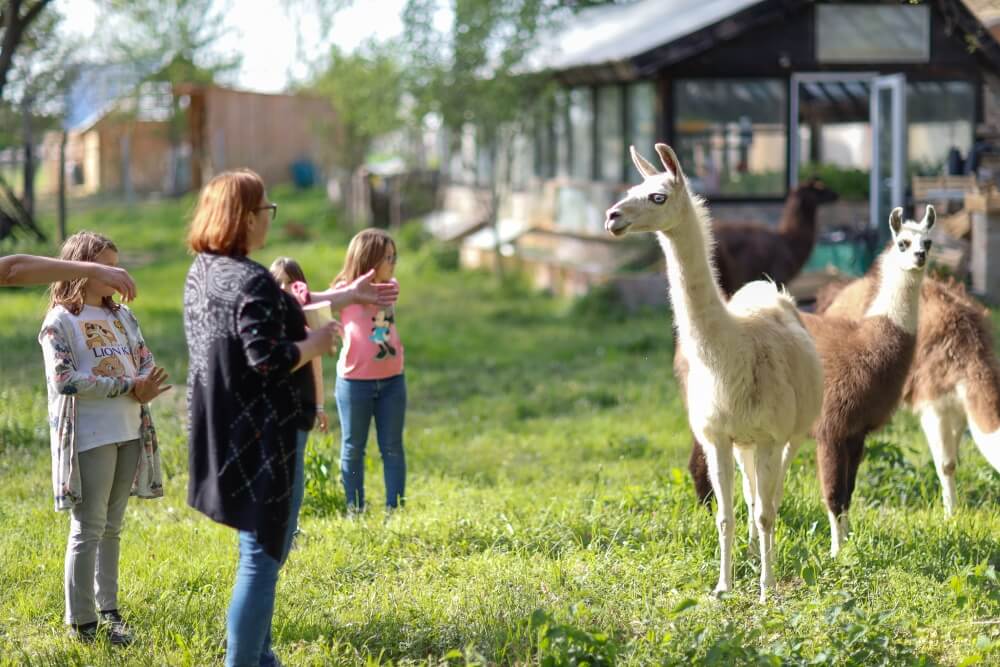 Meeting the Romulić family llamas at OPG Čudesna šuma © Turistička zajednica Općine Bilje - Kopački rit.
Meeting the Romulić family llamas at OPG Čudesna šuma © Turistička zajednica Općine Bilje - Kopački rit.
Partially shaded by trees, the smiling adult guests sit casually on wooden benches around a central, outdoor cooking area. Several open fires display a range of traditional cooking methods. Steam rises from a cast-iron stove suspended over one. Beneath the vapours, you can make out the dish is fish paprikash. It's unmistakable because of the deeply red coloured bubbles, a result of generous amounts of paprika.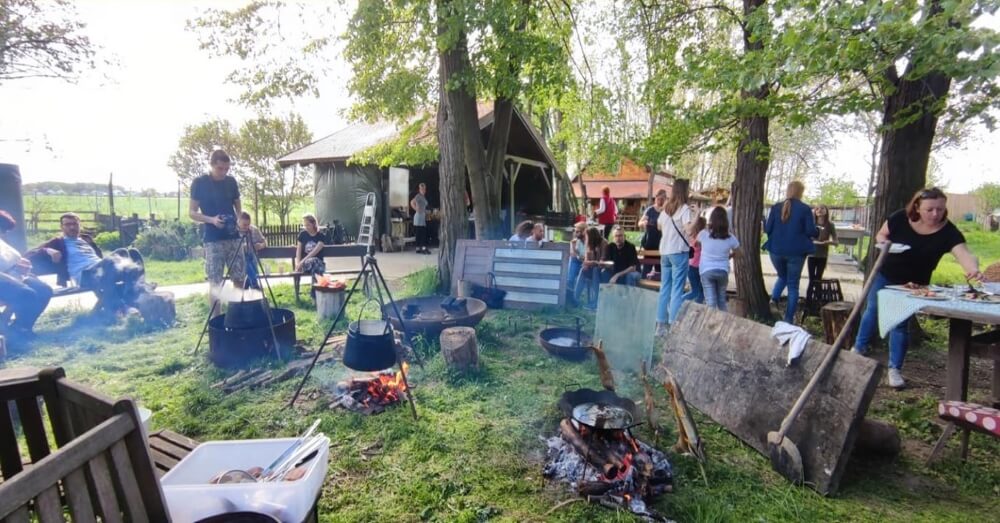 Guests enjoy a warm springtime day at OPG Čudesna šuma during the Month of Baranja Cooking (Mjesec baranjske kuhinje), as fish paprikas cooks over an open fire © OPG Čudesna šuma.
Guests enjoy a warm springtime day at OPG Čudesna šuma during the Month of Baranja Cooking (Mjesec baranjske kuhinje), as fish paprikas cooks over an open fire © OPG Čudesna šuma.
A huge bag of this paprika sits propped up, close by. It's from another organic OPG, just a kilometre or so from here. The colour is vivid, impossibly red, unrecognisable from anything store-bought. At the next fire, pike impaled on wooden sticks are placed far enough from the flickering flames so they cook slowly and do not burn.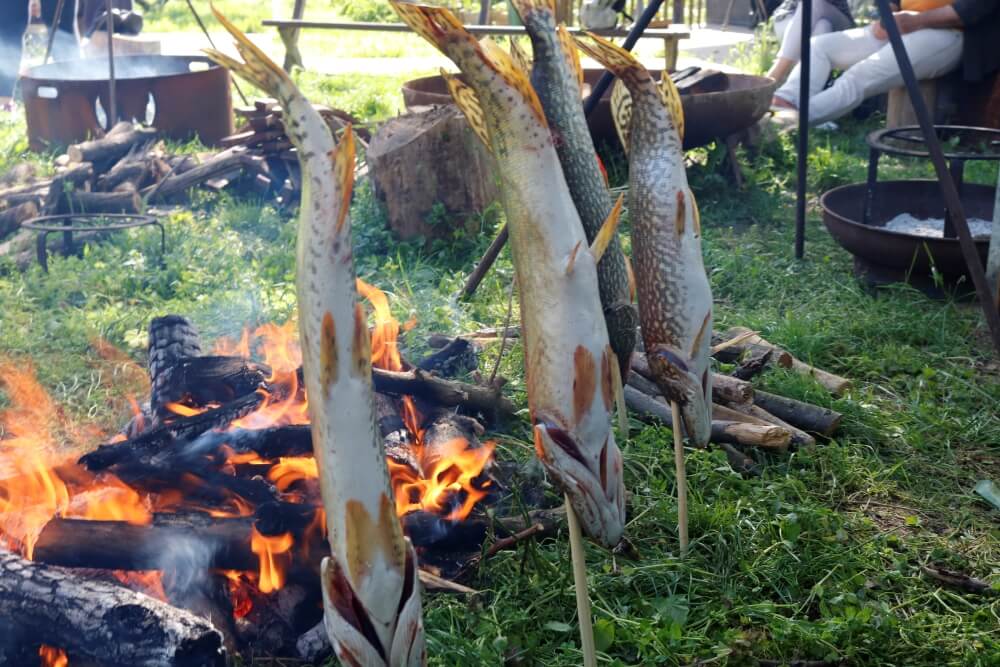 Pike impaled on sticks, cooking by an open fire at OPG Čudesna šuma @ Marc Rowlands.
Pike impaled on sticks, cooking by an open fire at OPG Čudesna šuma @ Marc Rowlands.
In the outdoor kitchen, Mario Romulić's co-chefs prepare an unending supply of fish dishes and vegetables. Carp, catfish, trout, bream. There's a bounty of fresh asparagus. It's that time of year. With the restraint of experience, they've cooked it perfectly. After the crunch of the bite, the flavour explodes. They're seasoned simply – delicious olive oil and sea salt.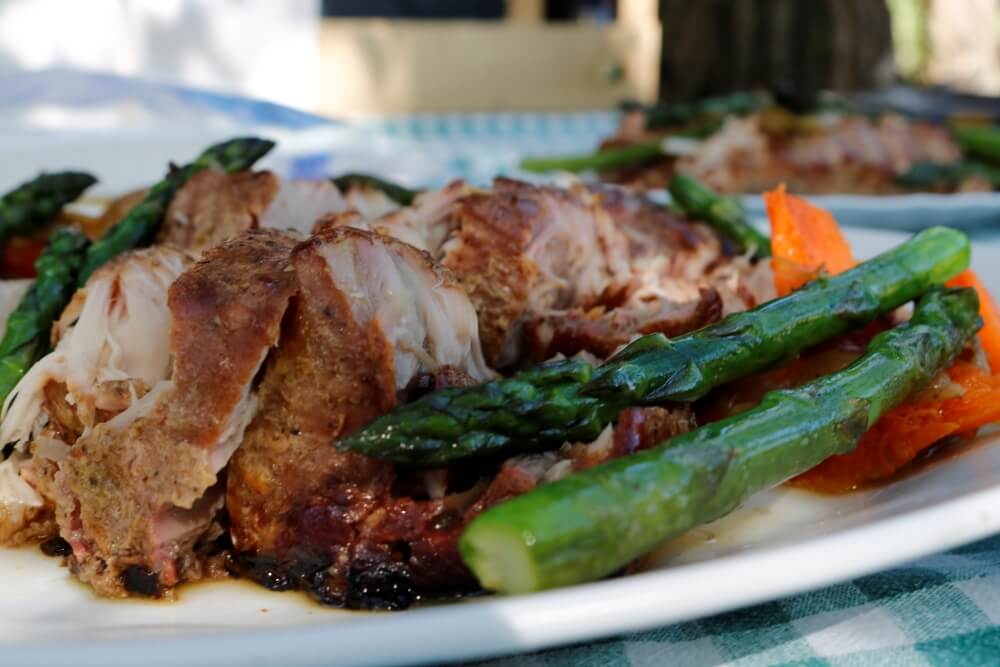 Seasonal asparagus, perfectly cooked, served with smoked river fish © Marc Rowlands.
Seasonal asparagus, perfectly cooked, served with smoked river fish © Marc Rowlands.
A group of peers – accomplished chefs from Osijek-Baranja restaurants – peak over the shoulders of Romulić's co-chefs. They're admiring the inventive techniques employed. Although, being chefs, they can't help themselves. They end up briefly forgetting their families in order to help out.
Mario Romulić, the host with the most
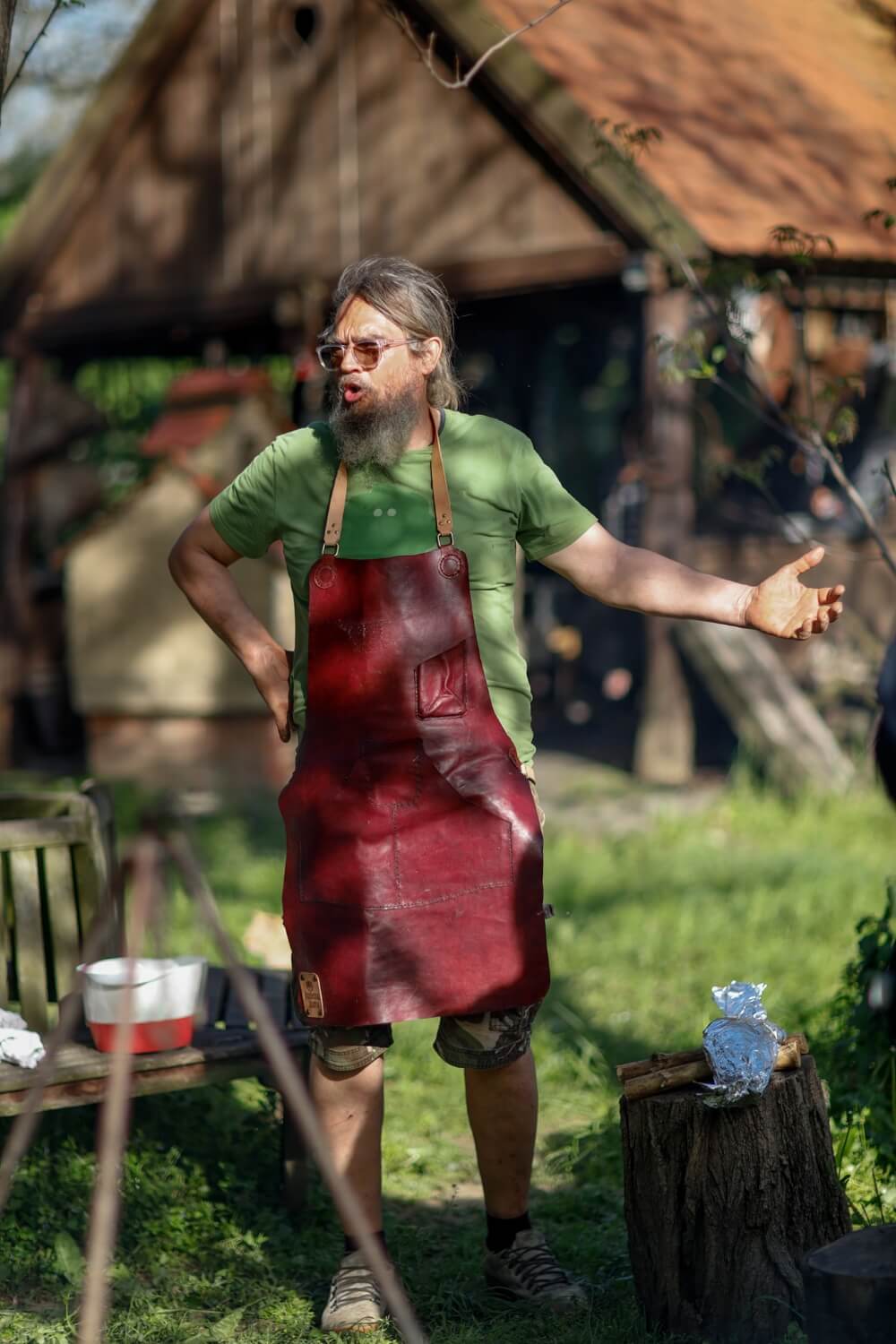 Mario Romulić © Turistička zajednica Općine Bilje - Kopački rit.
Mario Romulić © Turistička zajednica Općine Bilje - Kopački rit.
After all the guests arrive, Mario Romulić holds court. Cheerily he welcomes us all to OPG Čudesna šuma and the event. Without question, the success of rural, village tourism depends on the personalities of the hosts. It's no good plonking a group of visitors in a pretty place and throwing some food in front of them. We've all seen trees, grass and food before. Rural tourism is not just about the place, it's about the experience, the ambience. And, especially, it's about the people.
Hands down, the OPGs of Slavonia and Baranja are the best in Croatia at this. The folks here are famous for their friendliness, warm welcome and big personalities. And, Mario Romulić has one of the biggest of them all.
In the research for this reportage, looking back at archive pictures of Mario Romulić is startling. During his years spent as an international photographer, he himself has been photographed many times – on assignment in distant countries, at the opening of exhibitions that have showcased his celebrated work. In most, there's an intensity to his stare. It's sometimes difficult to look at. He looks like a man who has tales you never want to hear, like a man who has seen too much.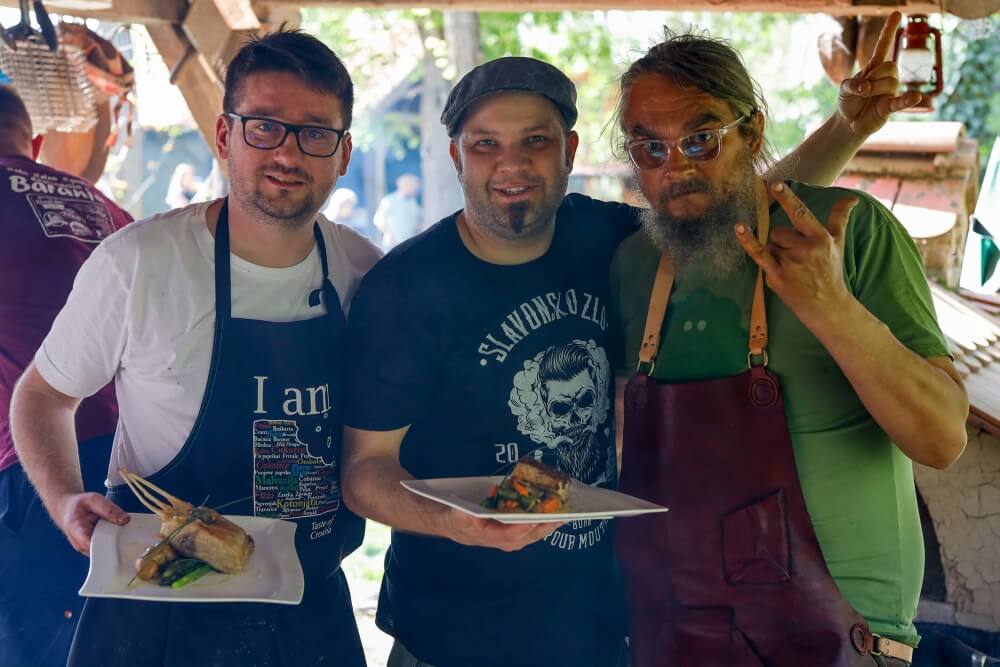 (L- R) OPG Čudesna šuma co-chef at the event Mihael Tomić, renowned Osijek chef Ivan Đukić currently of Osijek's Lipov Hlad and a happy Mario Romulić © Turistička zajednica Općine Bilje - Kopački rit.
(L- R) OPG Čudesna šuma co-chef at the event Mihael Tomić, renowned Osijek chef Ivan Đukić currently of Osijek's Lipov Hlad and a happy Mario Romulić © Turistička zajednica Općine Bilje - Kopački rit.
By comparison, the Mario Romulić that welcomes us at OPG Čudesna šuma today is unrecognisable. Sure, there's a little more grey to his long hair and beard but, otherwise, he looks incredibly healthy and happy. The intense stare is gone, replaced by a warm, wide smile that shows across his entire face. Even in early May, he has a darkened skin tone, the telltale signs of a man who spends much of the day outdoors. Romulić's enthusiasm for his guests and the event is palpable. After his sincere welcome, this enthusiasm is immediately transferred to each of his guests.
Mrs Romulić ensures everyone's glass is overflowing with wine or juice. One of Mario's teenage sons helps out with the food, while the other is taking photographs of the event. Well, someone has to do the photography now that dad wants to be a chef and host! Mario himself is engulfed in smoke. Among the other duties he's assumed today, Mario is tending a smoker. Without a doubt, this is the most revelatory cooking method we meet today.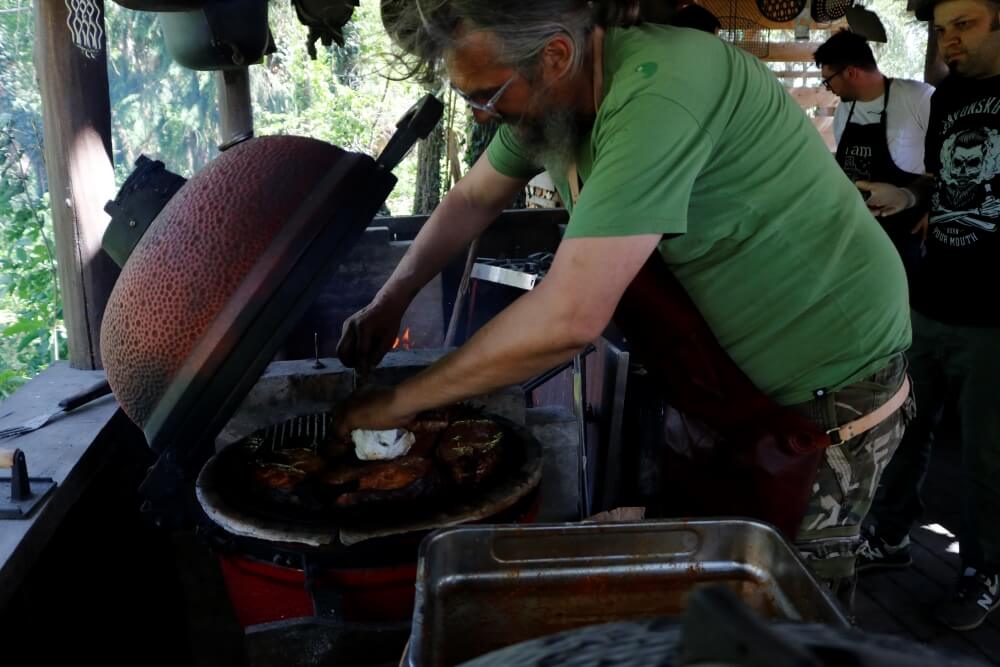 Mario Romulić tends to smoked river fish, a revelatory gastronomic experience at OPG Čudesna šuma © Marc Rowlands.
Mario Romulić tends to smoked river fish, a revelatory gastronomic experience at OPG Čudesna šuma © Marc Rowlands.
Smoked fish of Slavonia and Baranja at OPG Čudesna šuma
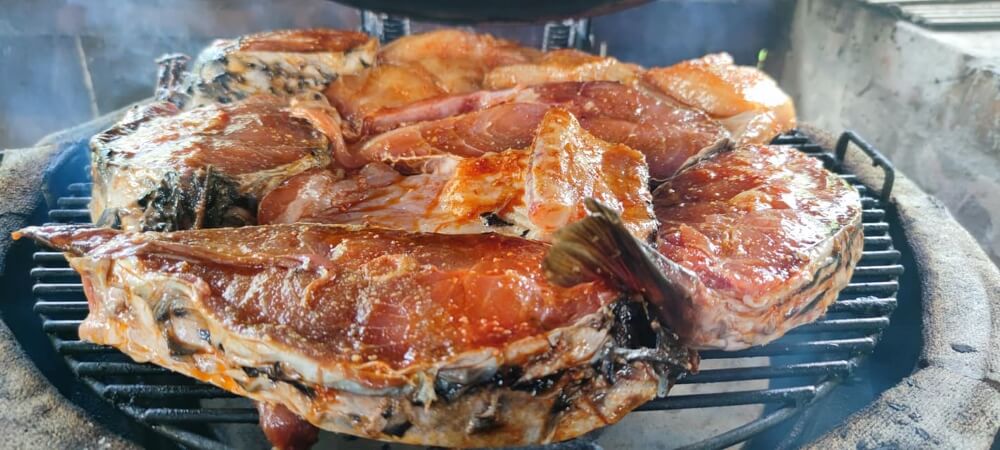 An American-style smoker, loaded with river fish. TOP TIP: A great way to stop fish sticking to the grill of your barbecue or smoker is to place them on top of a layer of lemon slices © OPG Čudesna šuma.
An American-style smoker, loaded with river fish. TOP TIP: A great way to stop fish sticking to the grill of your barbecue or smoker is to place them on top of a layer of lemon slices © OPG Čudesna šuma.
“We do have smoked fish here, but not in this way,” he says. “This is more like an American grill. I never heard of anyone trying Baranja cooking like this. Actually, I never heard of anyone nearby who has a smoker like this. The first time I tried stuka (pike) in the smoker, that was unbelievable. It's incomparable, really special.” Exquisite presentation of river fish by the enthusiastic team of OPG Čudesna šuma © Turistička zajednica Općine Bilje - Kopački rit.
Exquisite presentation of river fish by the enthusiastic team of OPG Čudesna šuma © Turistička zajednica Općine Bilje - Kopački rit.
“In Slavonia and Baranja, there are just a few ways we usually cook our river fish - carp on sticks, fish paprikash, perklet and fried fish. So, we tried something new, to expand the palette. For instance, almost nobody eats Babuška (a type of carp). They feed it instead to their pigs. It costs 5 kuna a kilo! But, if you cook it in this completely natural way, it's delicious.”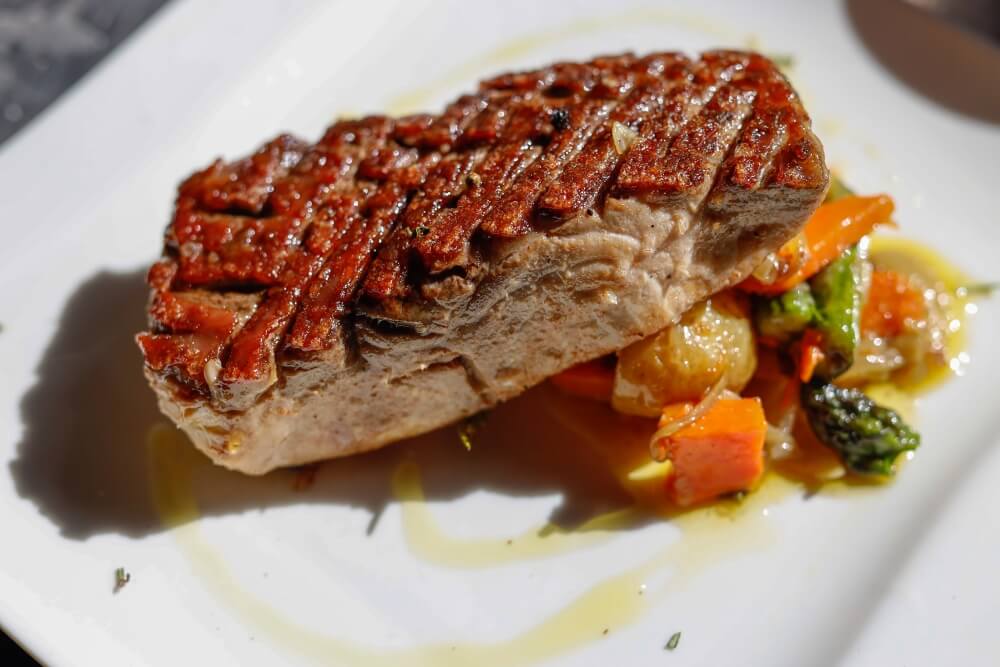 More river fish, cooked by the team of OPG Čudesna šuma © Turistička zajednica Općine Bilje - Kopački rit.
More river fish, cooked by the team of OPG Čudesna šuma © Turistička zajednica Općine Bilje - Kopački rit.
He's not wrong. Today's mountain of different smoked fish is the talk on most of the adult lips. The rich flavours surprise. Compliments and returns for second helpings ensue. Mario stands to one side, happily watching as his smoked fish secret escapes. In the future, he plans similar events based on other regional foods - Black Slavonian pig, wild meats like deer or boar. Eventually, in the seven hectares of land he owns here, he would like to expand OPG Čudesna šuma as an eco-village, with beds for visitors, a natural swimming pool and then surround it with a food forest. Big plans. It looks as though the camera may stay more permanently in the hands of his son. Because it's difficult to imagine Mario Romulić leaving his happy place and the realisation of his long-held dream.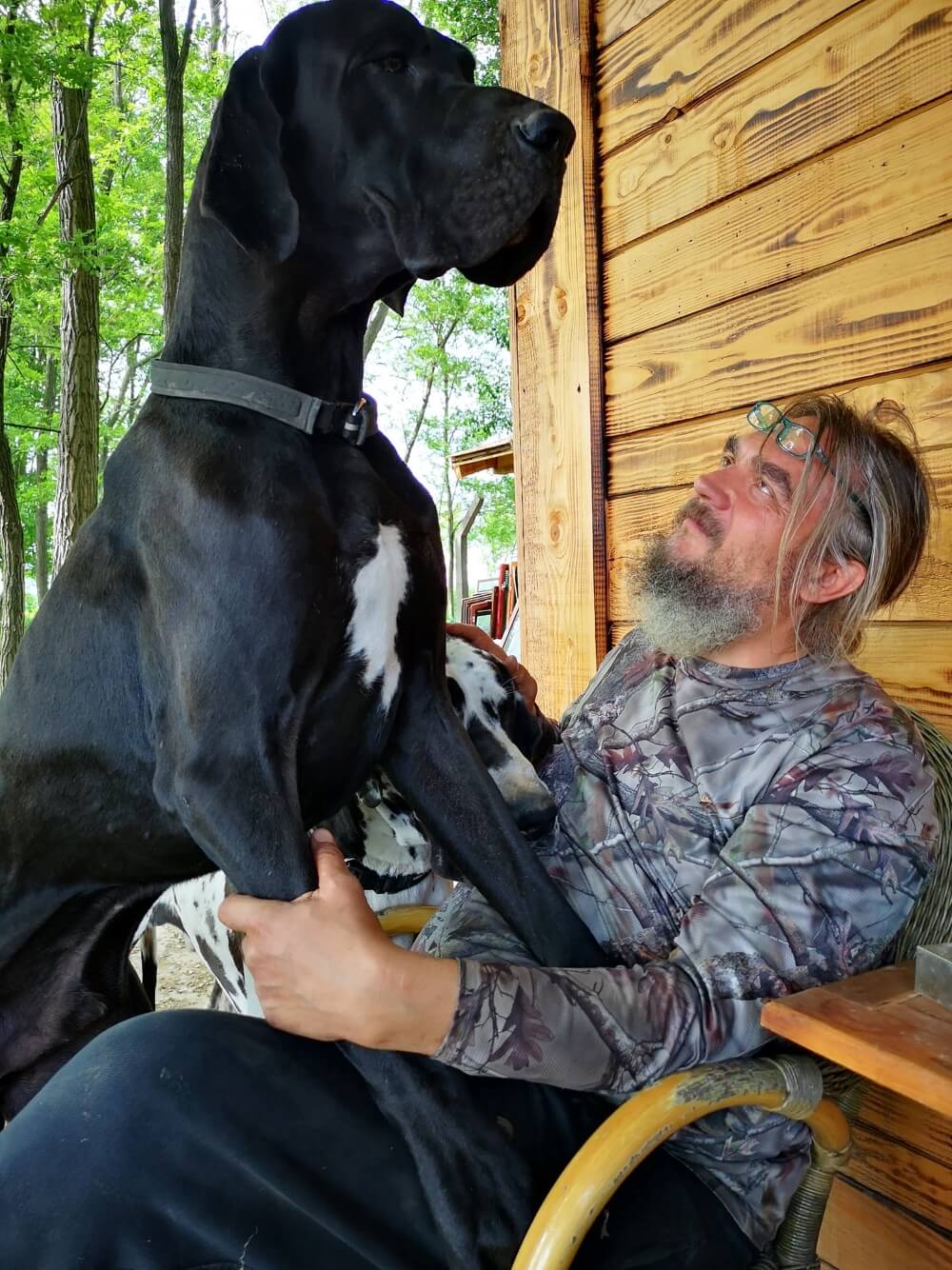 Mario Romulić in his happy place, with a friend © OPG Čudesna šuma.
Mario Romulić in his happy place, with a friend © OPG Čudesna šuma.
Both the author and Total Croatia News would like to thank the following for their invaluable help in creating this article: Ivana Jurić and the Tourist Board of Osijek-Baranja County, OPG Čudesna šuma, Mario Romulić and family, Renata Forjan and Turistička zajednica Općine Bilje - Kopački rit and Domagoj Butković of expert travel guides to Slavonia and Baranja, Kulen travel.
Syrian Migrant Family Rescued from Inaccessible Slavonia Wetlands
February 13, 2021 – Osijek-Baranja police rescued a Syrian migrant family, including two children, from inaccessible Slavonian wetland terrain. They had become cut off and stranded on an island, surrounded by swollen waters
Osijek-Baranja police have rescued a Syrian migrant family, including two children, from inaccessible Slavonian wetland terrain, police revealed in a statement released on Saturday 13 February. They had become cut off, surrounded by swollen waters, in the area around Kopacki rit Nature Park.
At around 10 a.m. Friday 12 February, in a forest area near Aljmaš, police found a 19-year-old Syrian citizen during a regular patrol. The 19-year-old asked for police help because his family was cut off on a river island of Kopački rit.
Immediately after learning about the other members of the Syrian migrant family, the police dispatched two patrol boats to look for them. They discovered the Syrian migrant family in a very short time. In addition to the teenager already discovered, police found the rest of the Syrian migrant family travelling party to include three women, born in 1973, 1998 and 1999, and two children, born in 2016 and 2017.
The found persons were transported to the mainland by the police. There, they were met by an ambulance, which had been called due to cold temperatures in the area and fears their exposure could have lead to hypothermia. They were transported to the Osijek Clinical Hospital Center (KBC).
The Syrian migrant family was released from the hospital later in the same day.
It has been established that the Syrian migrant family have expressed their intention to apply for international protection in the Republic of Croatia. They have been sent to the Shelter for International Protection Seekers, a reception centre for asylum seekers in Zagreb, said the police.
Kopački Rit, where the Syrian migrant family were rescued, is a nature park in the eastern Croatia municipalities of Bilje and Kneževi Vinogradi. It is located northwest of the confluence of the Drava and the Danube, right next to the border with Serbia. It is comprised of many backwaters, marshland and ponds that exist immediately between these two great rivers. It is one of the most important, largest and most attractive preserved intact wetlands in Europe.
For the latest travel info, bookmark our main travel info article, which is updated daily.
Read the Croatian Travel Update in your language - now available in 24 languages.
All Full-Time Osijek and Baranja Students Get Free Train Travel
January 9, 2021 – From this year, full-time Osijek and Baranja students can get free train travel any time throughout their own county and for travel to educational centres anywhere in Croatia, in a new deal struck by the county and the national train operator
Once a sea bed, the vast flatlands of Slavonia are perfect for farming. At one time, this area was the breadbasket for much of Yugoslavia. It really wasn't so long ago that many folks left dry and dusty Dalmatia in search of employment and new lives on this fertile ground. Now, it's the other way round - Slavonian youth travel to the coast each summer in search of seasonal work. Others move to Ireland, Germany, Austria. Slavonia is losing many skilled younger people at an alarming rate. Increased mechanisation has reduced the need for labour in the area's agriculture. And, besides, most Slavonian youths are these days educated to a degree where their ambitions are greater than joining local agricultural endeavours.
In an area with limited possibilities, limited opportunities, education lies at the heart of survival in Slavonia. Local authorities know this and try to facilitate education as best they can. It is to that end that those in the Slavonian county of Osijek and Baranja have struck a deal with Croatia's national train operator to offer free train travel to all full-time Osijek and Baranja students.
Agreed upon at the end of last year, the scheme was implemented on 1 January 2021. Osijek and Baranja County has agreed to co-finance journeys for full-time Osijek and Baranja students who study not only within the county itself but across the whole of Croatia.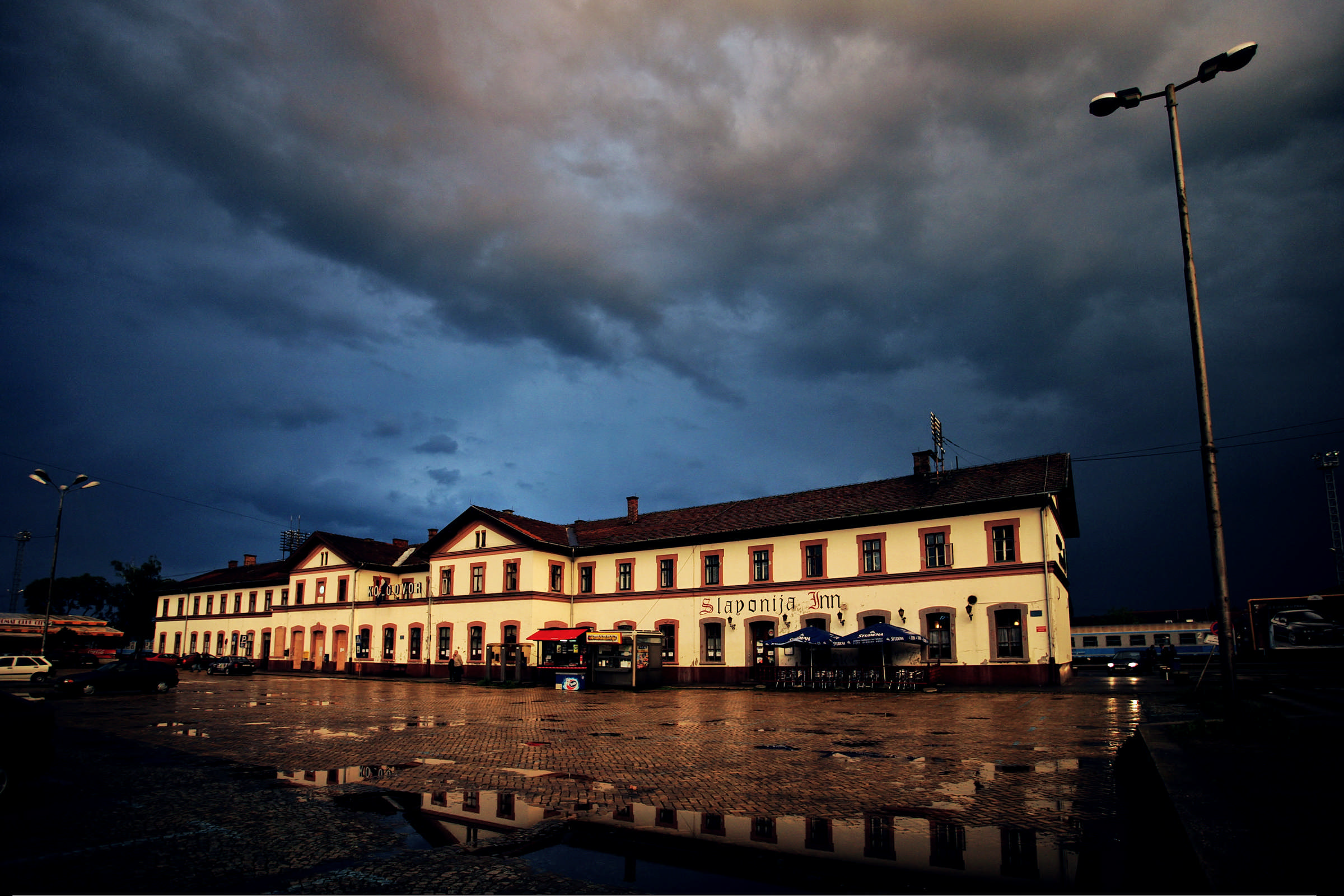 Osijek train station © Romulić & Stojčić
Osijek train station © Romulić & Stojčić
Monthly tickets for travel within the county already held a discount of up to 65 percent given to full-time students by the train operator, depending on the route. The County has now agreed to pay the remainder of the monthly ticket for all full-time Osijek and Baranja students. To meet the requirements of this deal, the departing and destination stations must both be in Osijek-Baranja County. The free monthly ticket allows an unlimited number of trips on the route, meaning that Osijek and Baranja students can also use the train for free on recreational journeys within the county.
The second deal sees the County co-finance 50% of journey costs for full-time Osijek and Baranja students who study elsewhere in Croatia, with the train operator HŽ agreeing to grant a discount to cover the other 50 %.
In order to obtain a free (monthly or individual) ticket, it is necessary to first obtain a certificate from their Administrative Department for the Economy. To get the certificate, Osijek and Baranja students must submit a copy of their identity card, a certificate of full-time study and two completed application forms (these can be found on the county's website www.obz.hr). Requests can be made in person or by mail (Osijek-Baranja County, Administrative Department for Economy, Županijska 4, Osijek or on the e-mail: This email address is being protected from spambots. You need JavaScript enabled to view it.
Free tickets can thereafter be bought by Osijek and Baranja students at the box office, prior to travel, or on the train itself, upon producing the relevant and needed documentation.
Stories from the Diaspora: Moving from Osijek to Sweden
December 8, 2020 – Yesterday, TCN reported that Croatia is among the most sought after tourist destinations for people in Sweden. Today, we meet a couple who went the other way – from Osijek to Sweden – for a more permanent stay. How does life compare for young couple Marin and Vedrana?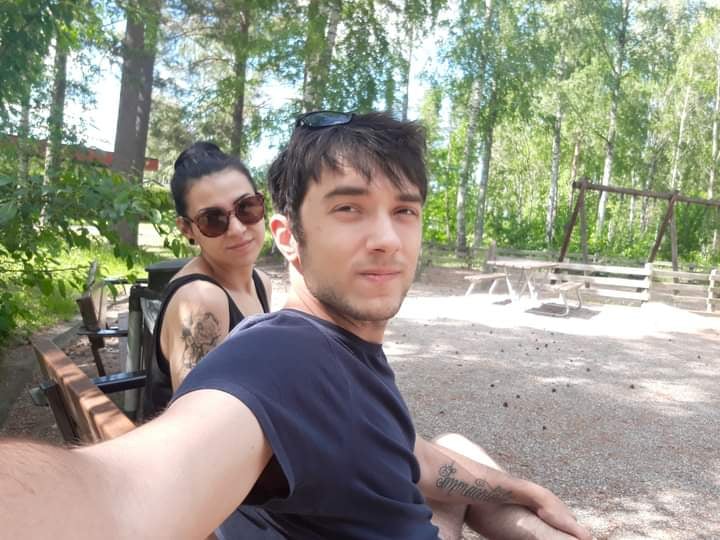
Marin Relja from Darda (25) and Vedrana Maksimovic from Sarvaš (24) swapped Slavonia for Västerås in June of 2019. We interviewed them to find out some of the ways life compares when you move from Osijek to Sweden.
Marin: We lived with parents when we were back in Osijek. A lot of the time we spent at Vedrana's parents, we had our own space there, which was great, but we didn't have total freedom. There were always quite a lot of other people around and when you are surrounded by family, certain responsibilities are put on you. It's much easier to live by yourself.
Vedrana: If we'd stayed in Osijek, probably we would have needed some support from our families so we could live together, independently. Here, we can do that by ourselves.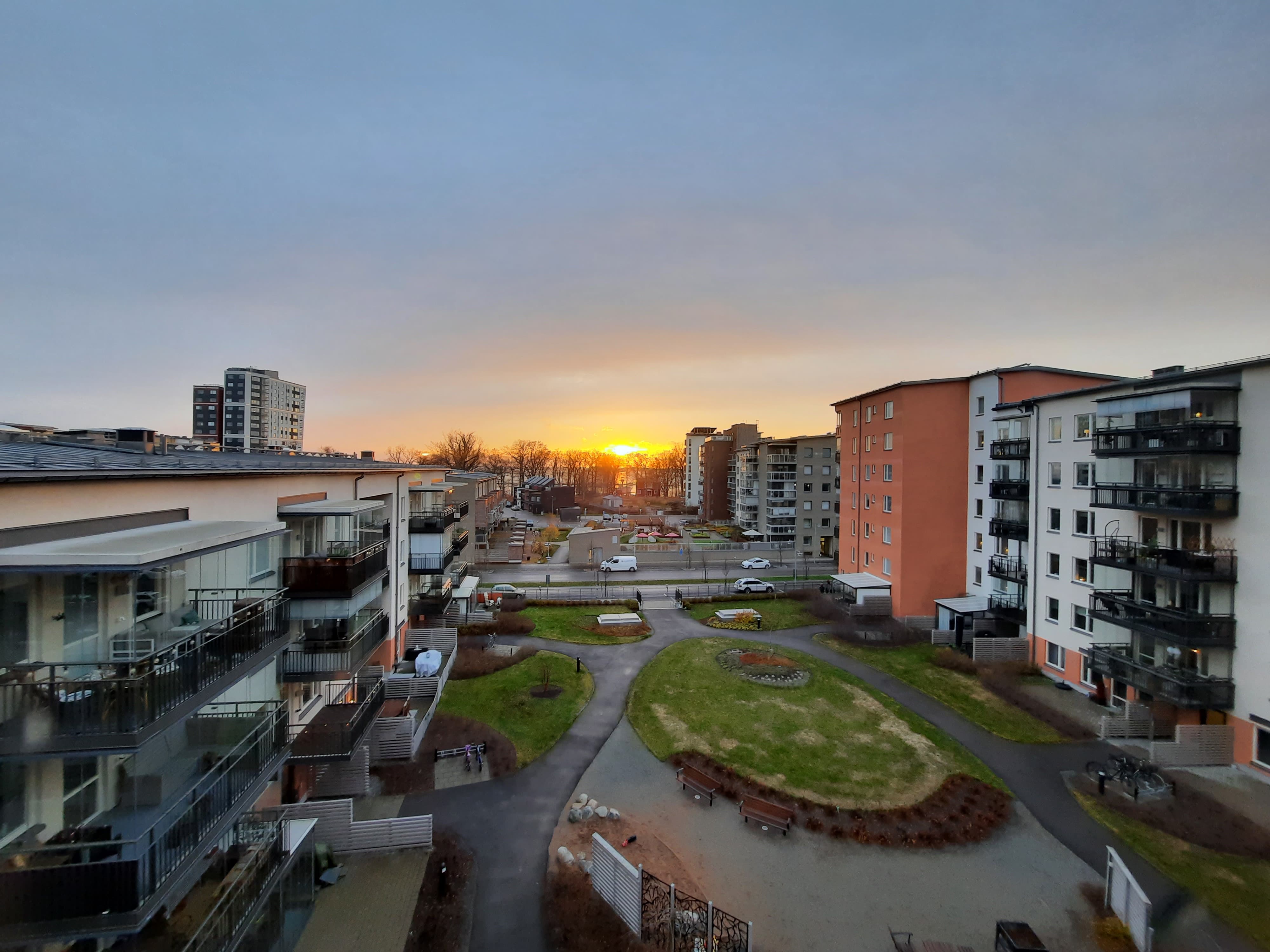 Marin and Vedrana's new neighbourhood, in Västerås, Sweden
Marin and Vedrana's new neighbourhood, in Västerås, Sweden
Why did you move from Osijek to Sweden?
Marin: There are lots of different reasons - opportunities, money, the church...It's cold. And there is a lot of snow. I like winter a lot more than summer. If it's cold, you can always put on more clothes. If it's too hot, what can you do?
Vedrana: I hate the winter and cold weather, actually. Marin wanted to come here. And my brother was already here. Maybe because it's totally different? Marin wanted to go to Ireland or Sweden. But, Ireland is a religious country, Catholic, like back home. We didn't want to live in another place like Croatia. I was here visiting, one year before we came, and it was -15. Freezing. Right now it's not so bad, around 4.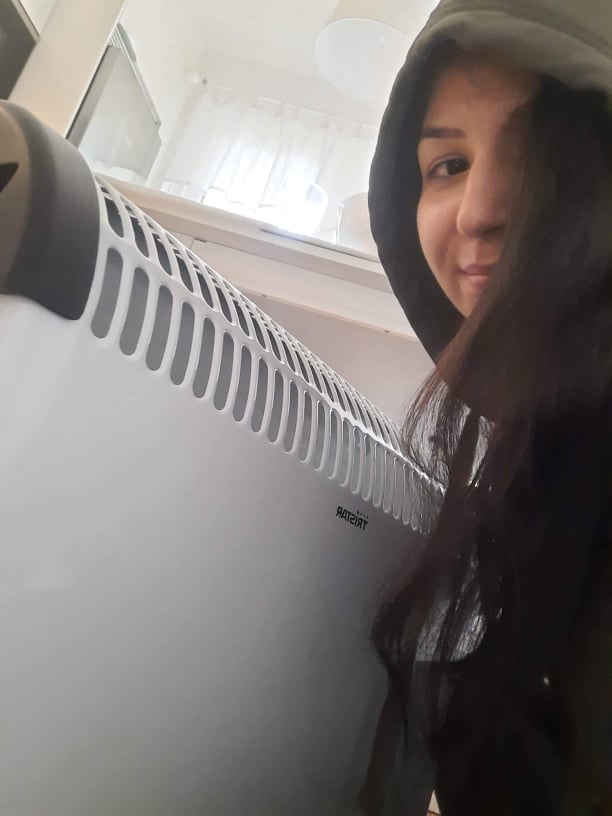
Vedrana doesn't like the cold. Marin's dream job is riding snowmobiles all day.
Marin: It can be -10 here but feel like -30 because the winds are sometimes very strong. Last winter wasn't so bad, but if you're on the windy side, it can feel really cold. I wear Christmas socks a lot. They're very warm. I have many pairs.
I saw you also have many pairs of papuče (slippers) by your front door. Why?
Marin: The tradition isn't going to die (Vedrana laughs). We brought that tradition with us from Osijek to Sweden. Most of them are for us, so we can wear different pairs, but some are for guests, although we rarely have any. We just have extra papuče that we don't use.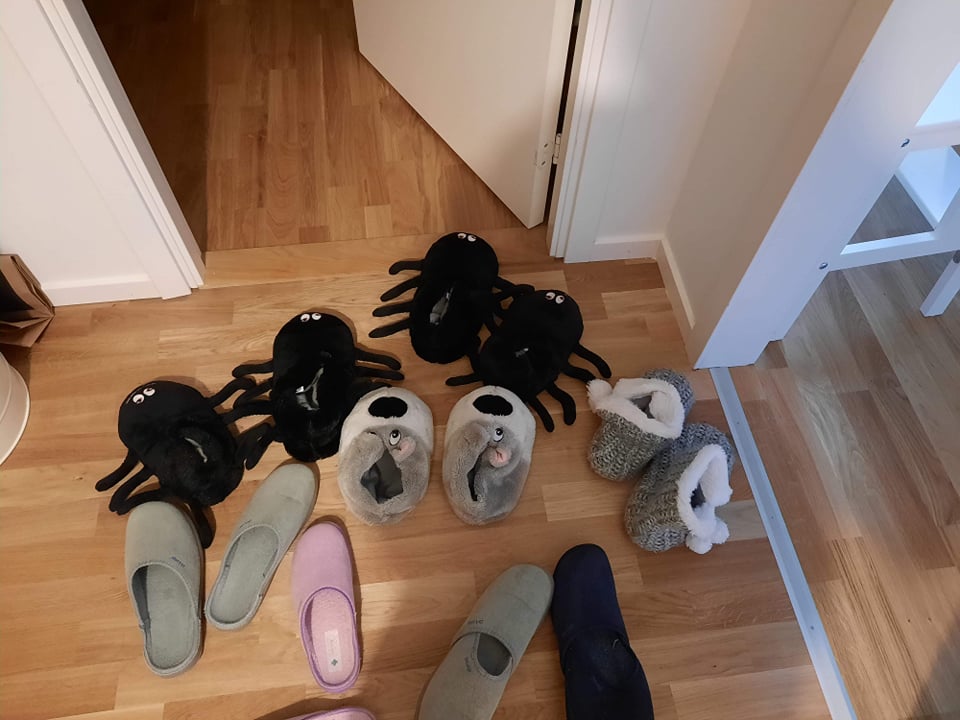 Croatians overseas: a tsunami of papuče
Croatians overseas: a tsunami of papuče
Vedrana: Our apartment here costs around 800 Euros per month. That includes water and payment for cleaning of the communal areas of the building. We pay extra for electricity, wifi and home insurance. Home insurance is mandatory. It costs around 100 Euros a year.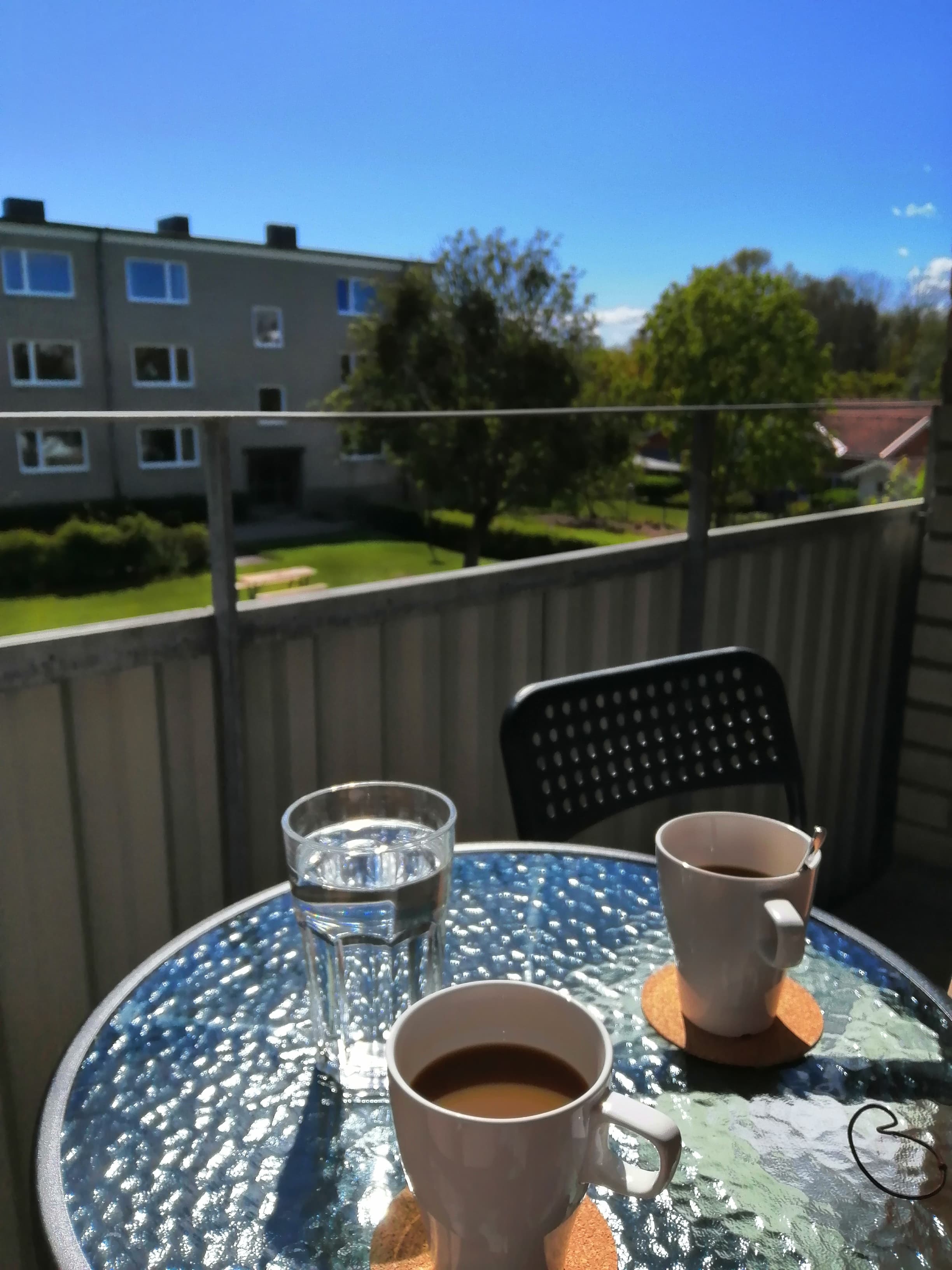
Marin: We came to Västerås because Vedrana's brother was here, but now he moved to another place. He helped us find an apartment when we first arrived. It's difficult to arrange an apartment from Osijek to Sweden with an agency - you actually have to be here. It's not something we could do online before we came.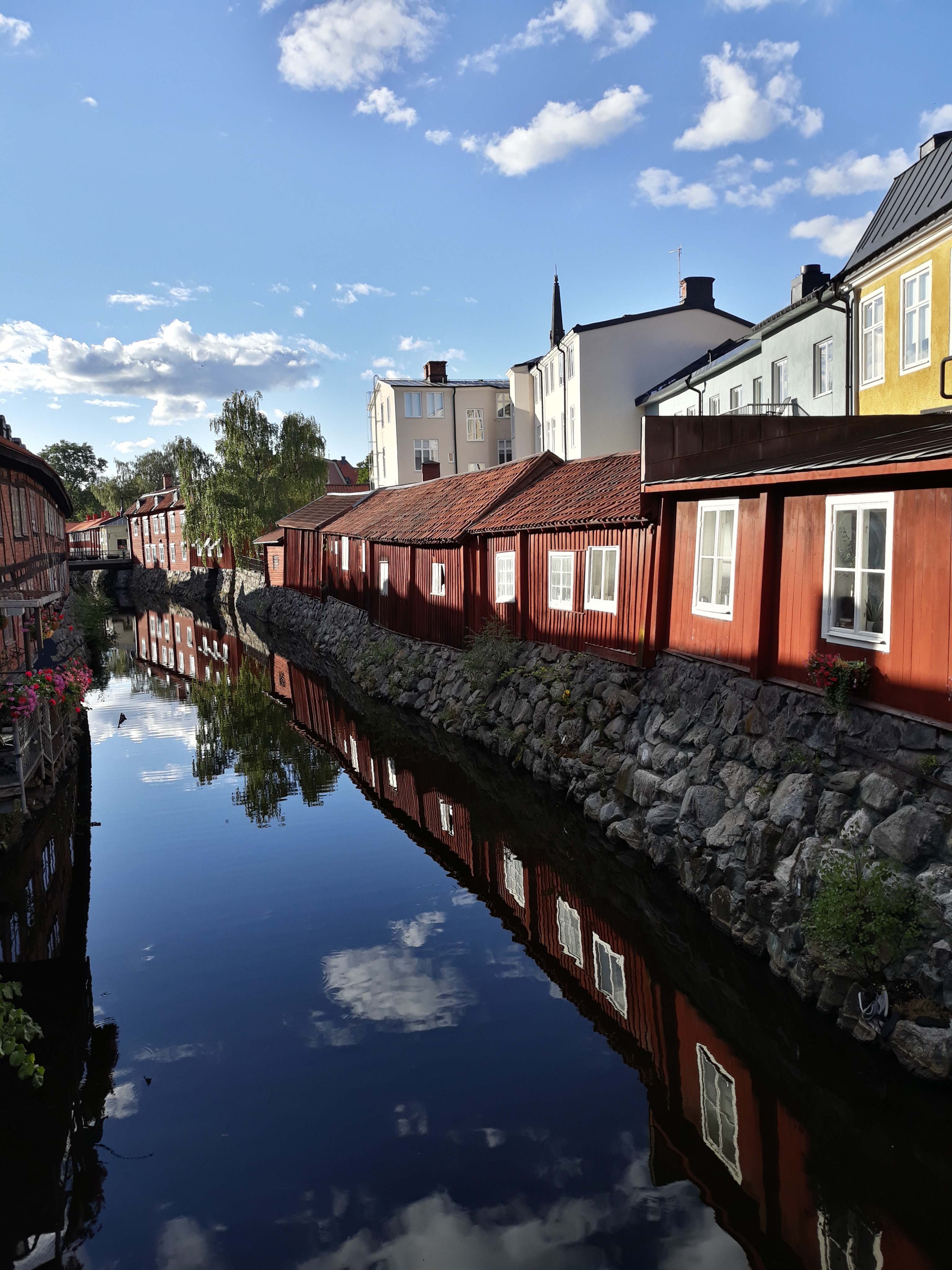
Vedrana: We were saving for around a year before we came, in preparation. We got around 30, 000 kuna. We spent it on travelling here, start up and the first apartment. My brother's wife worked in a company here and she made a recommendation for me and I started to work there. Then, I made a recommendation for Marin. Everything here is made with recommendations. Everything. Our company offers services. Anything you could think of. Home services, customer services. Sometimes you might be sent gardening, babysitting, fixing something in someone's home, painting a room, window or home cleaning, helping someone move house. Sometimes the client is a private individual, other times it's a company.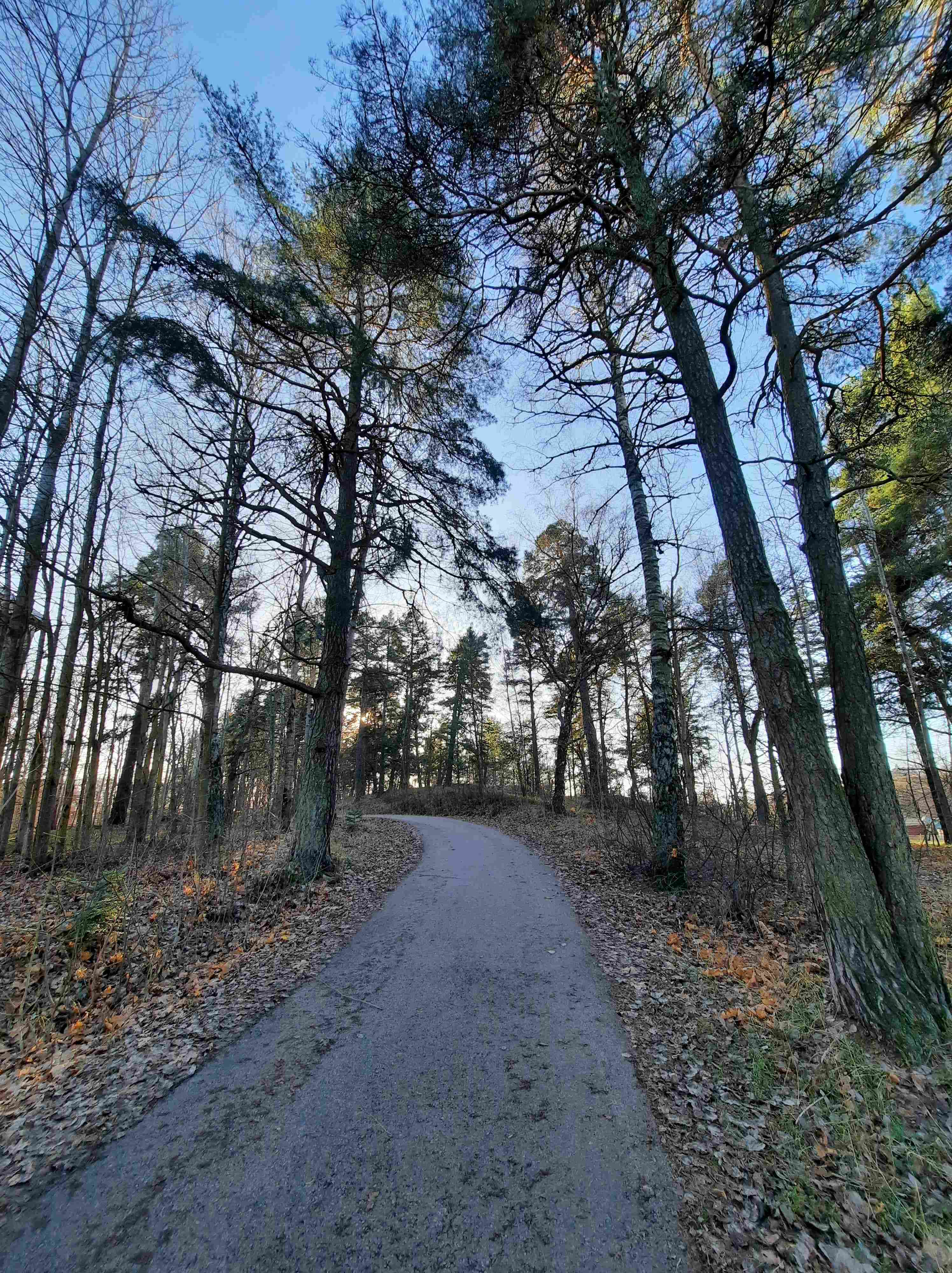
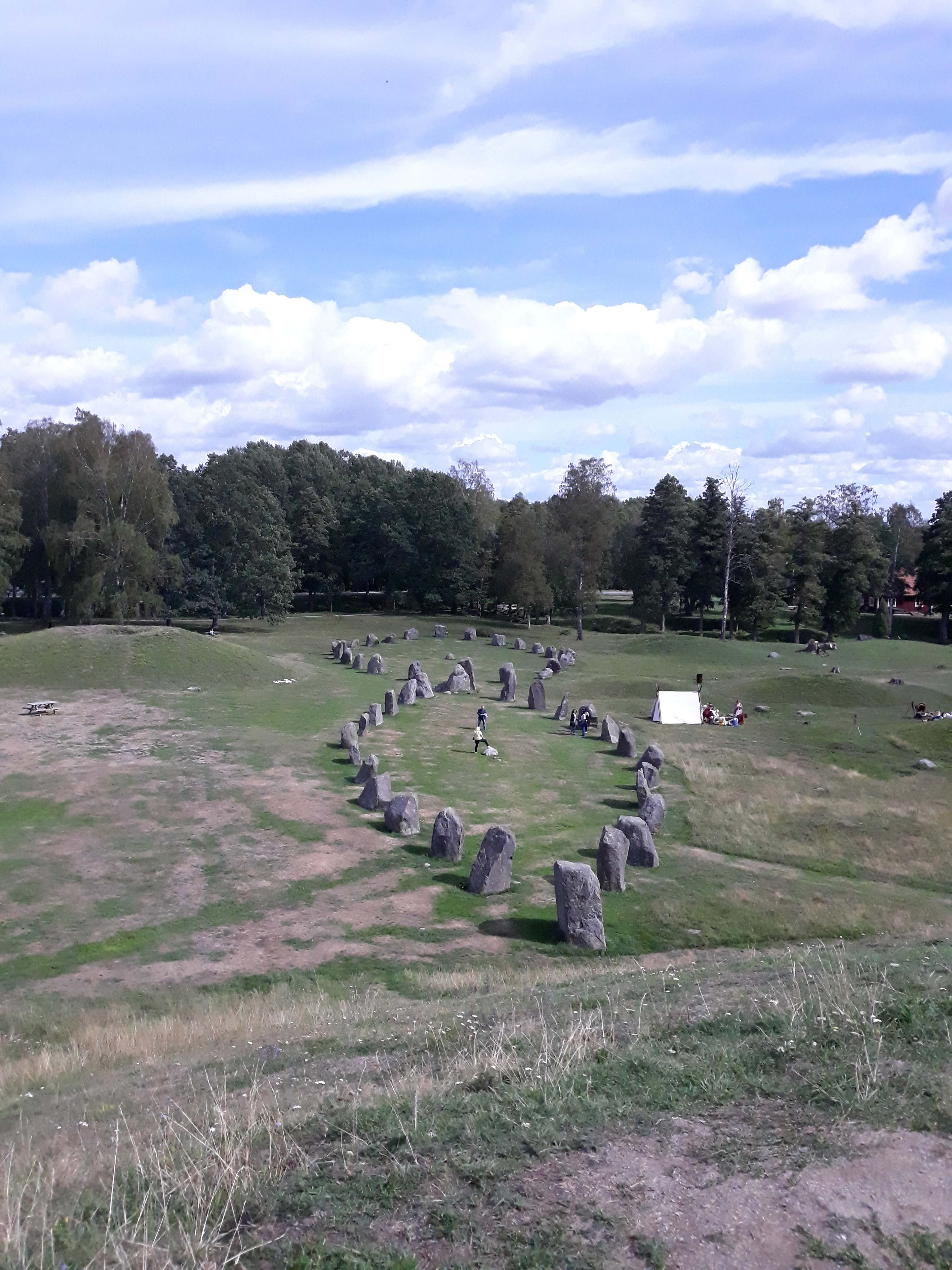 "We like going for walks here. The scenery is very different to Slavonia" Vedrana
"We like going for walks here. The scenery is very different to Slavonia" Vedrana
Vedrana: We don't work full time here. We work around 75% of a full-time job. So, it's part-time. But still we have enough money to live and much more than back in Osijek. In Osijek, for working in the store full time, I earned 400 Euros per month. As a waiter, Marin earned around 600 Euros per month, depending on tips. Here, after tax, we earn around 1200/1300 Euros each. Sometimes Marin earns more because he can drive and so he can be sent outside of the area to do jobs. He is paid for his driving time.
Vedrana: Around one week ago, I bought myself some boots for 200 Euros. I would never have been able to do something like that in Osijek. When we went food shopping in Osijek, we always went with a list. If you didn't have a big salary, like us, you have to count what you are spending. Here, we don't do that. If I see something that I like, I will buy it.
What jobs would you like to be doing there?
Marin: I would like to work as a graphics technician or as a waiter again. I like being a waiter, I like working in hotels. Of course, my dream job would involve driving a snowmobile all day.
Vedrana: I would like to be a care assistant, but I need to learn Swedish first and then go to school.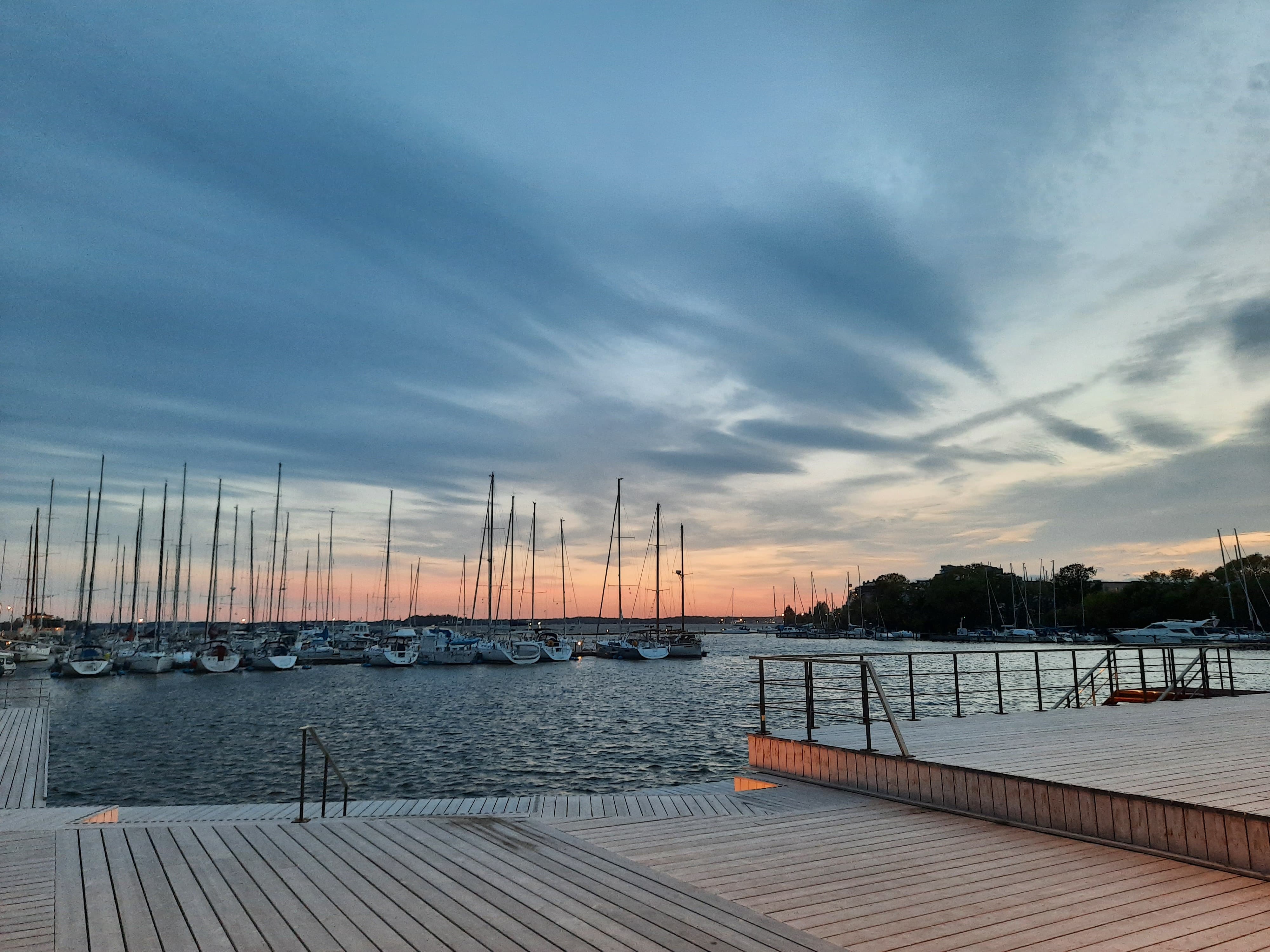
Marin: We had nothing when we arrived. We had two small chairs and we borrowed a thin mattress from her brother that we slept on. We bought pans, pots, plates, glasses and knives and forks first. Next, we bought a table and chairs. Then, we acquired a bed, we bought a sofa. After that, we stopped buying anything until we found an apartment that we could see ourselves living in for a long time. That's the one we are in right now, it's our third apartment here.
Did you meet any other people from the Balkans in Sweden?
Vedrana: Yes. I met a lady in an apartment agency. She took our ID details to check our backgrounds and when she saw our names, she said “Maksimovic? Where are you from?”, in English. When we said “Croatia”, she said “Pa mozemo i ovako pricati (well, we can talk like this)”. She was from Sarajevo. She came here 10 years ago. Another time, I went to a woman's apartment to work for the day. As a client, she already had my name and details. When she opened the door, I said hello and asked if she spoke English. She replied. “Možemo pričati na našem”. Her name is Elena and she is from Belgrade. We still see her sometimes, she is nice. She's been here around 20 years.
How difficult it is to learn Swedish?
Vedrana: It's really hard.
Marin: It's easy. I started when we were still in Croatia, just to get some basics. A few months ago, we started school. I learned English and German in both elementary and secondary schools. You can see the associations of those languages with Swedish.
Vedrana: The accent is difficult. You must make different sounds with your mouth than we have in Croatian. It's a very beautiful language when you hear it. It's not like German.
Marin: They sound funny when they talk. It sometimes sounds like they are singing.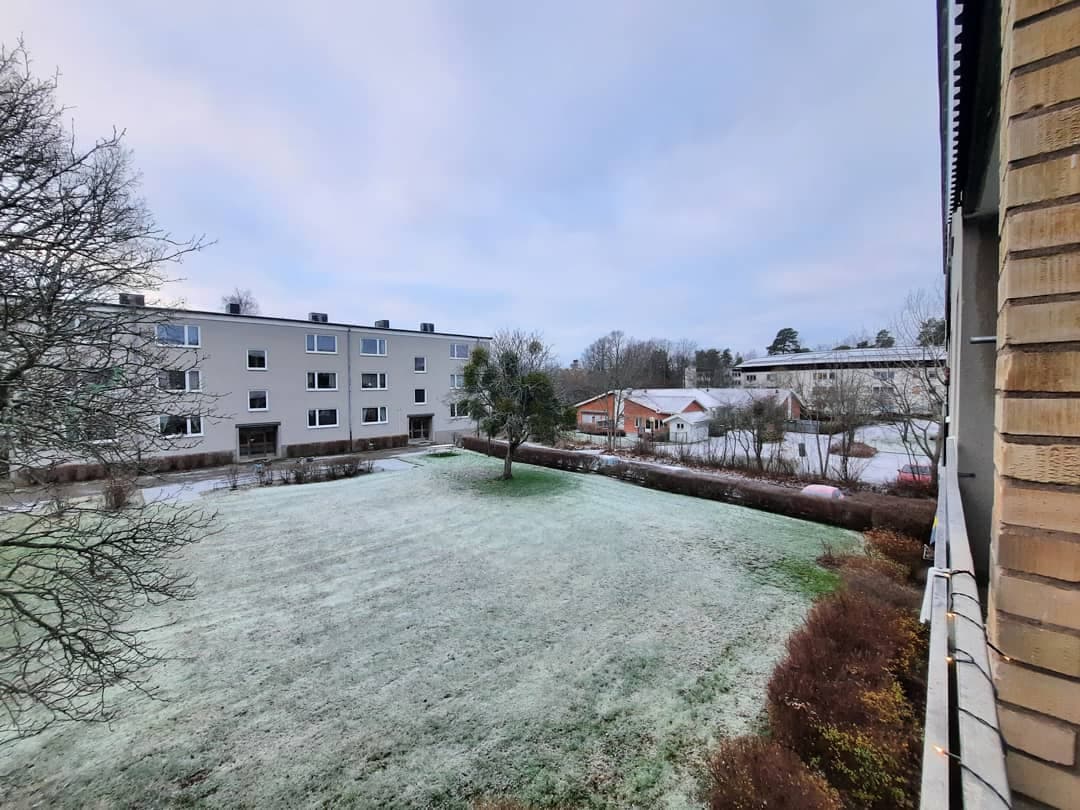
Would you move to a different city in Sweden if the right job opportunity was offered to you?
Vedrana: Yes. I would like to go to Gothenburg or Stockholm. It's more urban there, more to see and do, and more opportunities.
Marin: I would like to go to the north of Sweden. It's even colder and more remote there. And more snowmobiles. But, they only do mining there, and I don't know how to mine, so I'm not sure if I could find something there.
How different is the food in Sweden?
Vedrana: We don't eat meat, so we got used to cooking for ourselves at home before we moved from Osijek to Sweden. So, we haven't noticed a big change in what we eat. We do both eat fish. The kinds of fish you can buy here are really different. We sometimes eat salmon steaks. You never really saw those much in Osijek. Salmon is not so expensive here like it is in Croatia.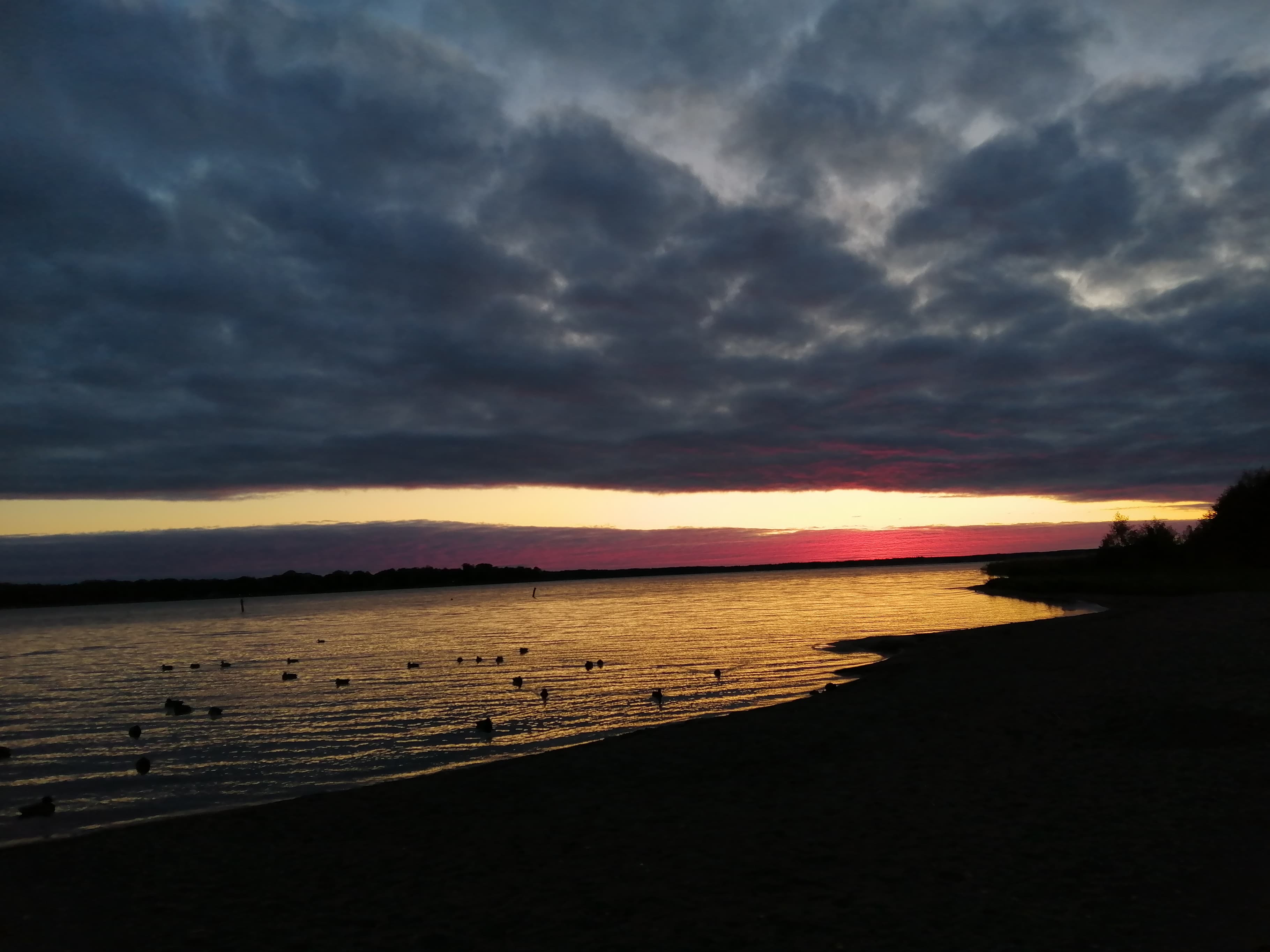 "In the summertime, it is light all the time. The sun comes up around 3am and stays up until 11pm, but there is light all the time. I like it. I don't have trouble sleeping through it. Marin did, at first. In winter, there is no sun. It gets lighter around 9am and that lasts until around 3pm. But, there is no sun. It's like that from late October until March" Vedrana
"In the summertime, it is light all the time. The sun comes up around 3am and stays up until 11pm, but there is light all the time. I like it. I don't have trouble sleeping through it. Marin did, at first. In winter, there is no sun. It gets lighter around 9am and that lasts until around 3pm. But, there is no sun. It's like that from late October until March" Vedrana
Marin: People are a lot calmer here. Driving is different. There are not so many cars on the road in Osijek, but here, nobody sounds their horn at you or sticks their middle finger up at you because they don't like the way you drive. Nobody seems to be in a rush.
Marin: Alcohol is expensive here if you go to a bar or club. In Osijek, you pay maybe double the price for beer in a bar that you would in the supermarket. Here, the beer you buy for 15 kronas in the store you would pay 70 kronas for in a bar. But, it's not so expensive to go out if you work full time.
Vedrana: Here, you cannot buy alcohol in a store or a supermarket like back home. You have to go to the special Systembolaget store to buy it. You must be 20 years old, it closes at 8pm in the evening, it closes at 3pm on Saturday and is closed on Sunday.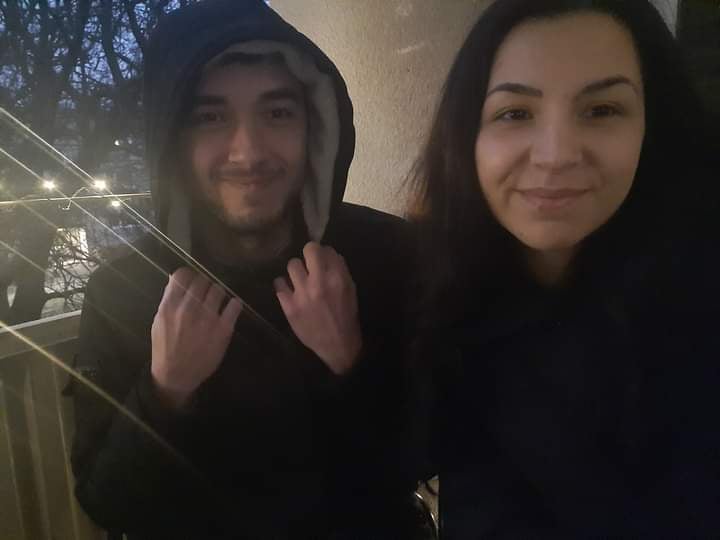
Marin: When you move from Osijek to Sweden, you can meet people from all over the world. It's not like Slavonia. We have neighbours from India. We speak together in English. We have a friend from Sri Lanka. I met a guy at work who is from Africa.
Do you ever regret moving from Osijek to Sweden?
Marin: Not sure yet. We don't regret it, but sometimes we feel nostalgic. But we realise that is amplified by this COVID situation – there's just not been any opportunity to travel back home and visit family and friends.
